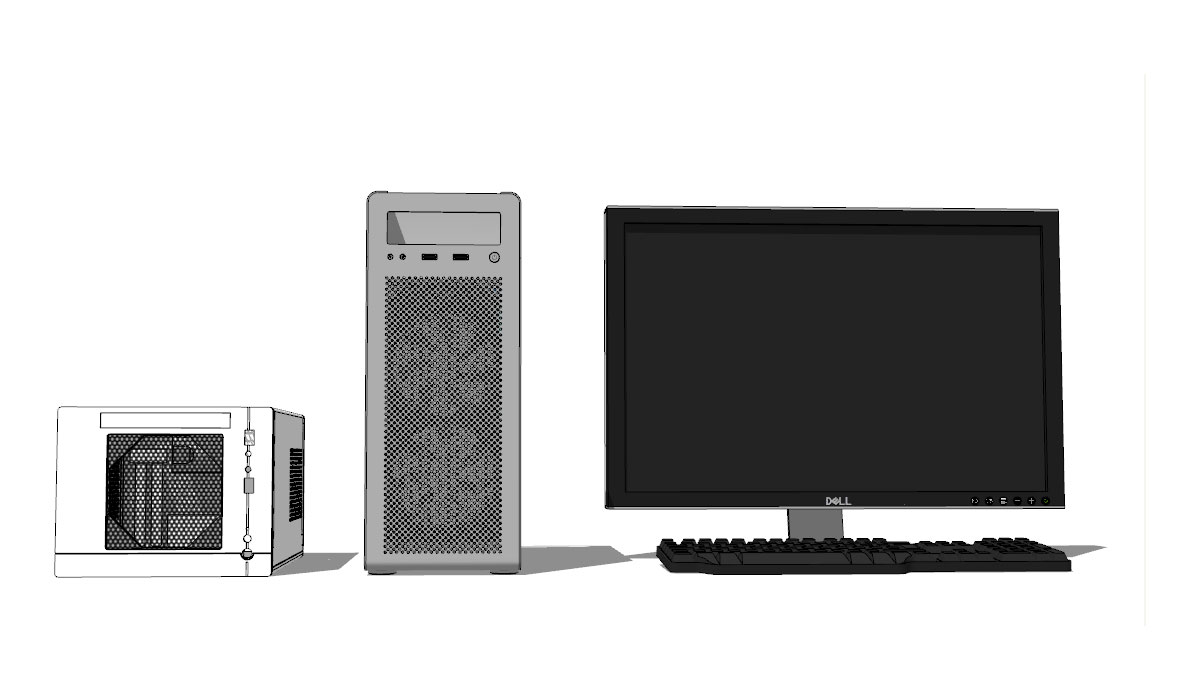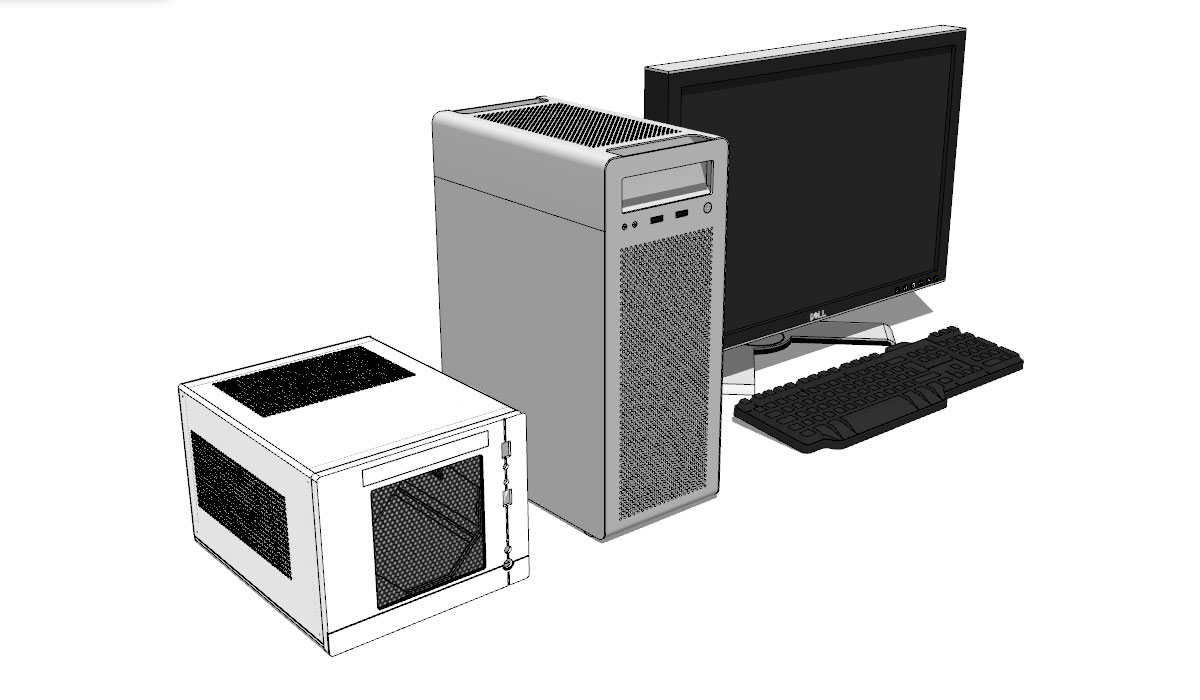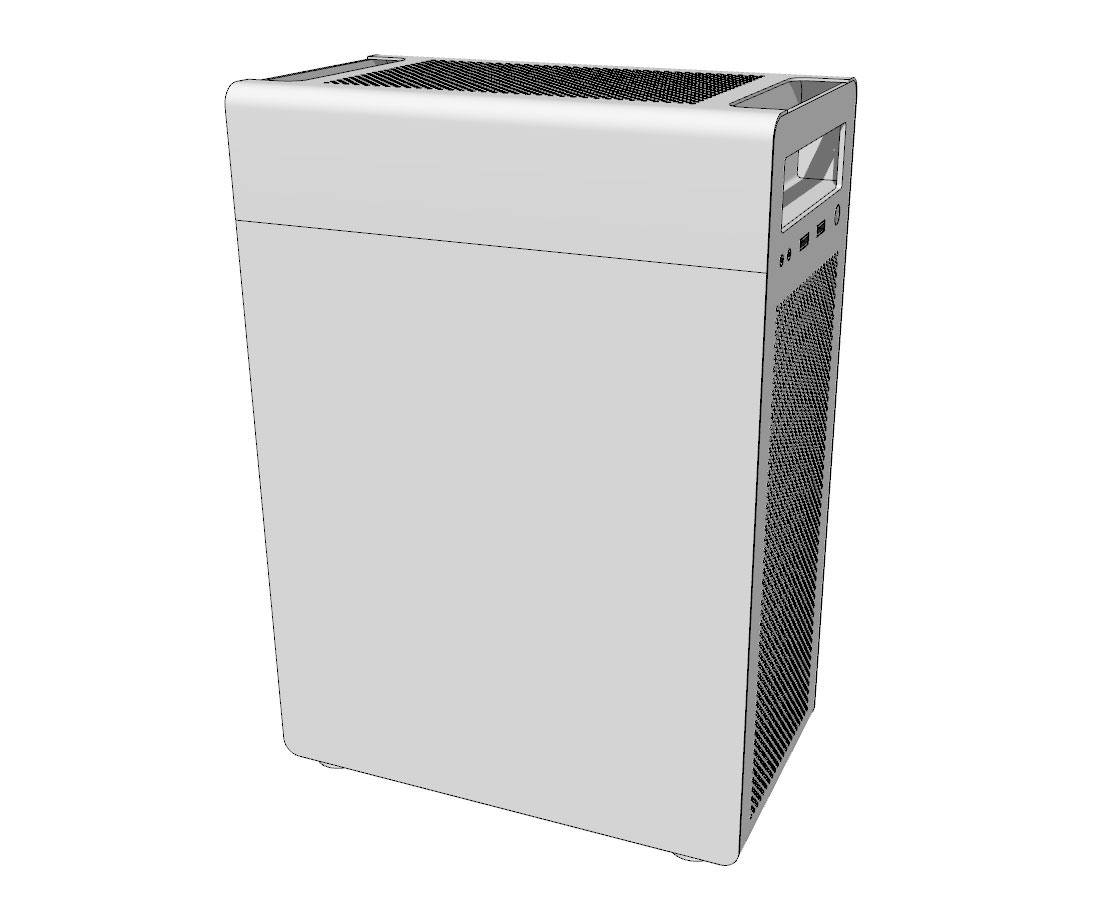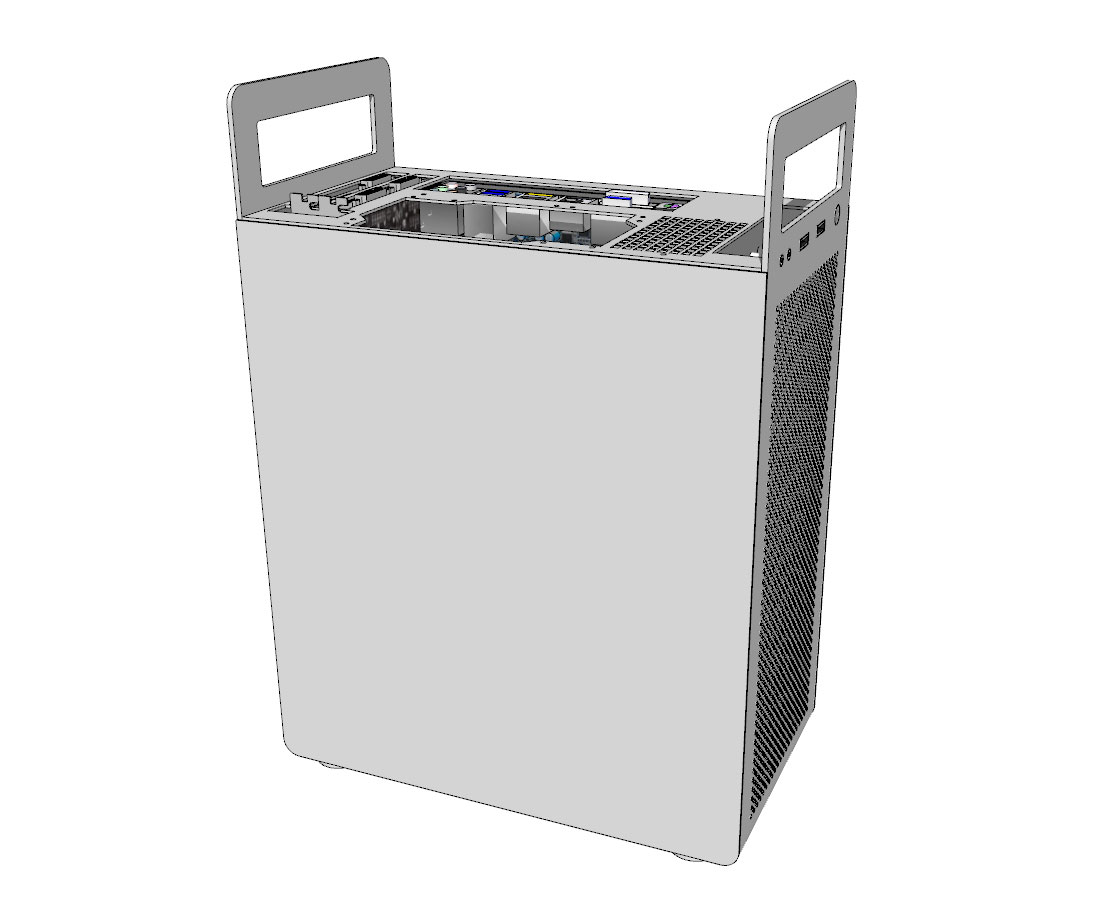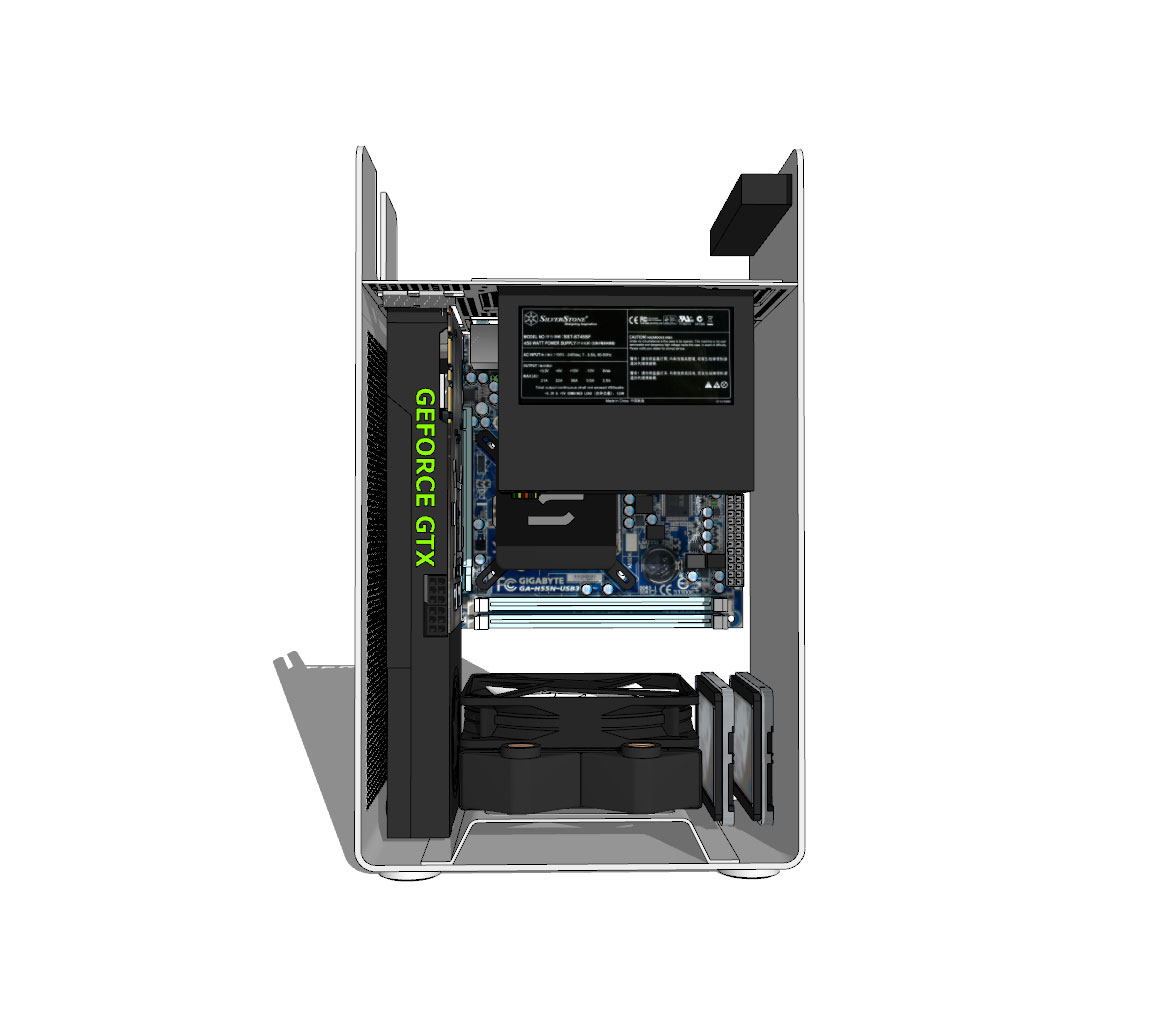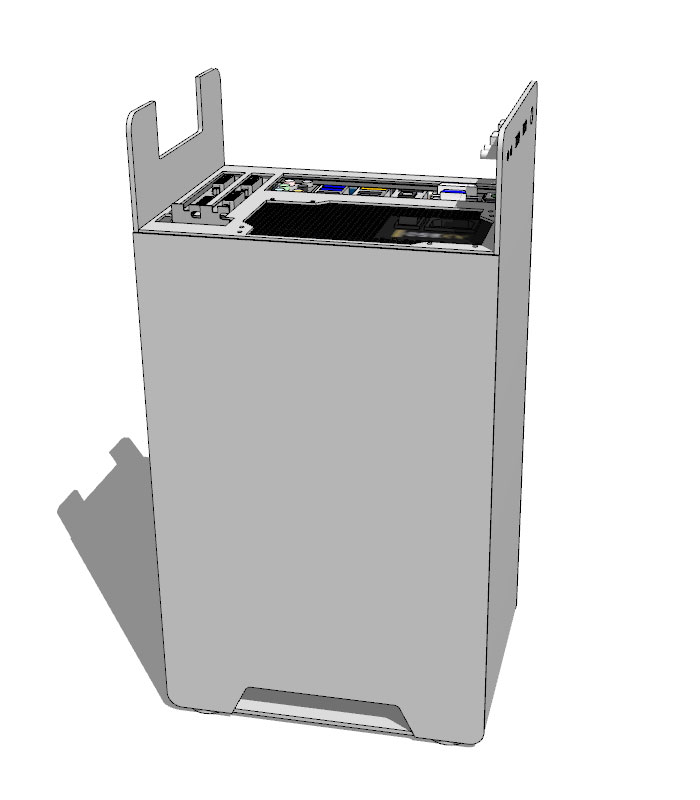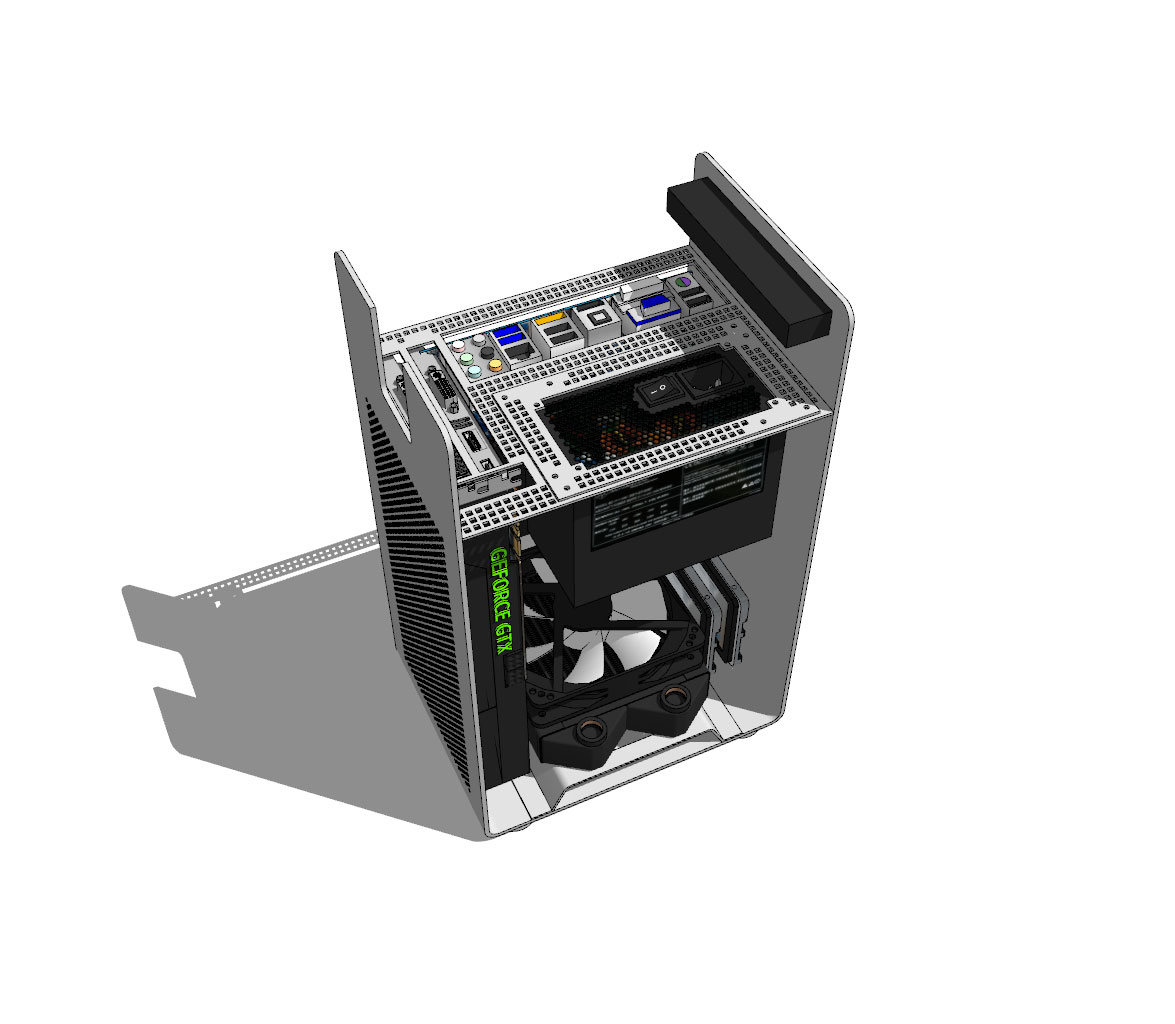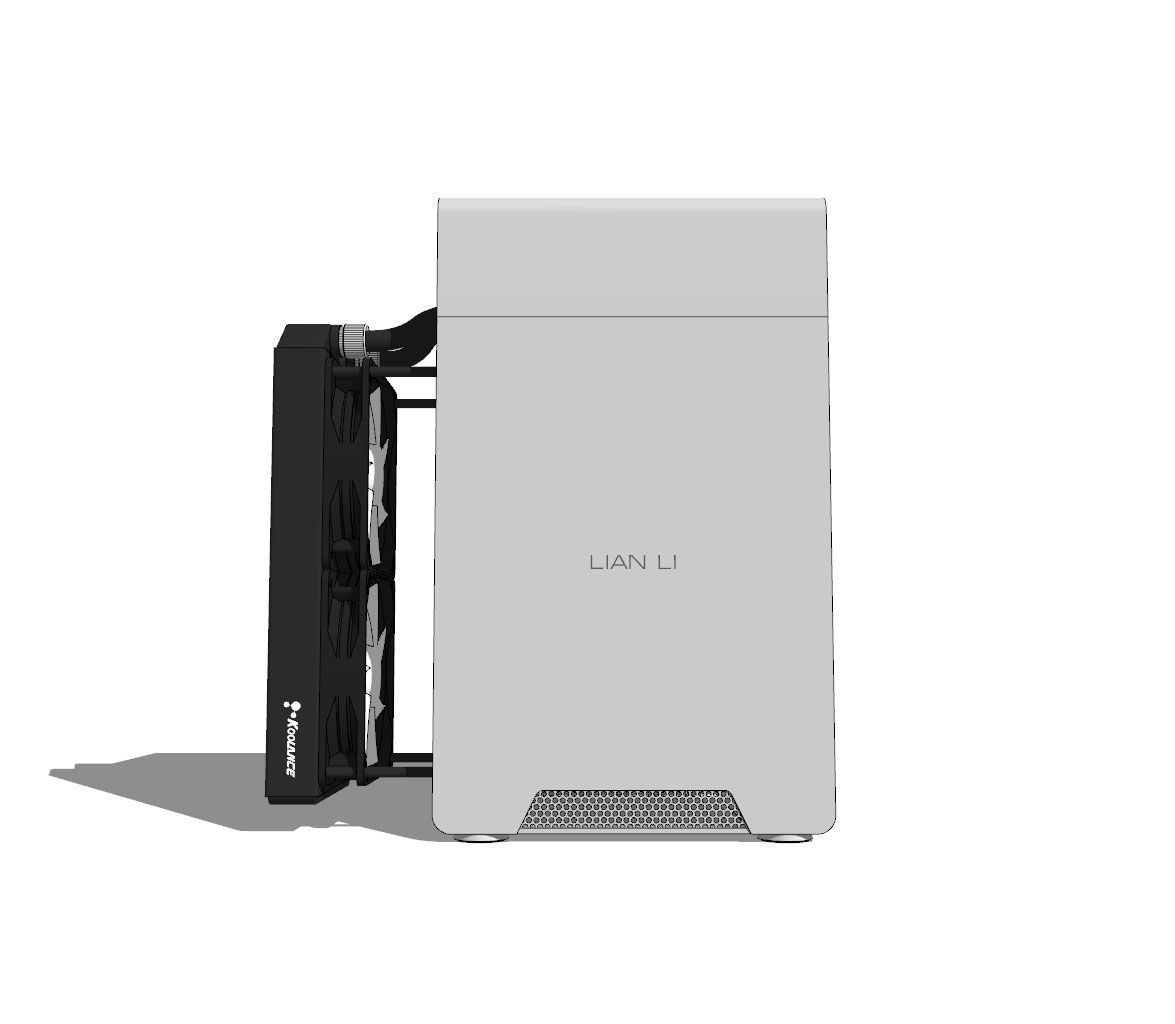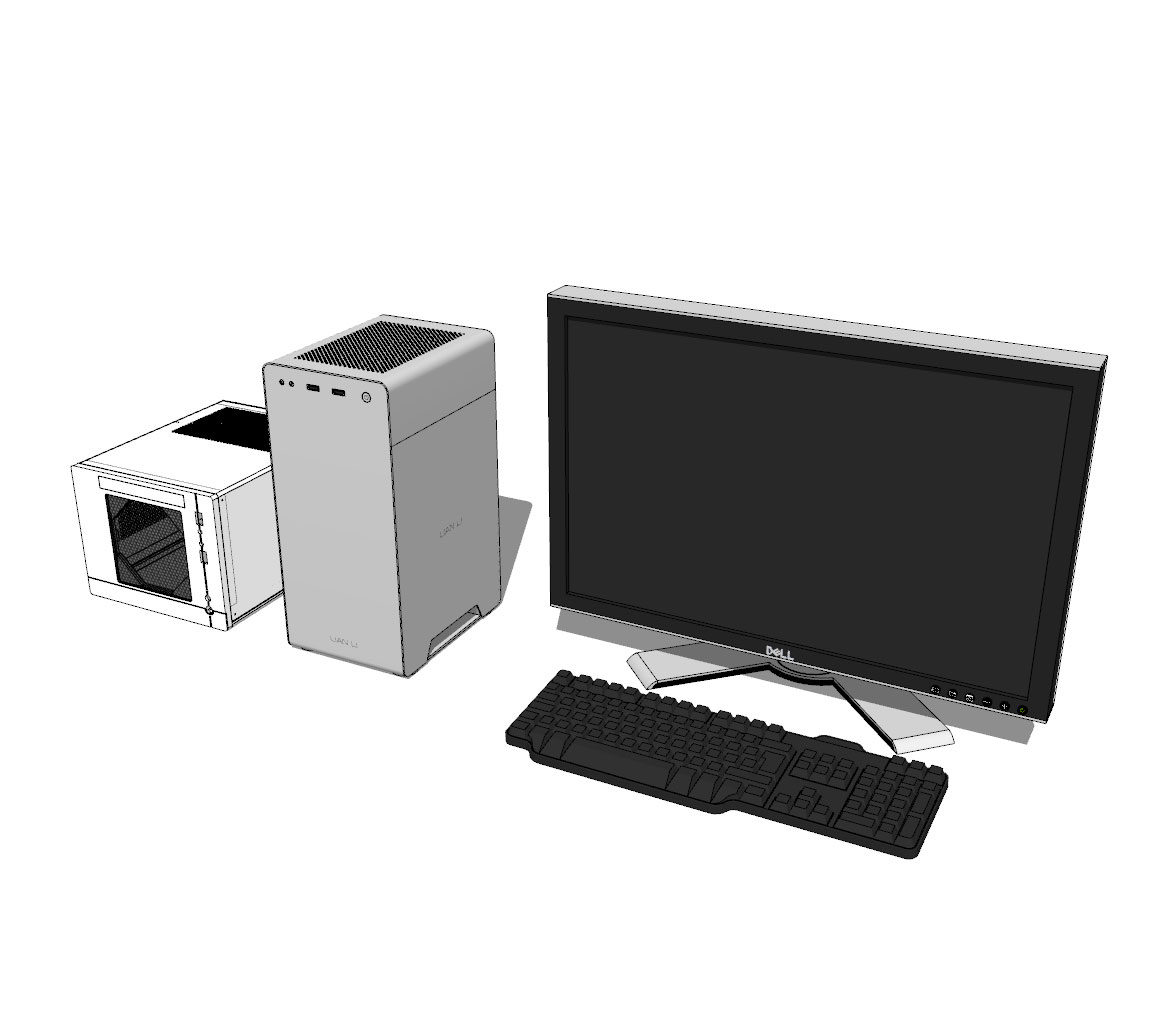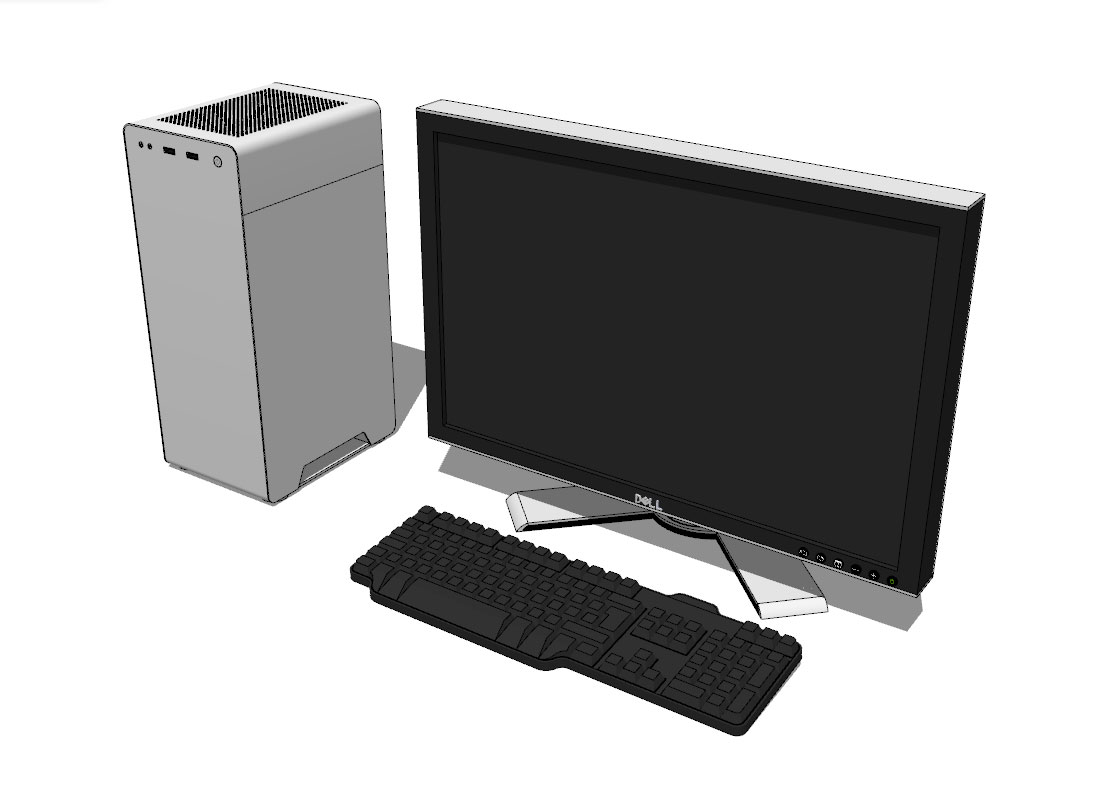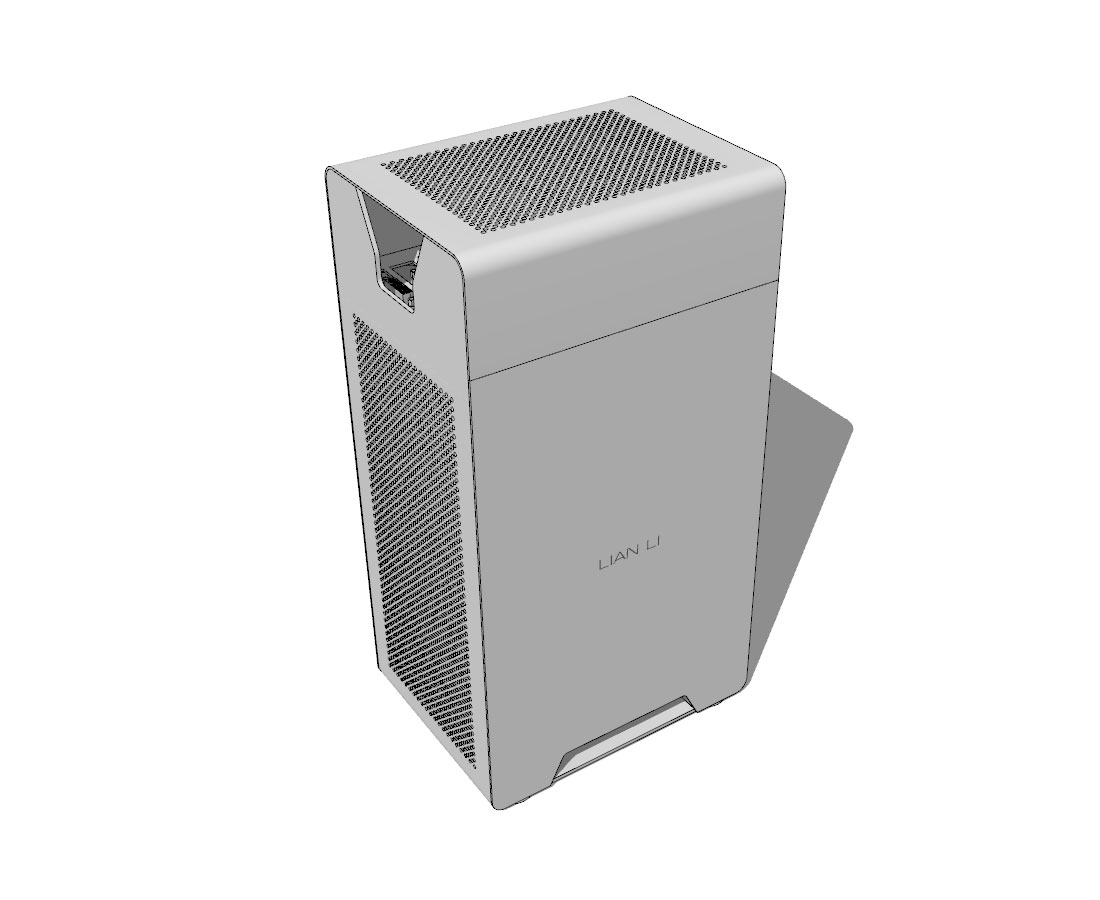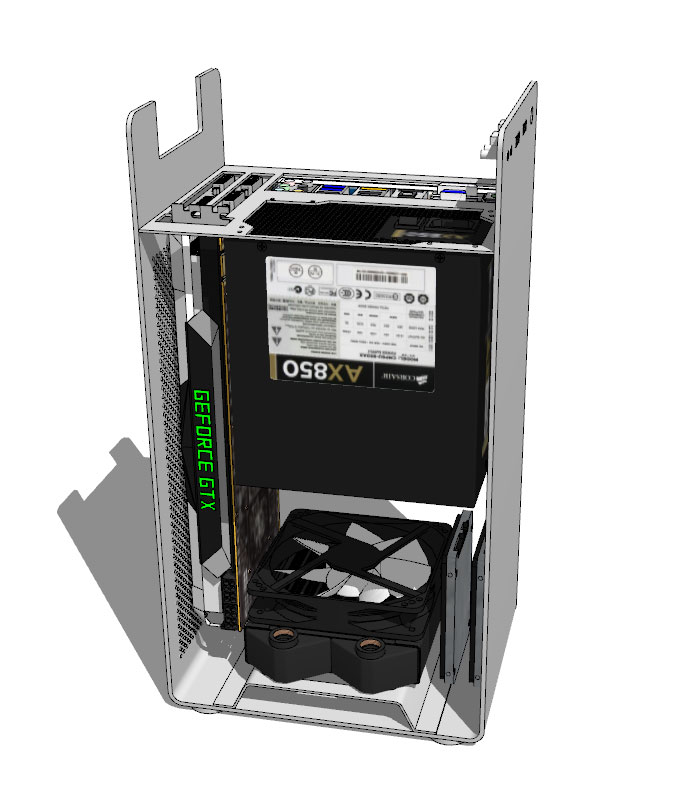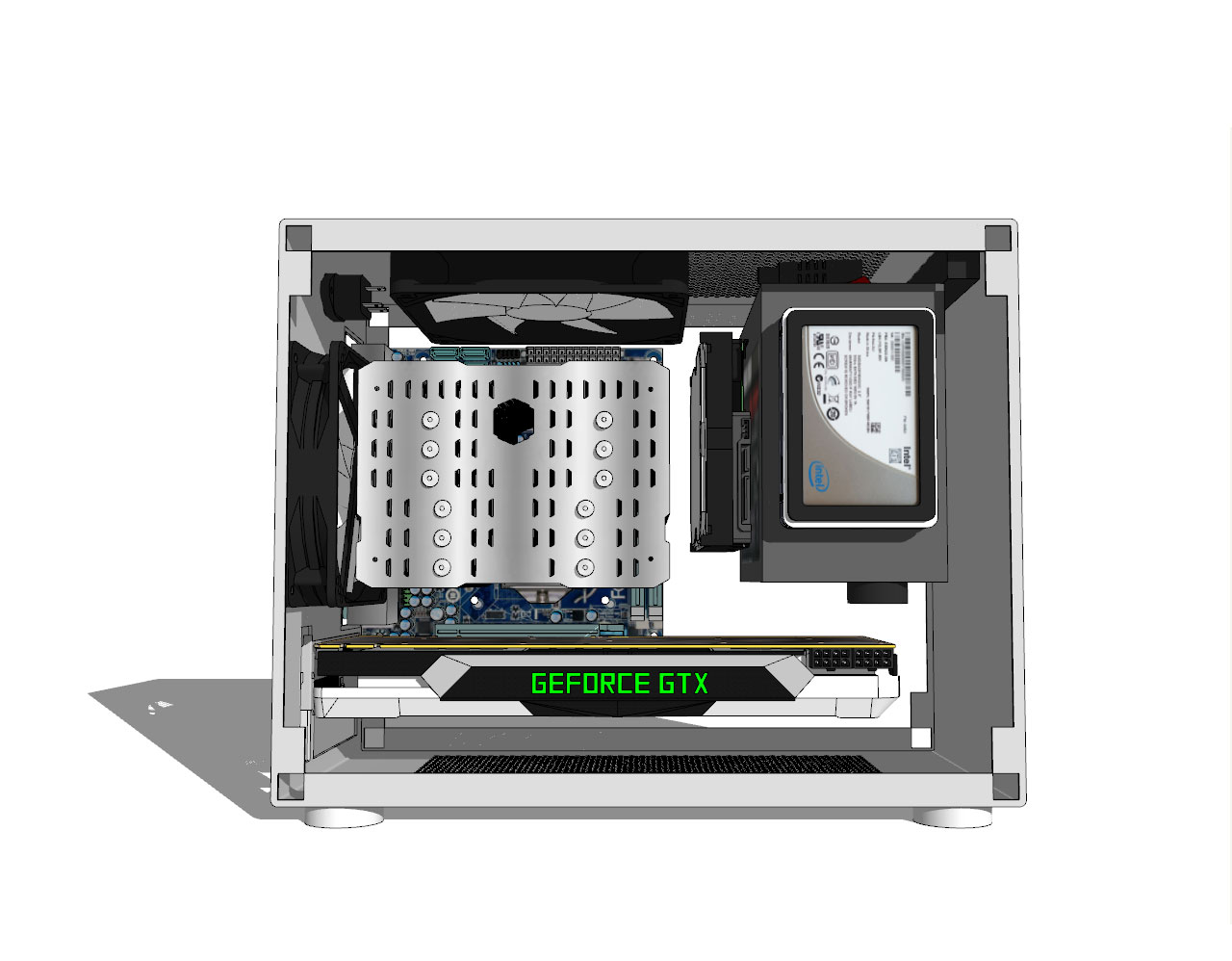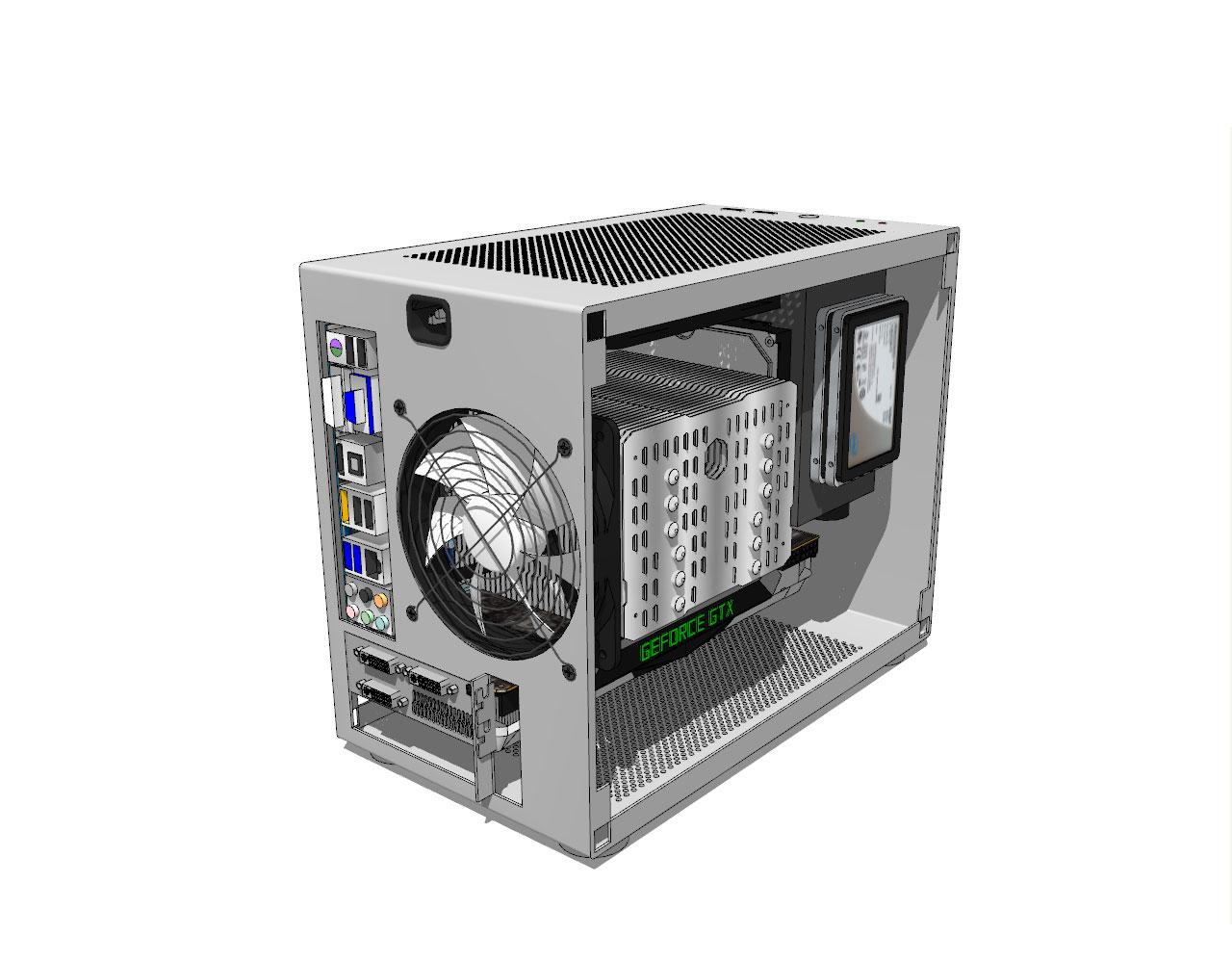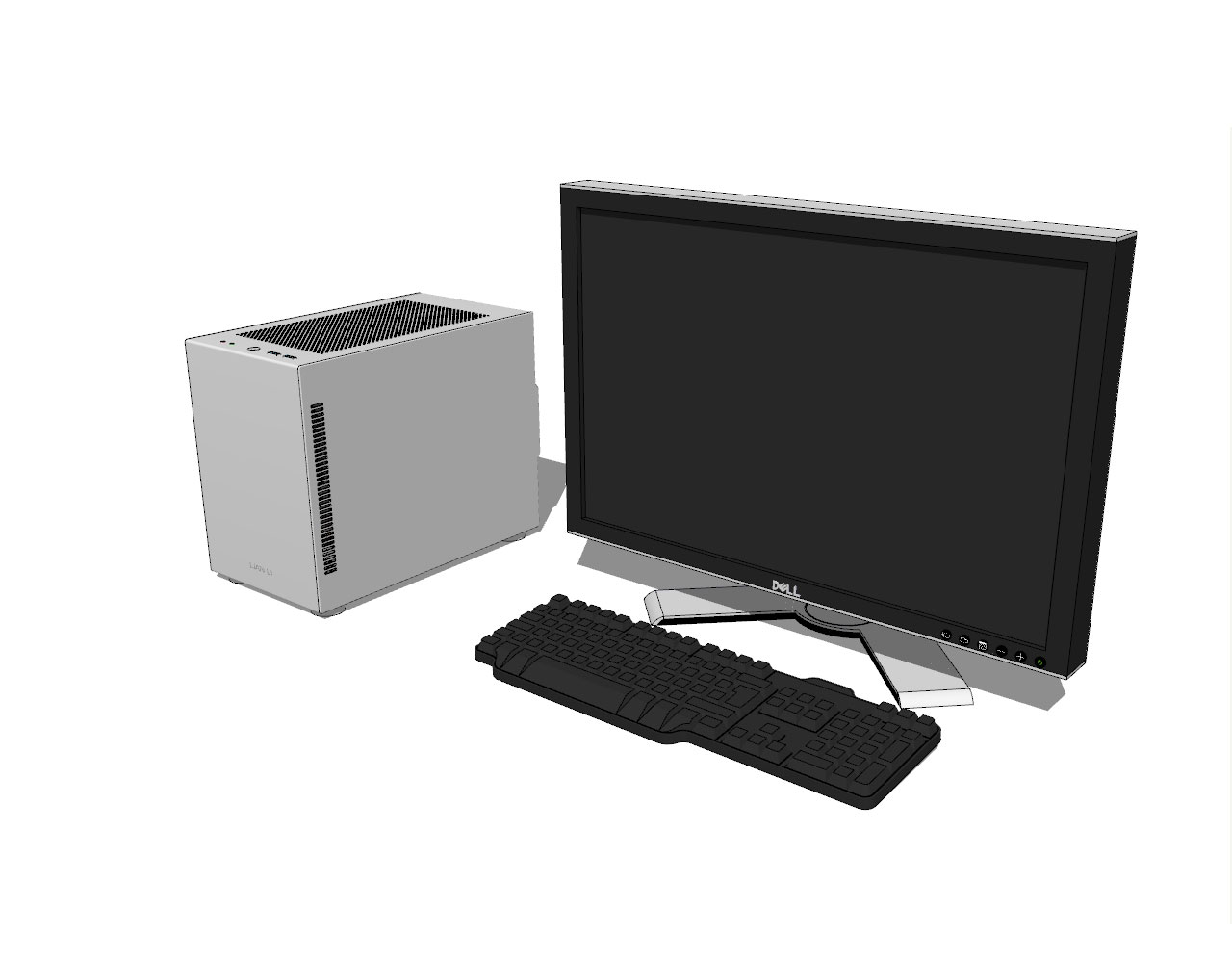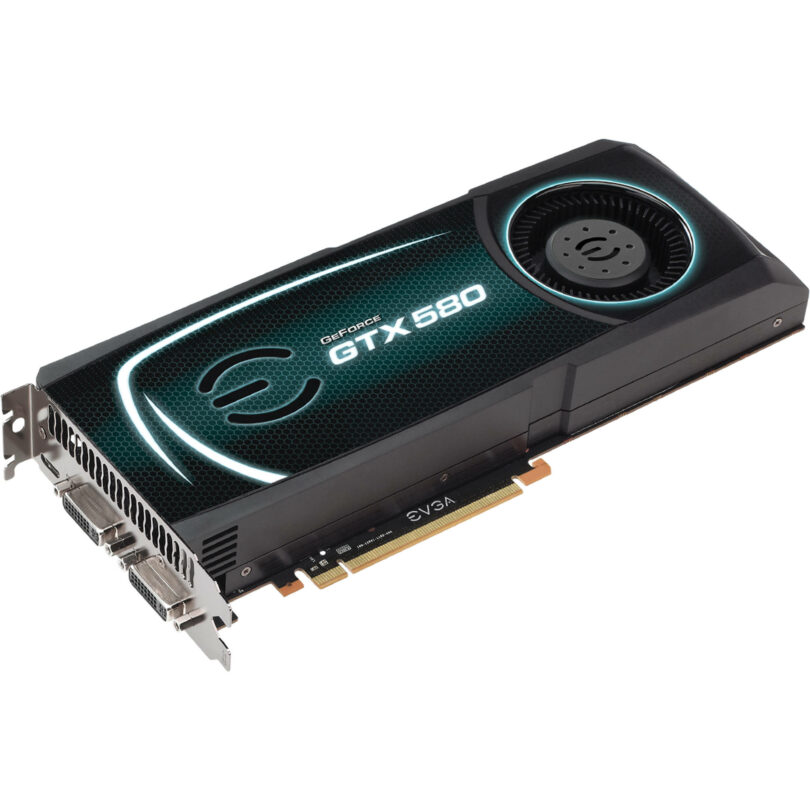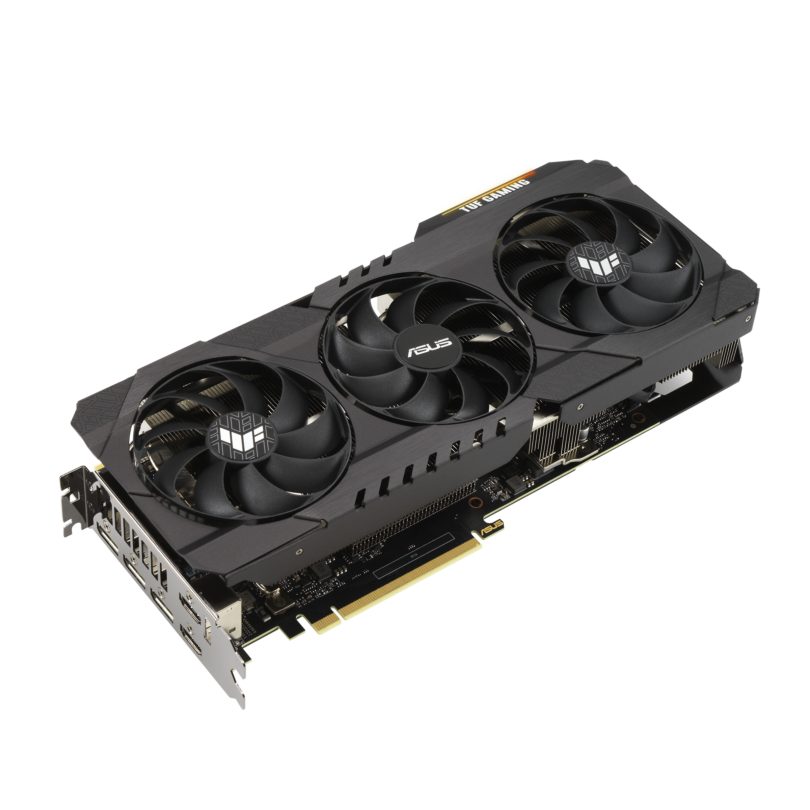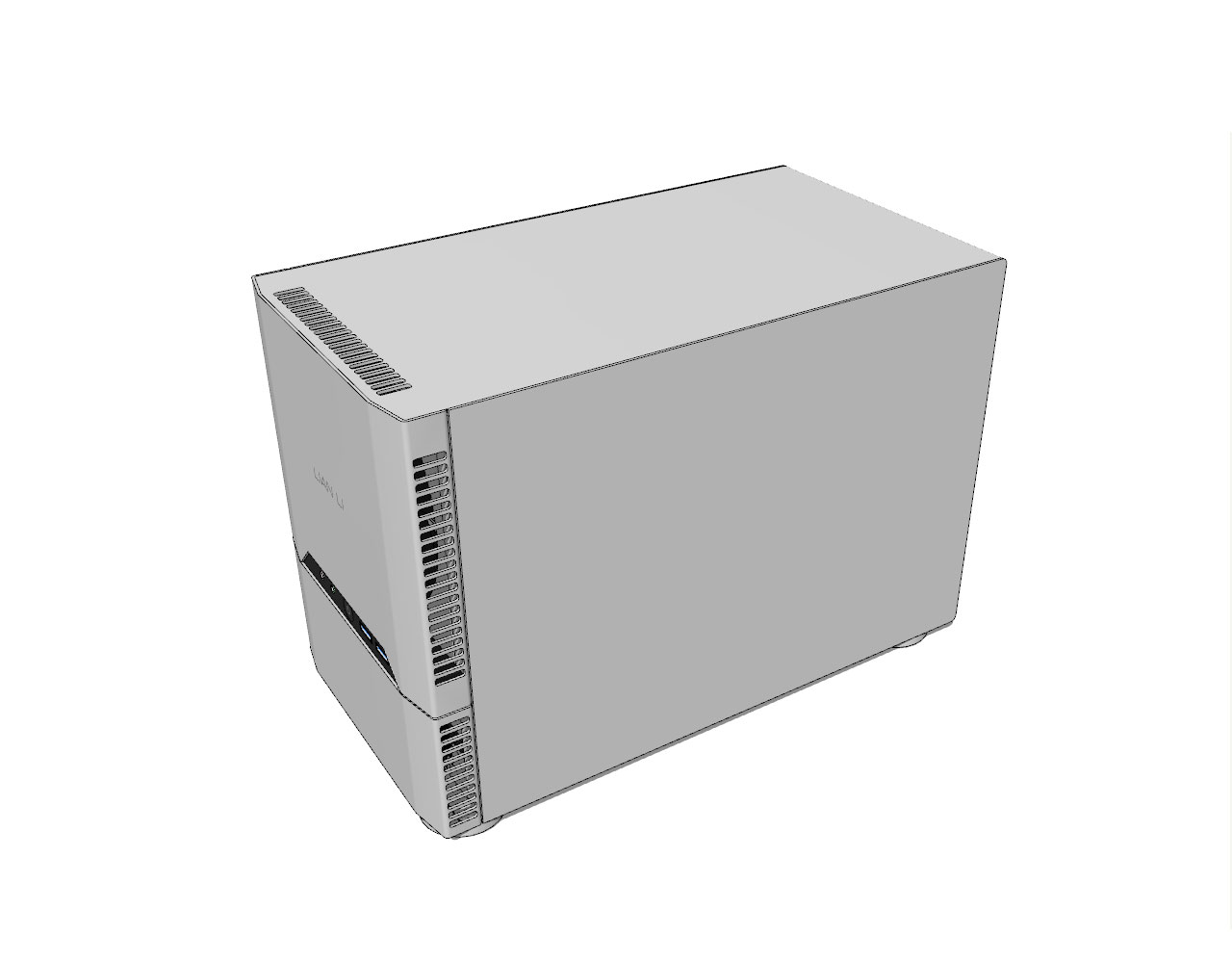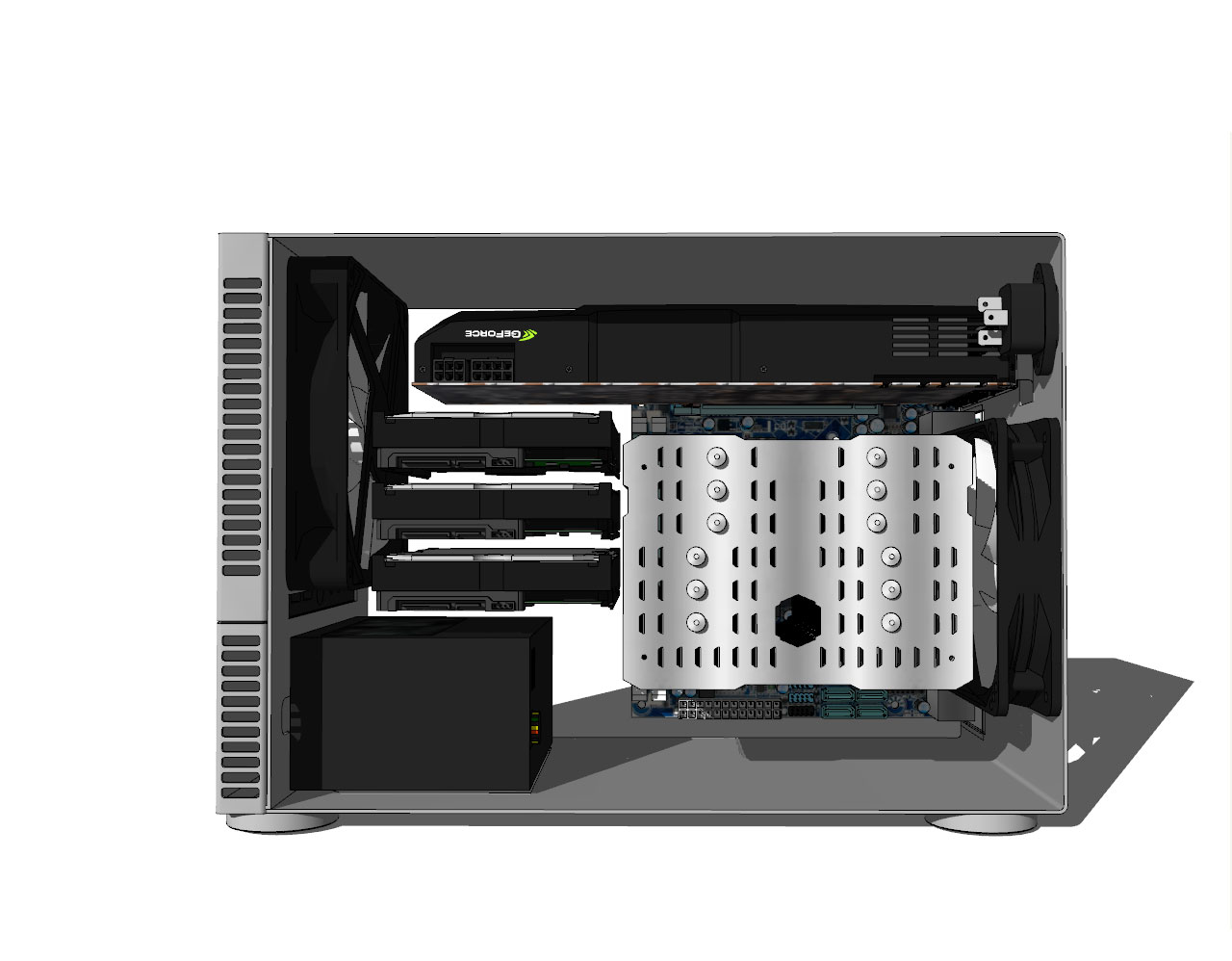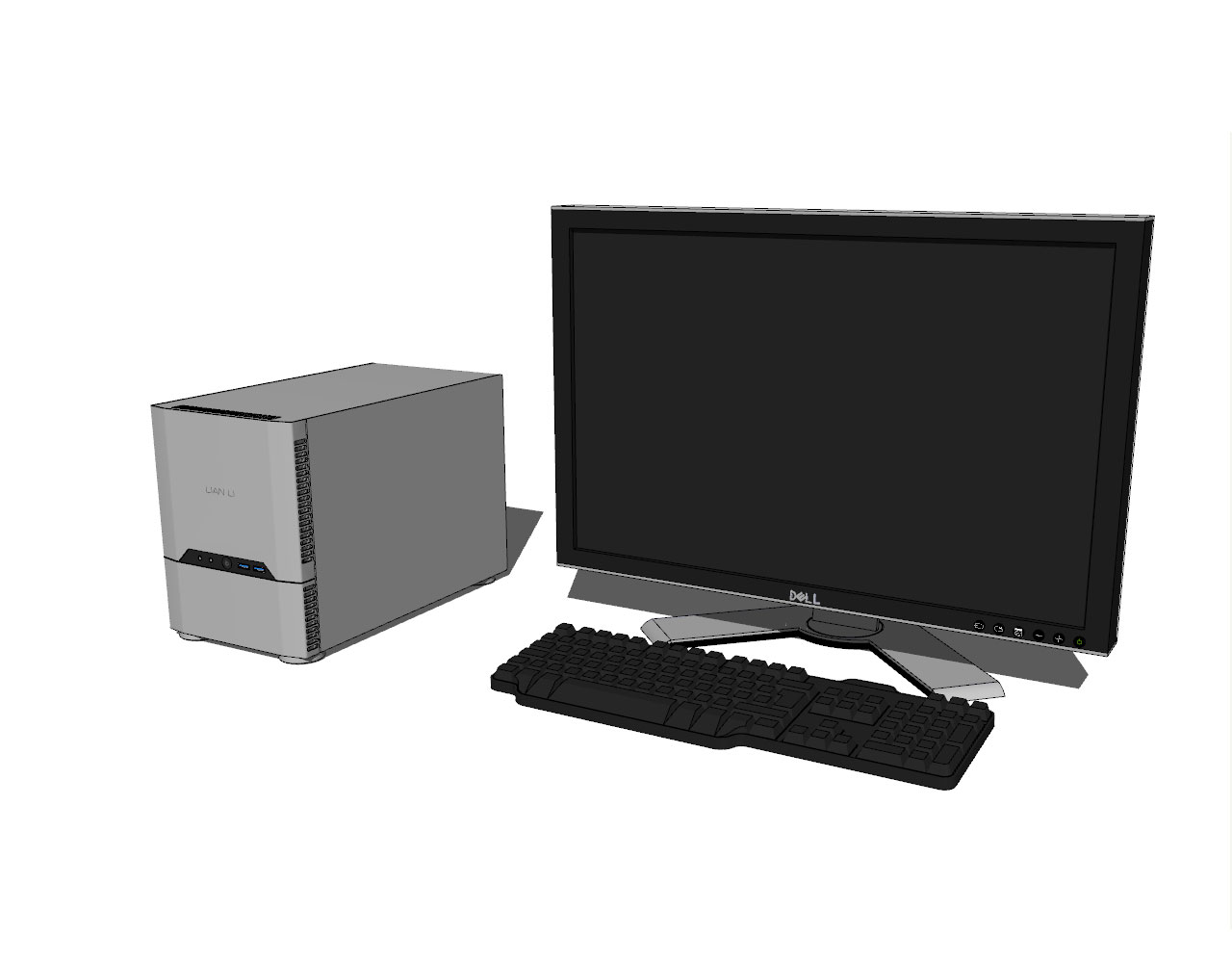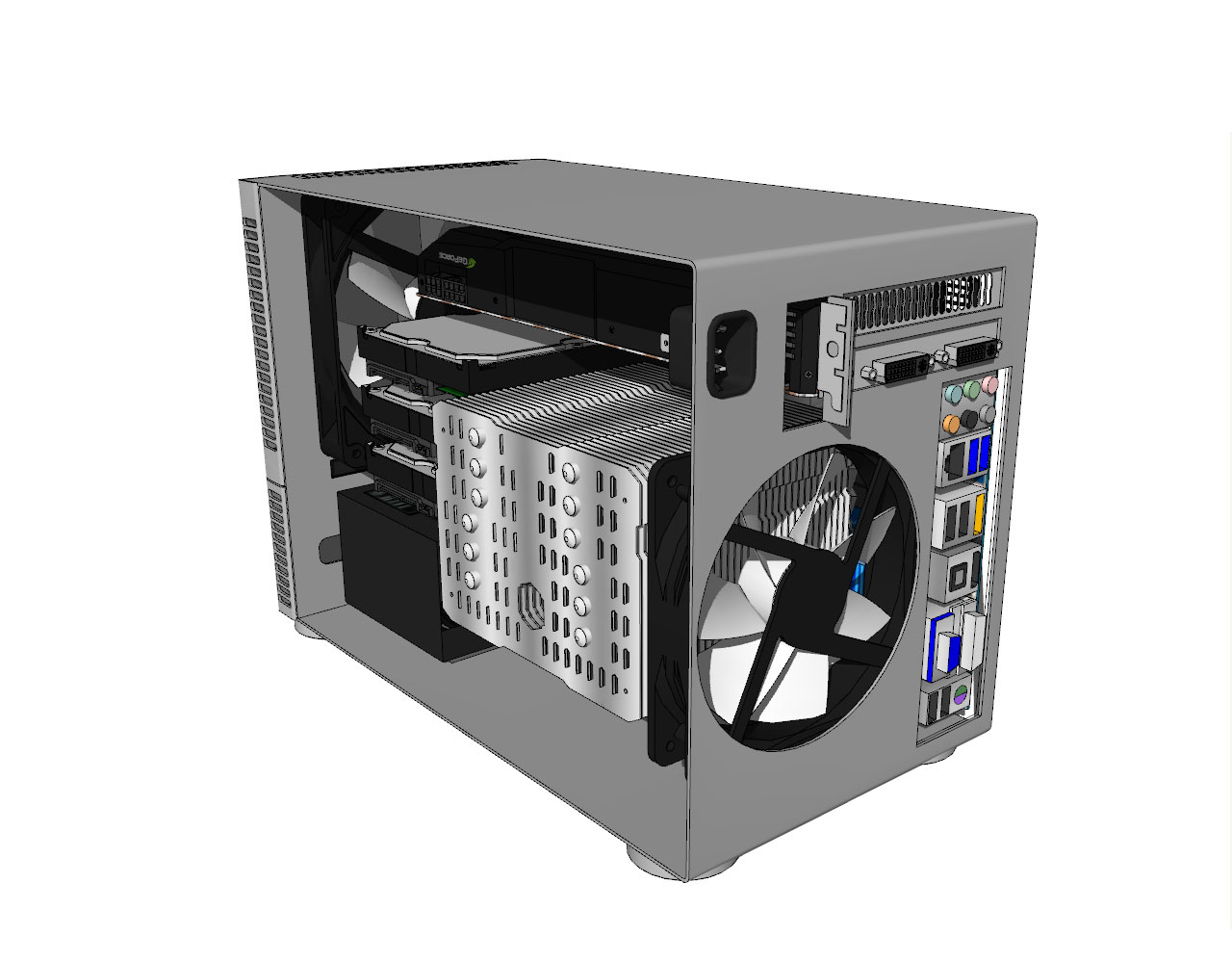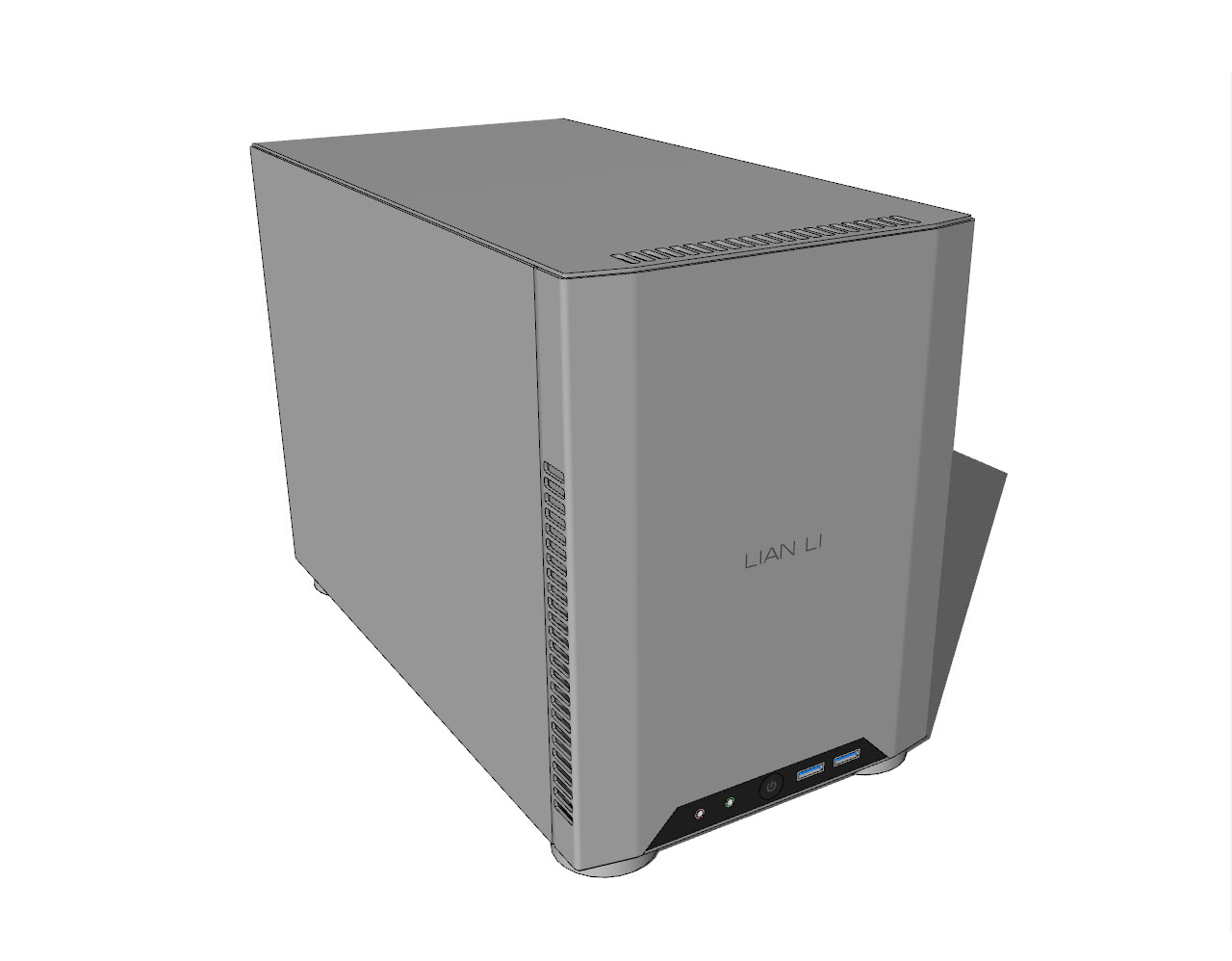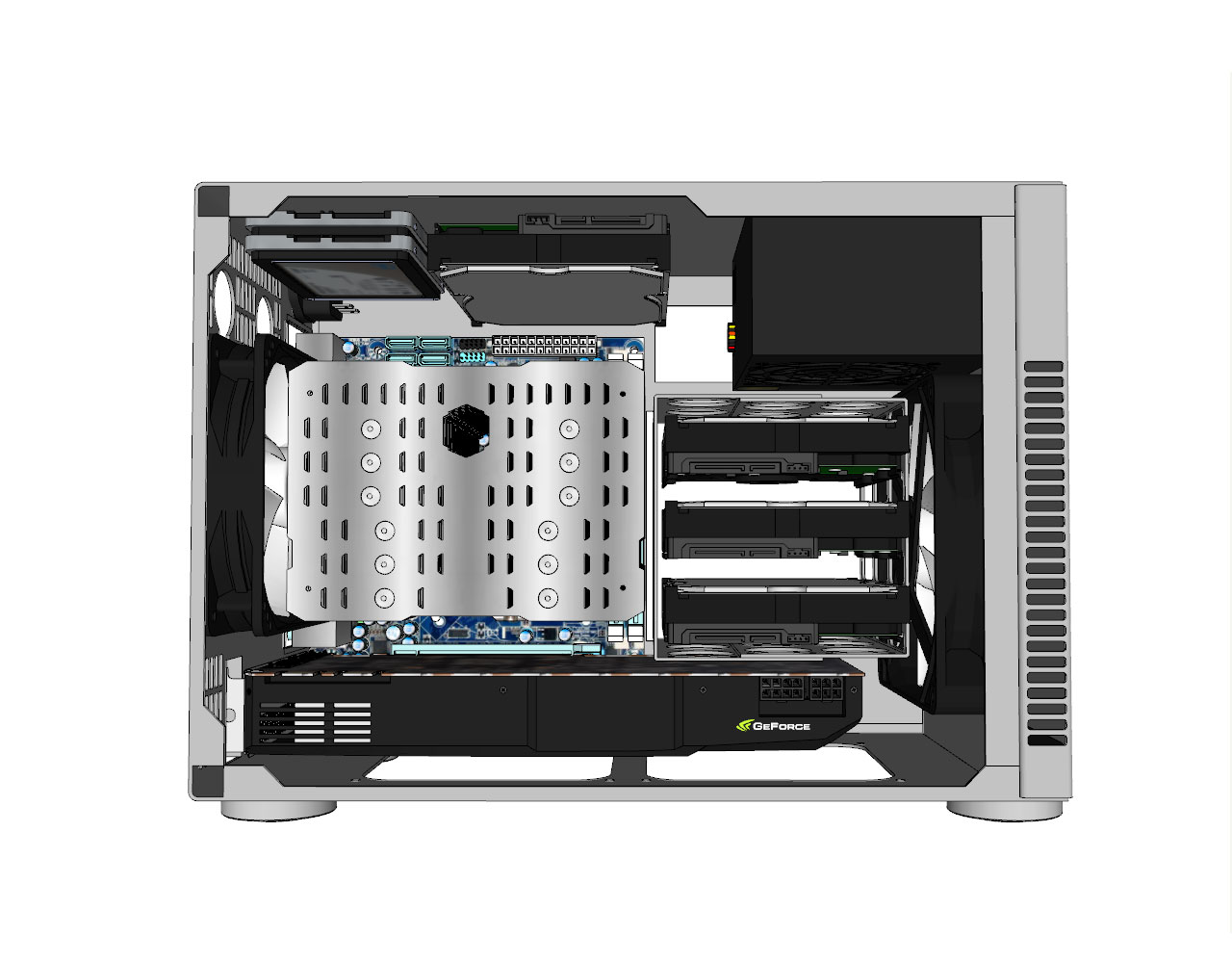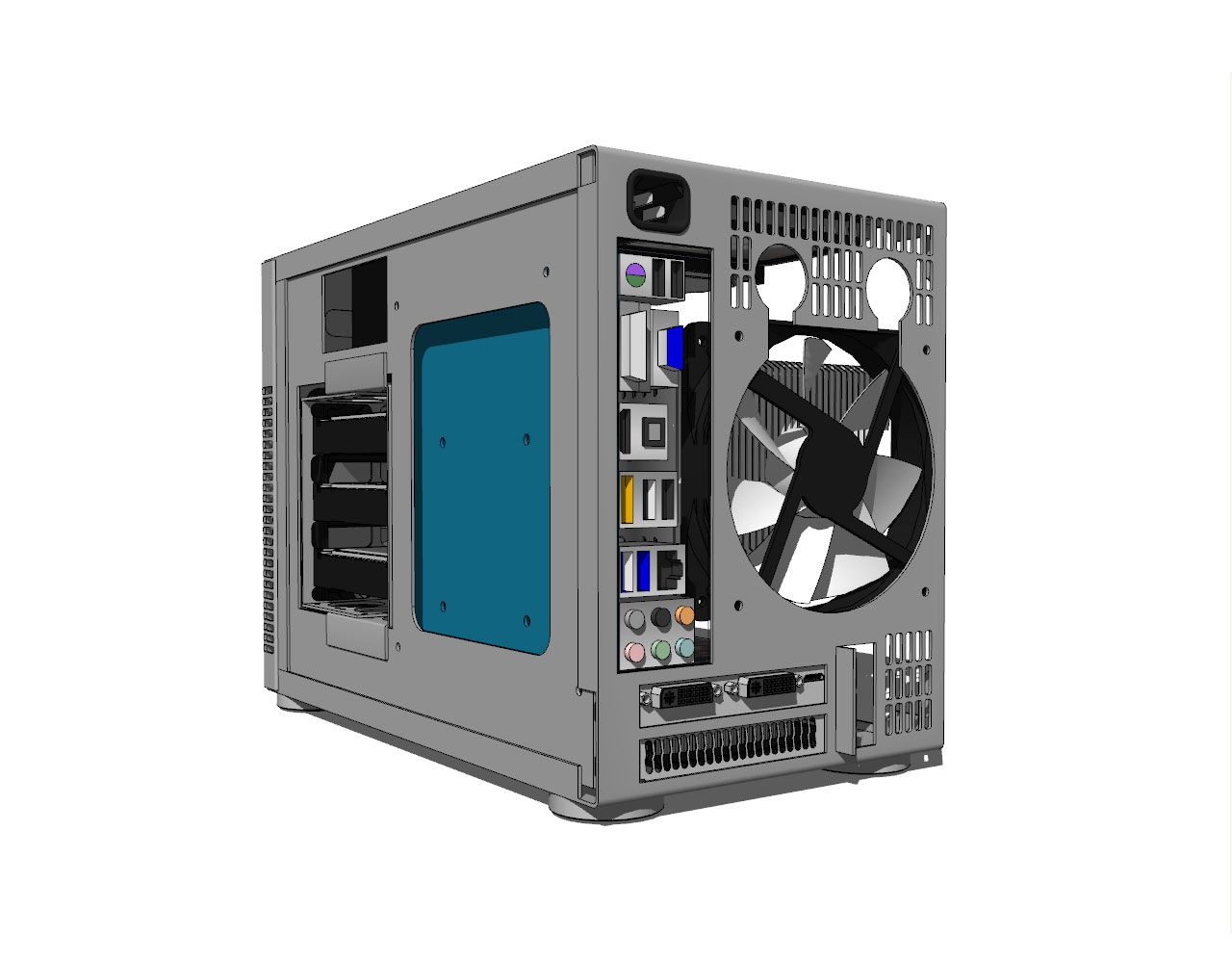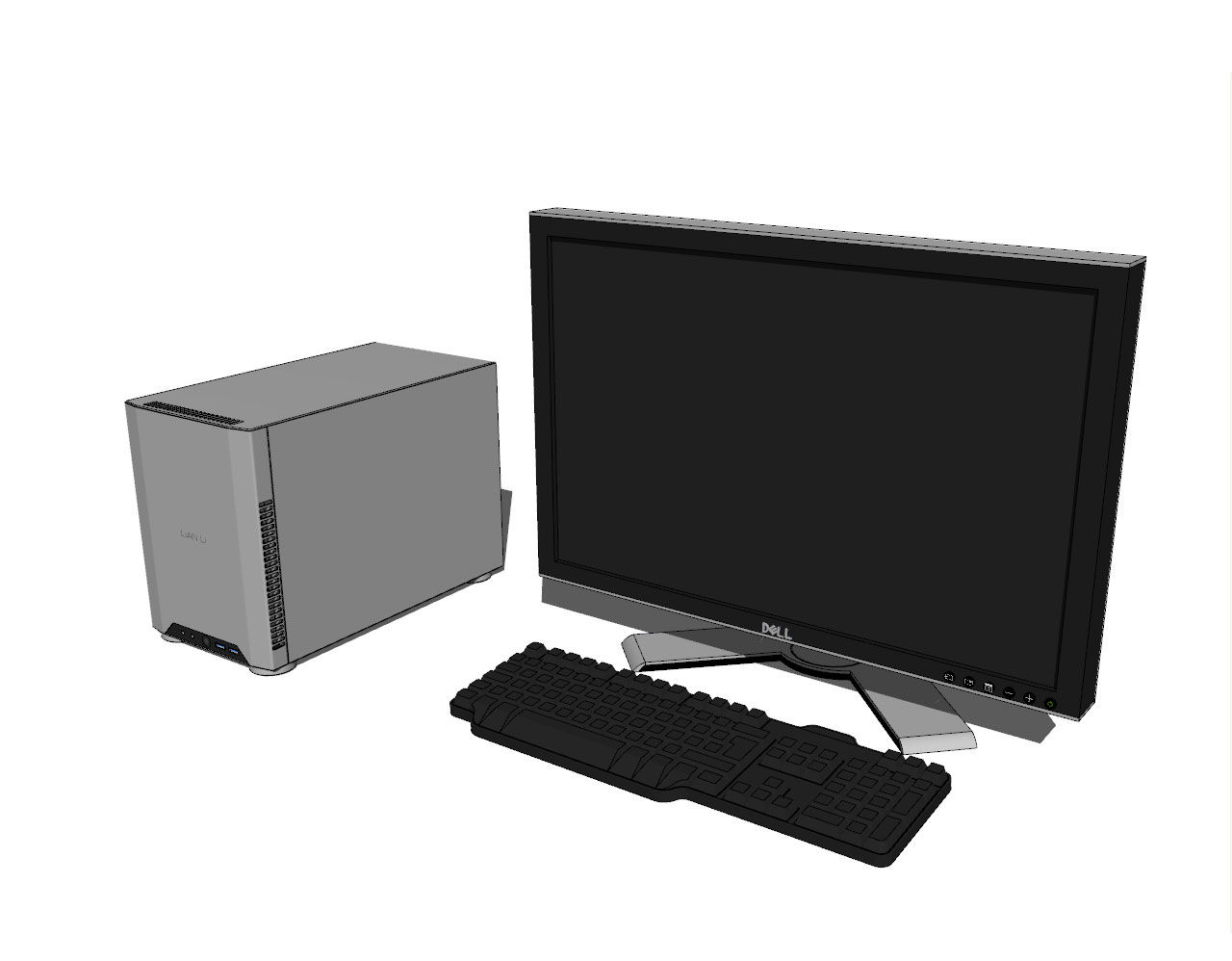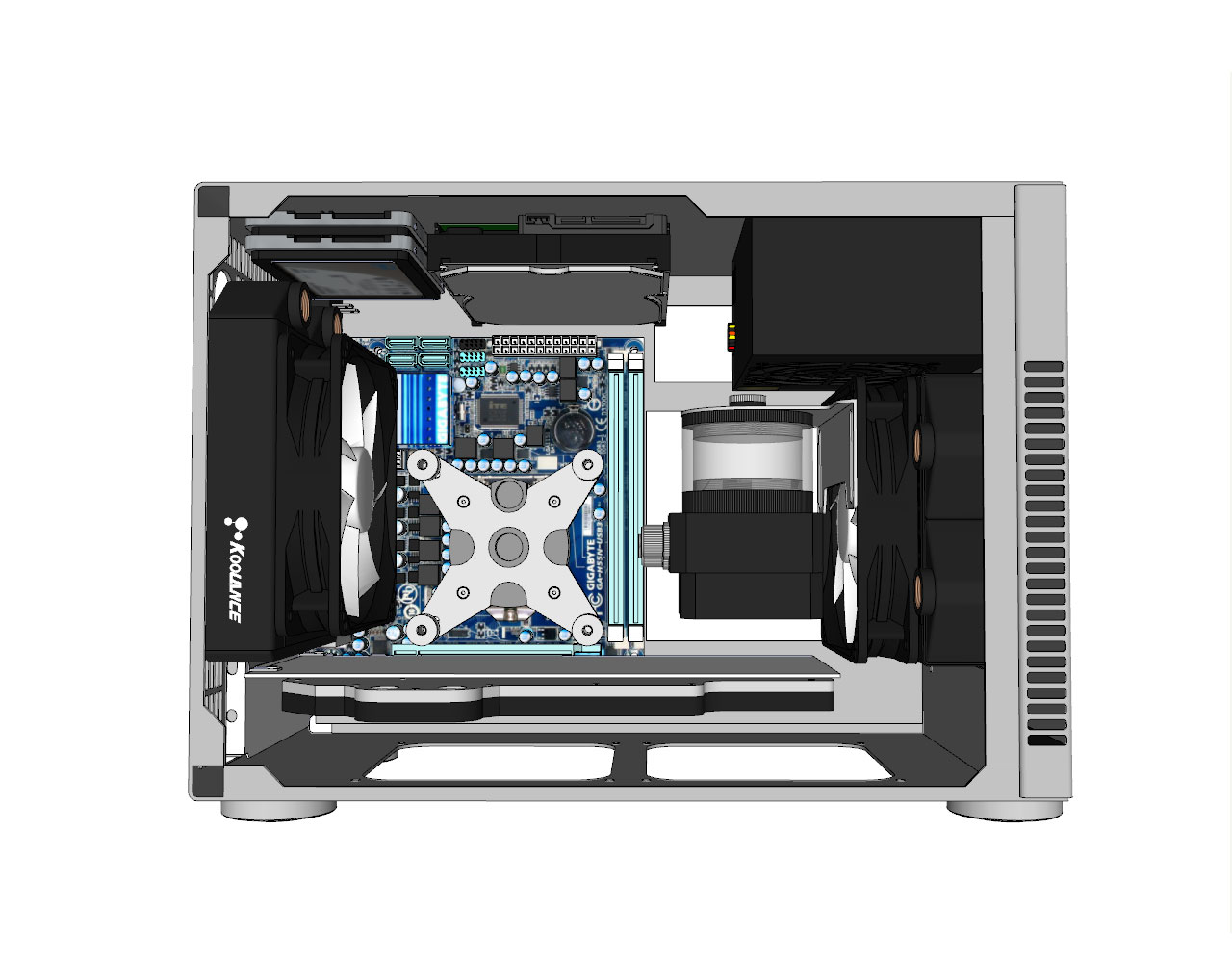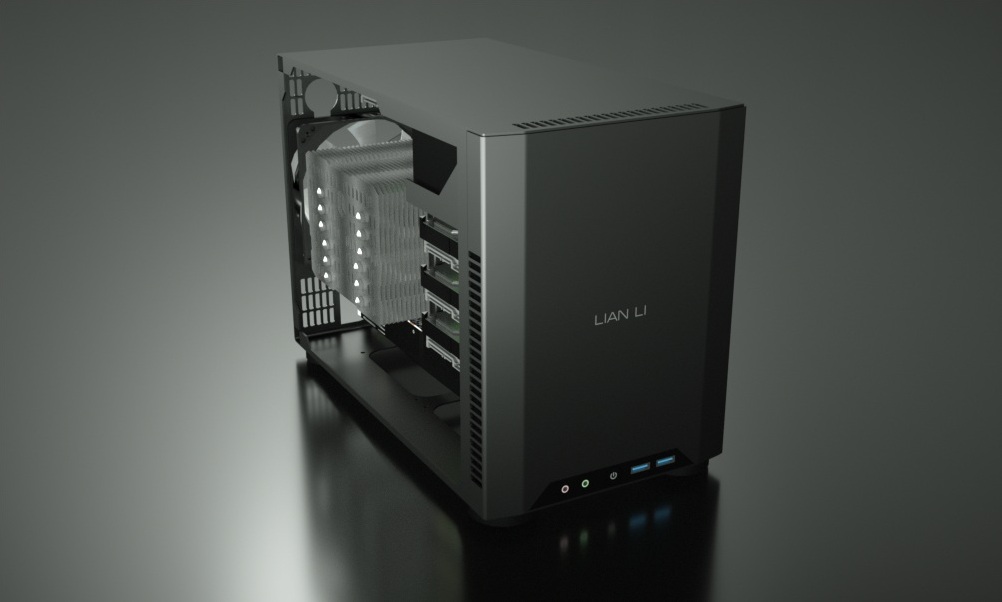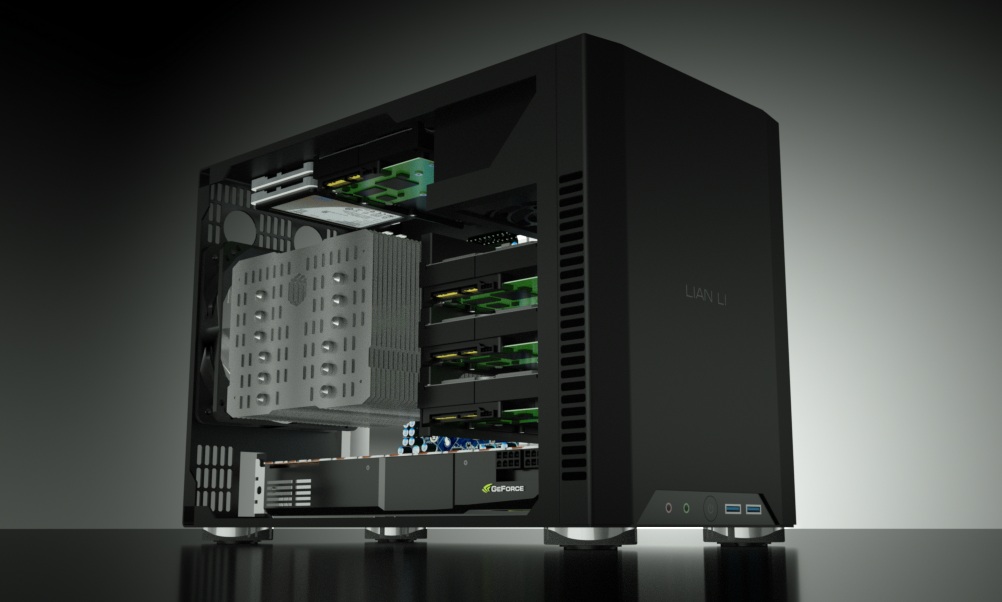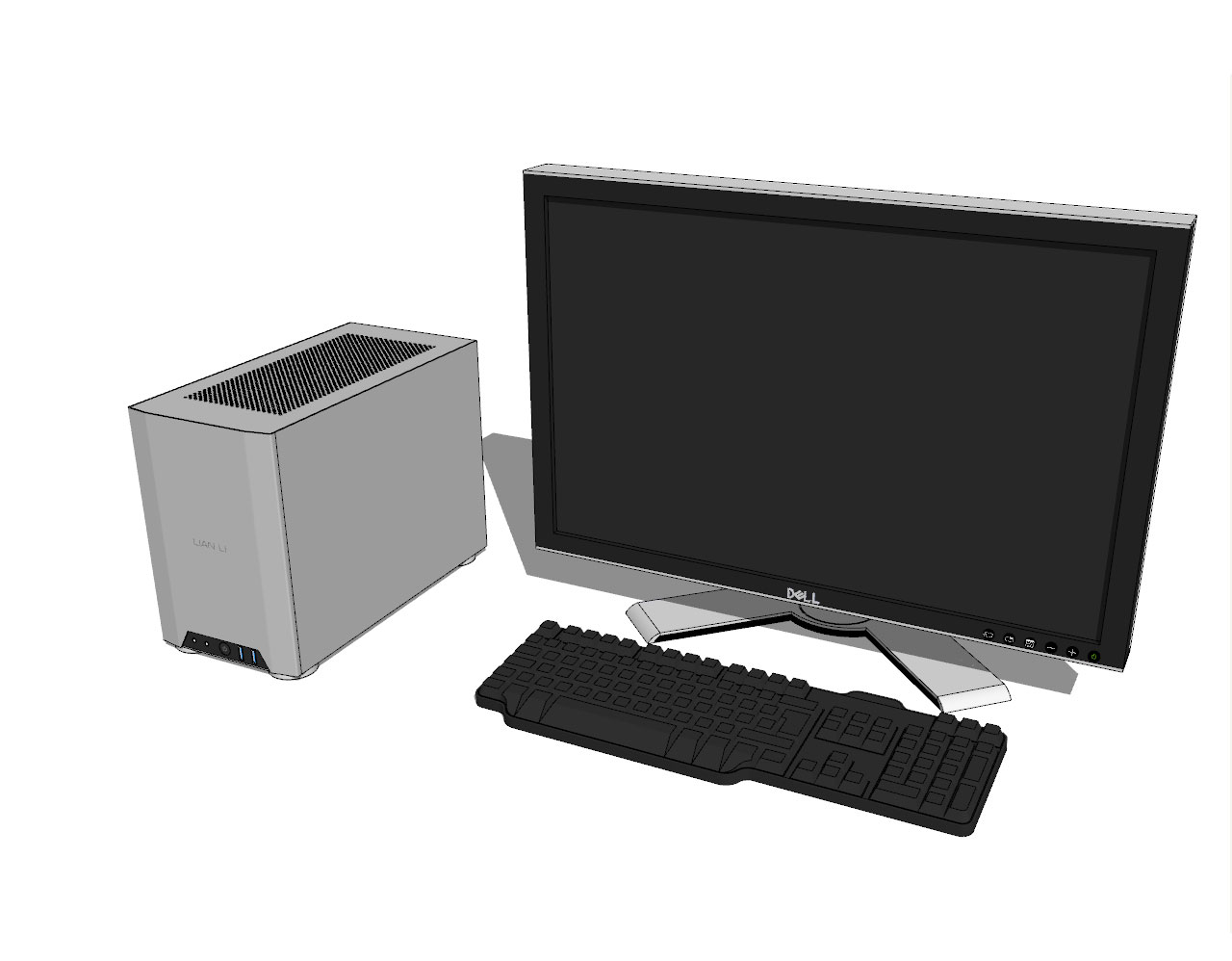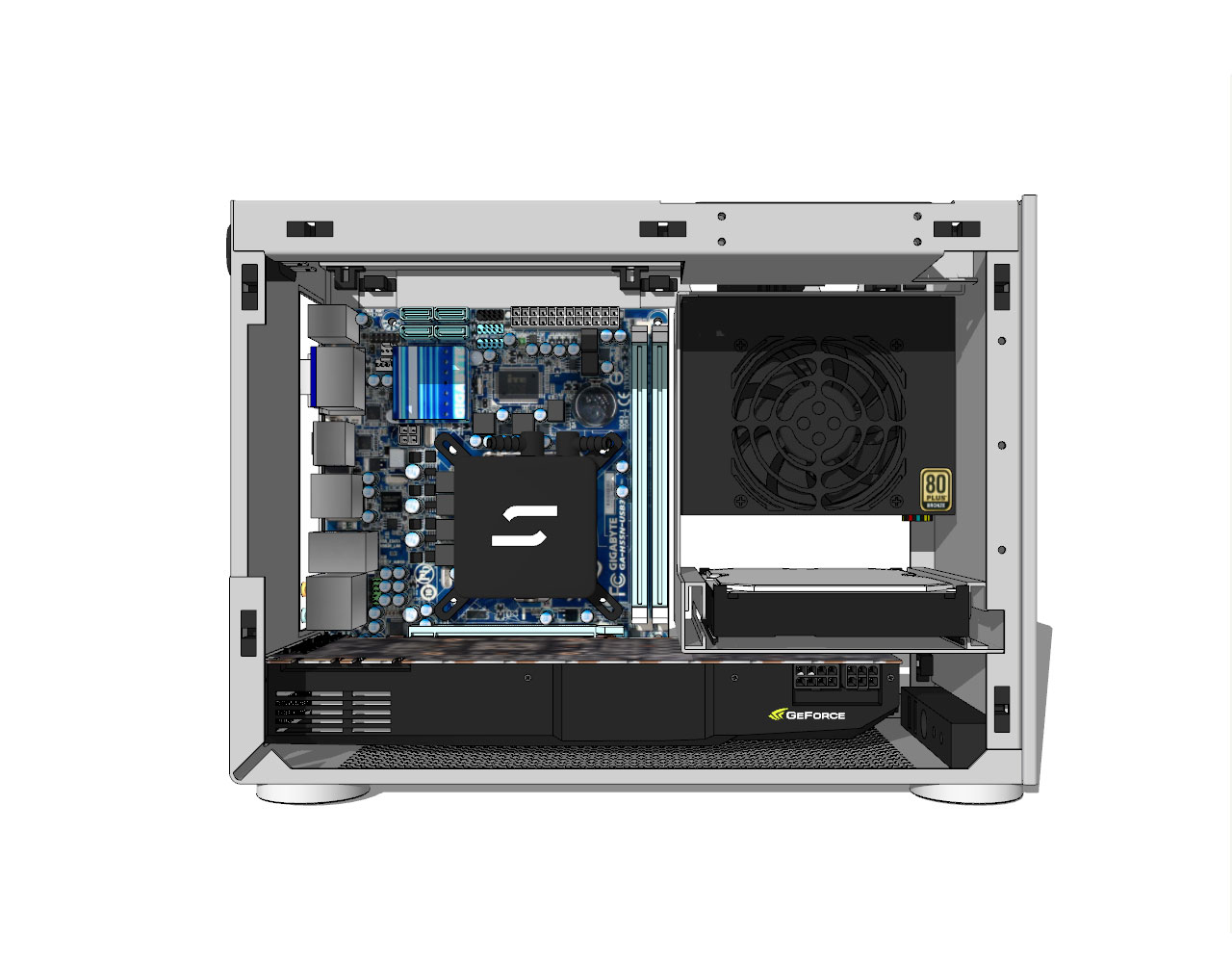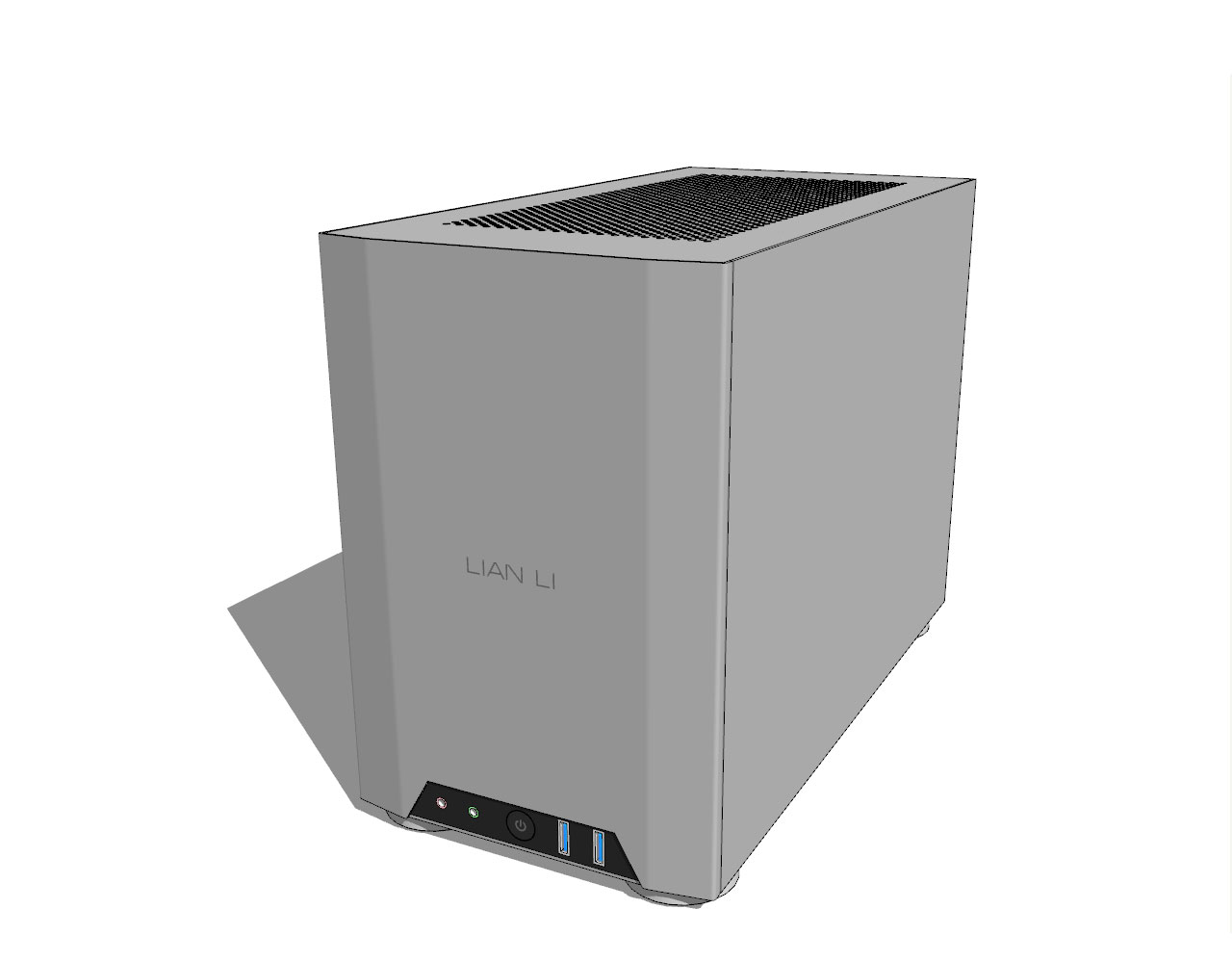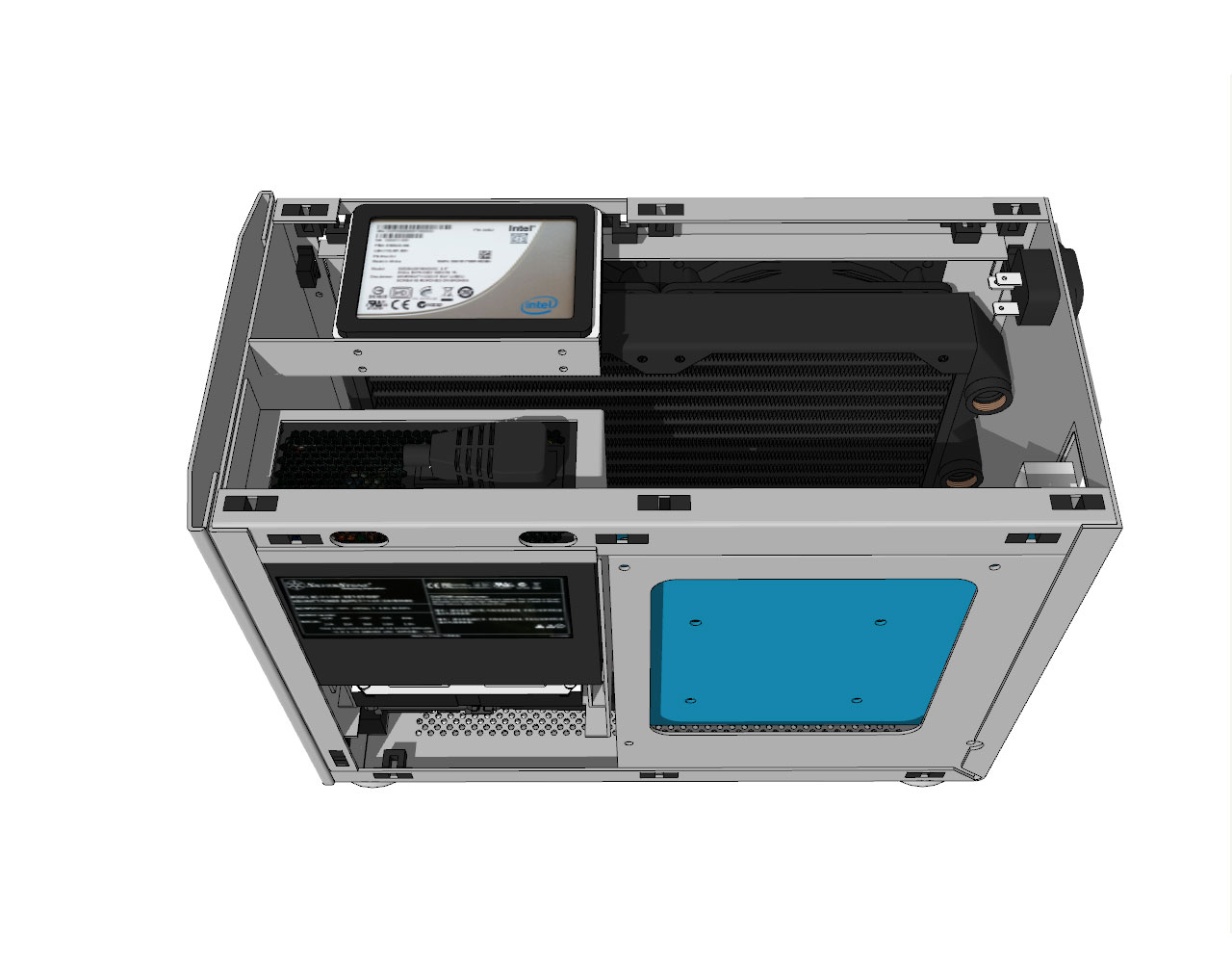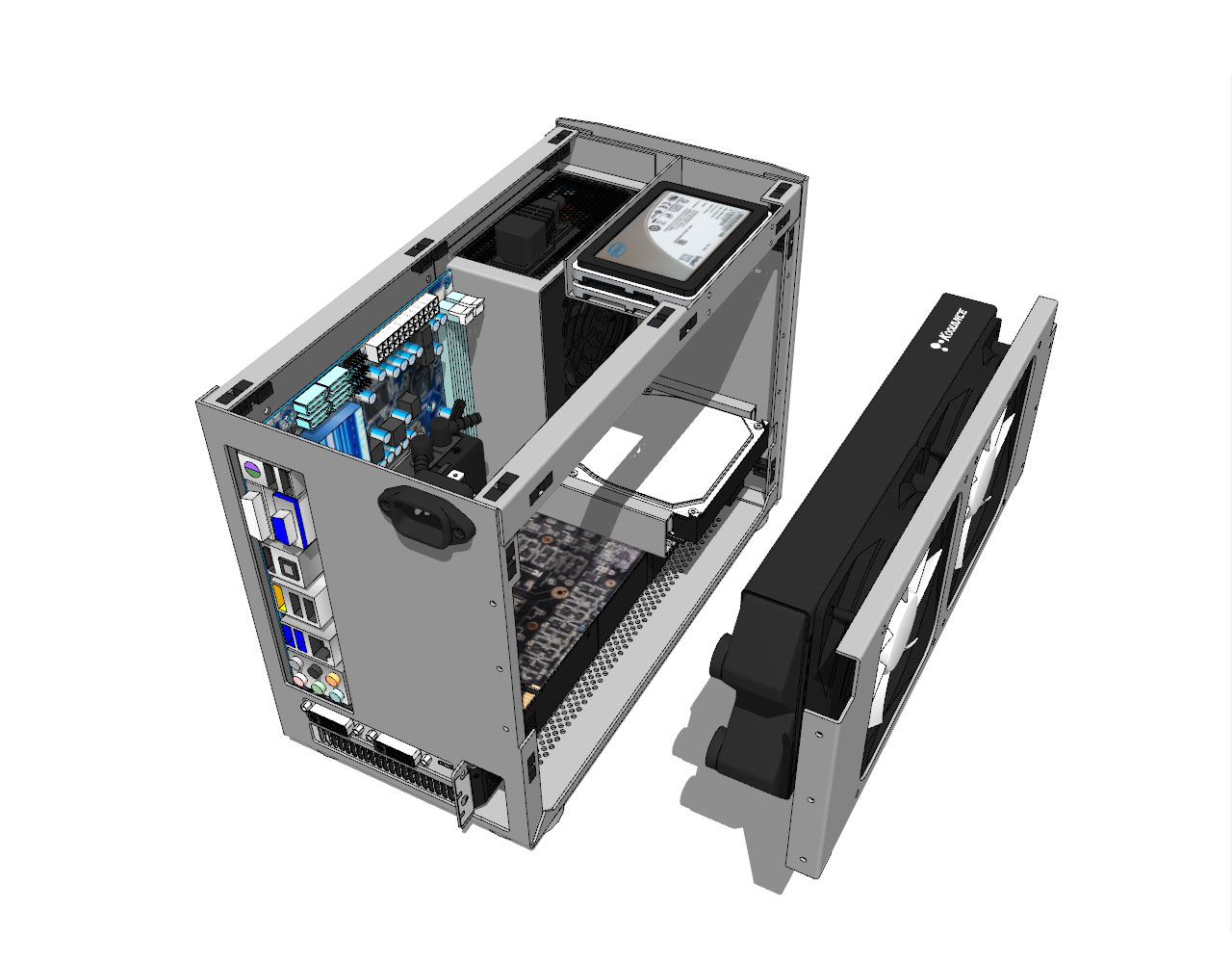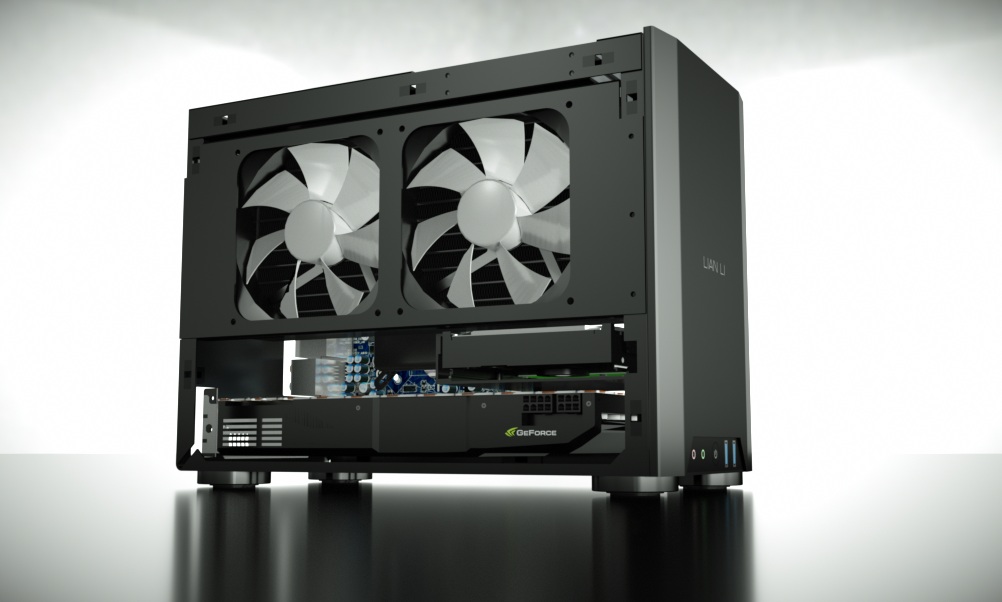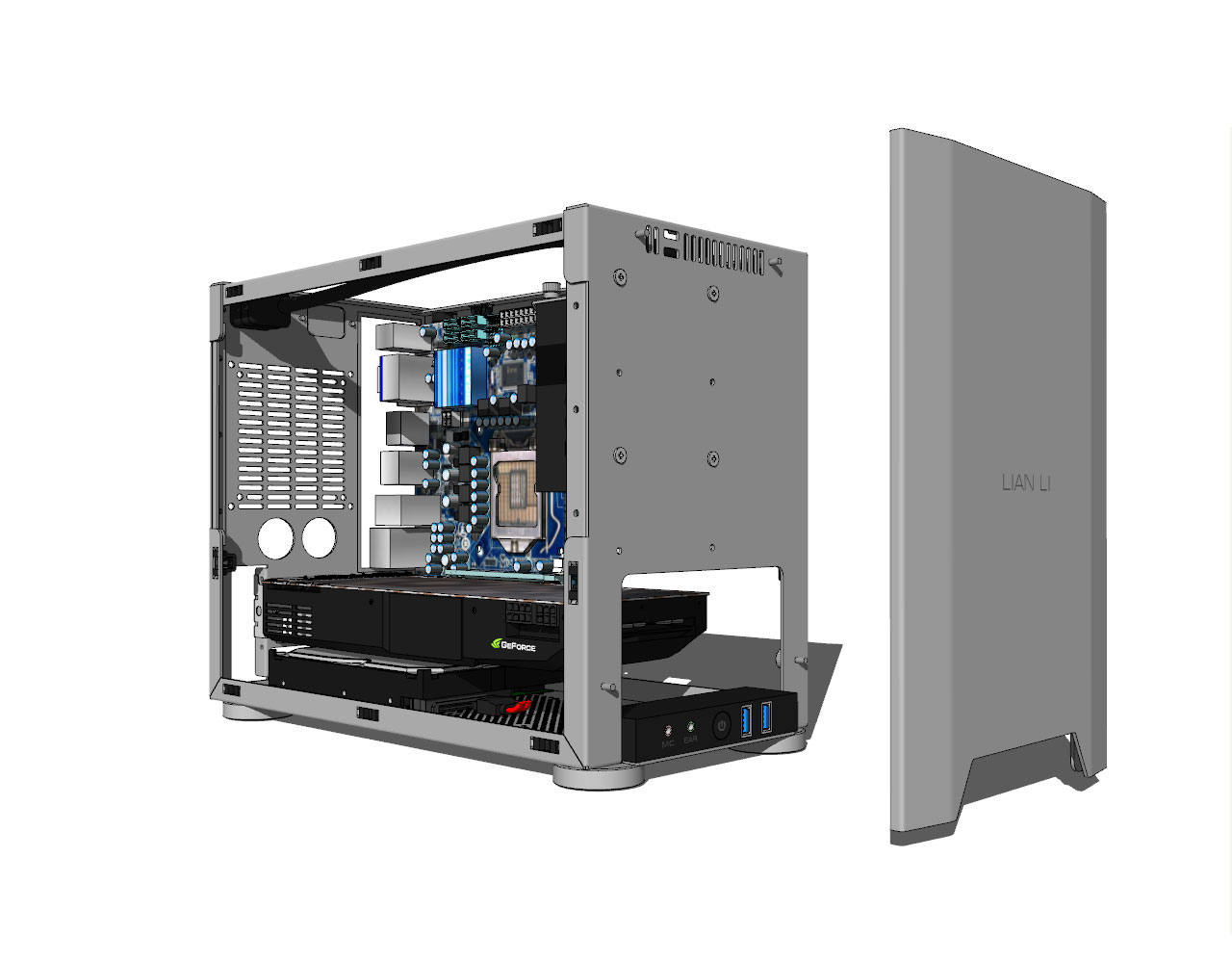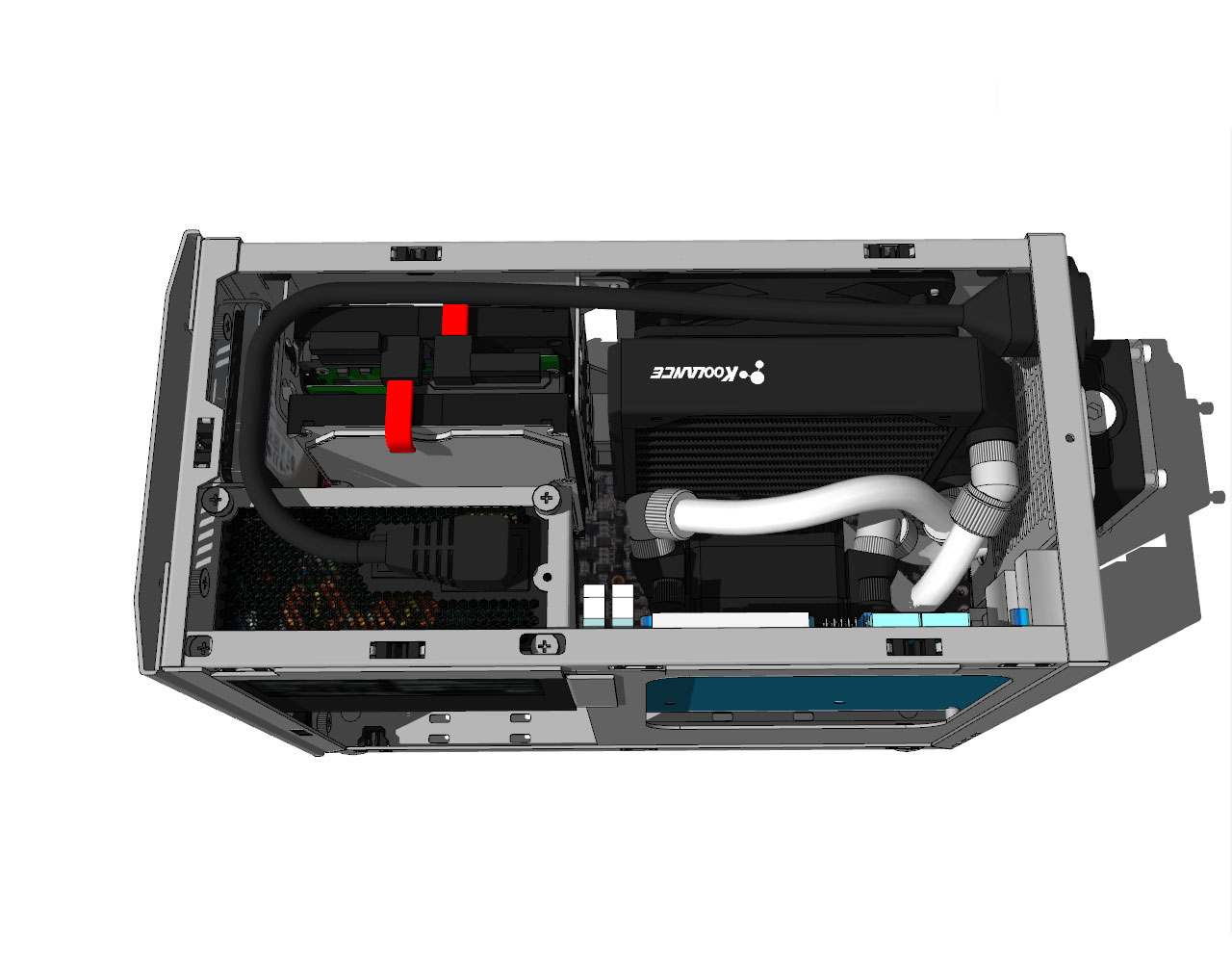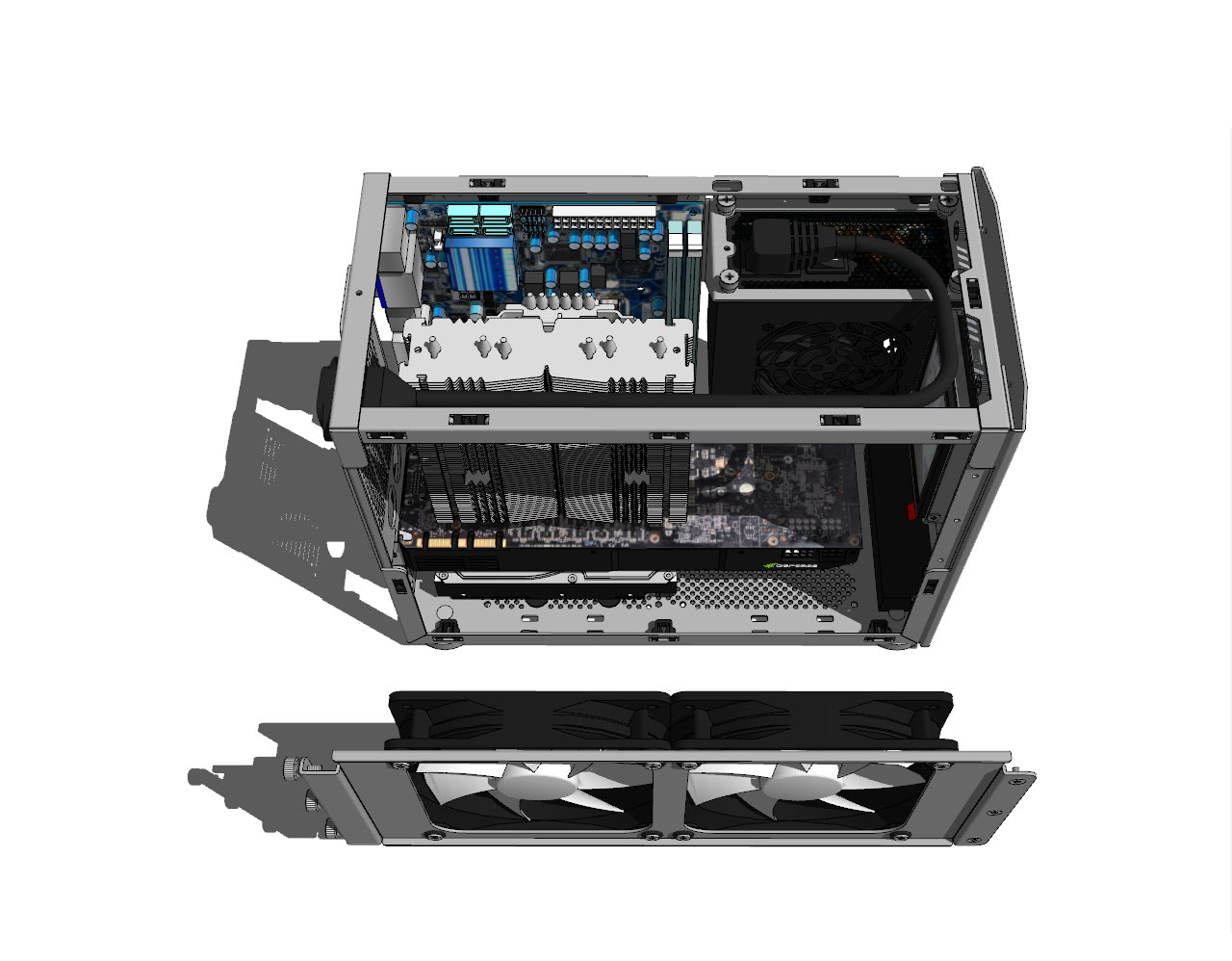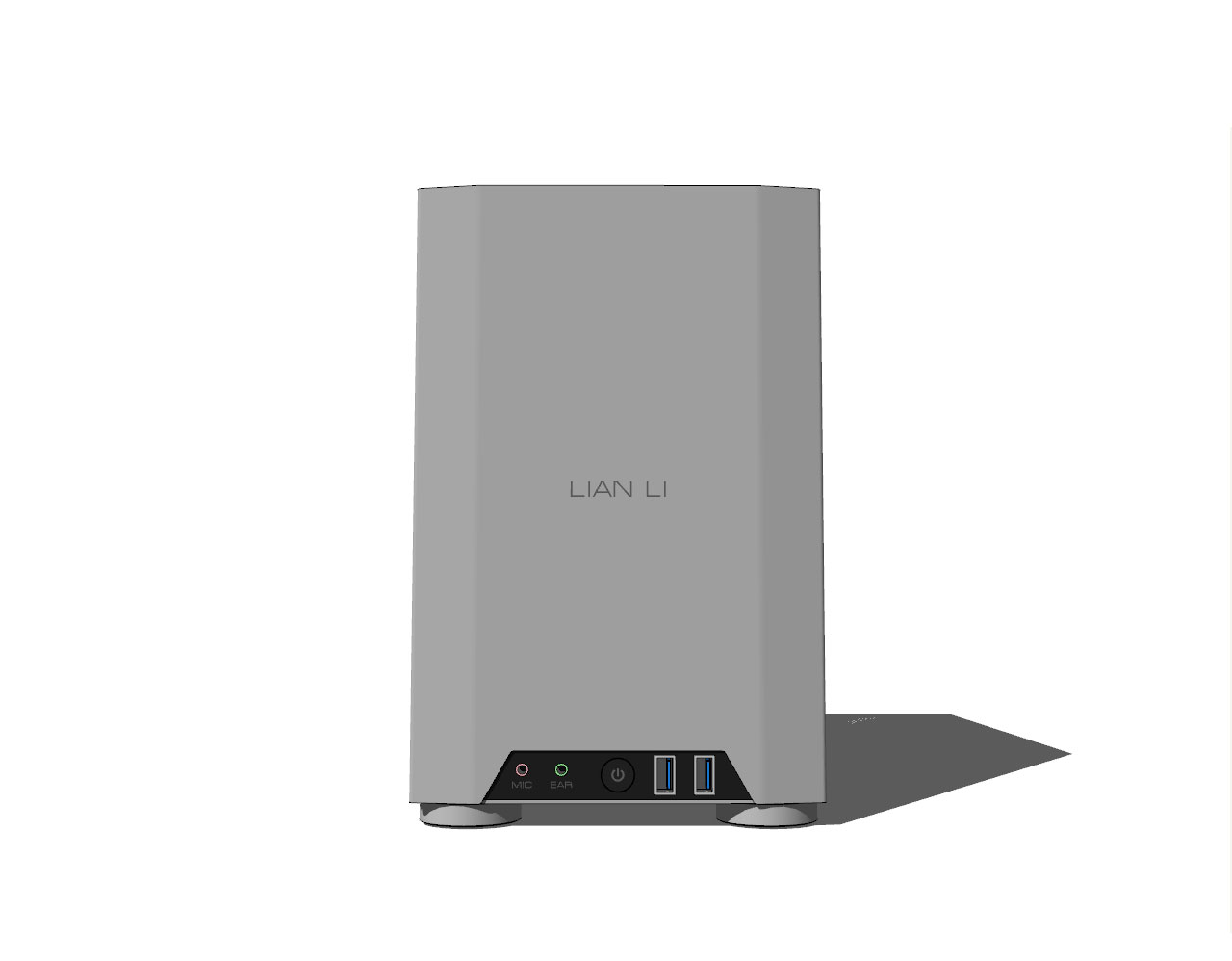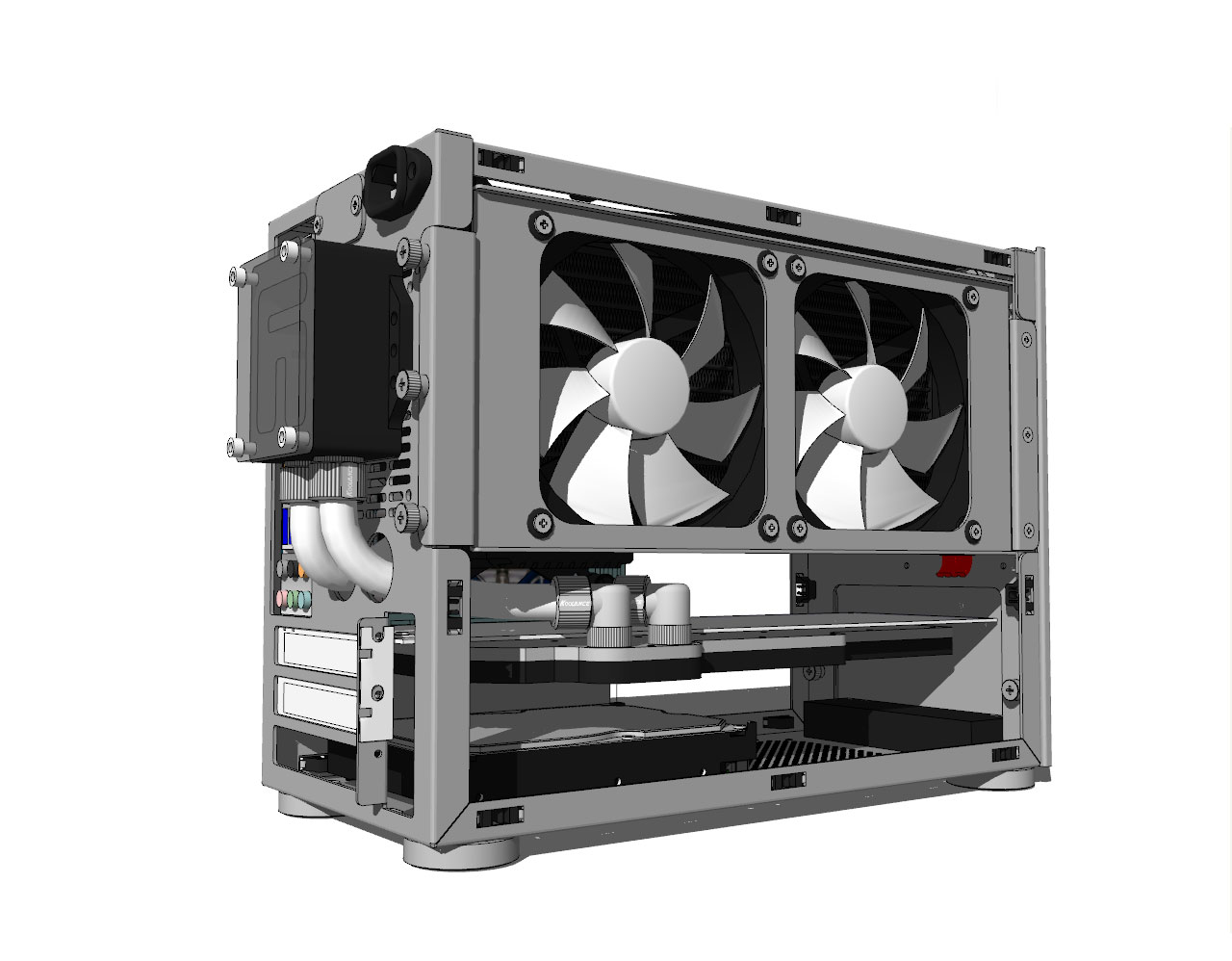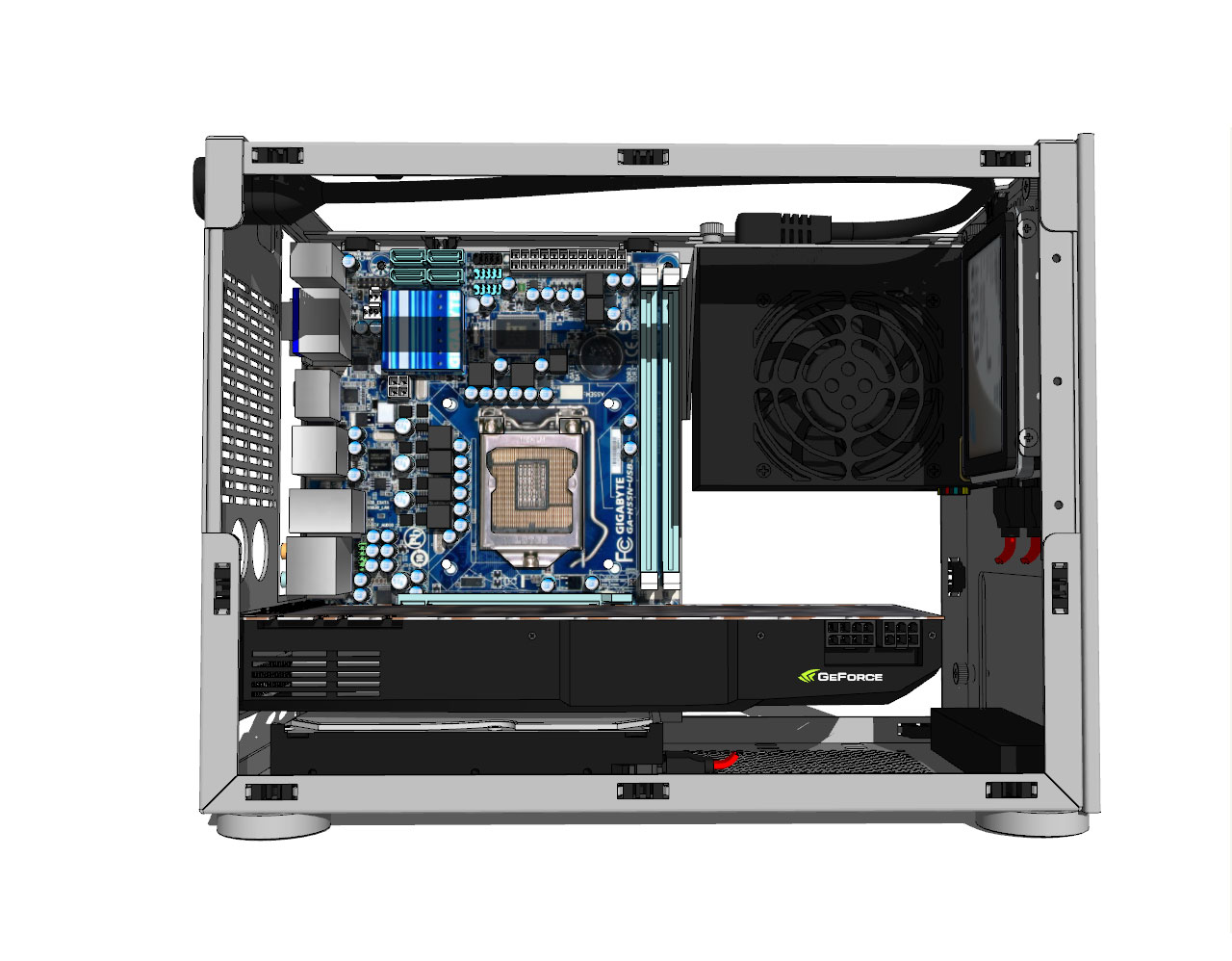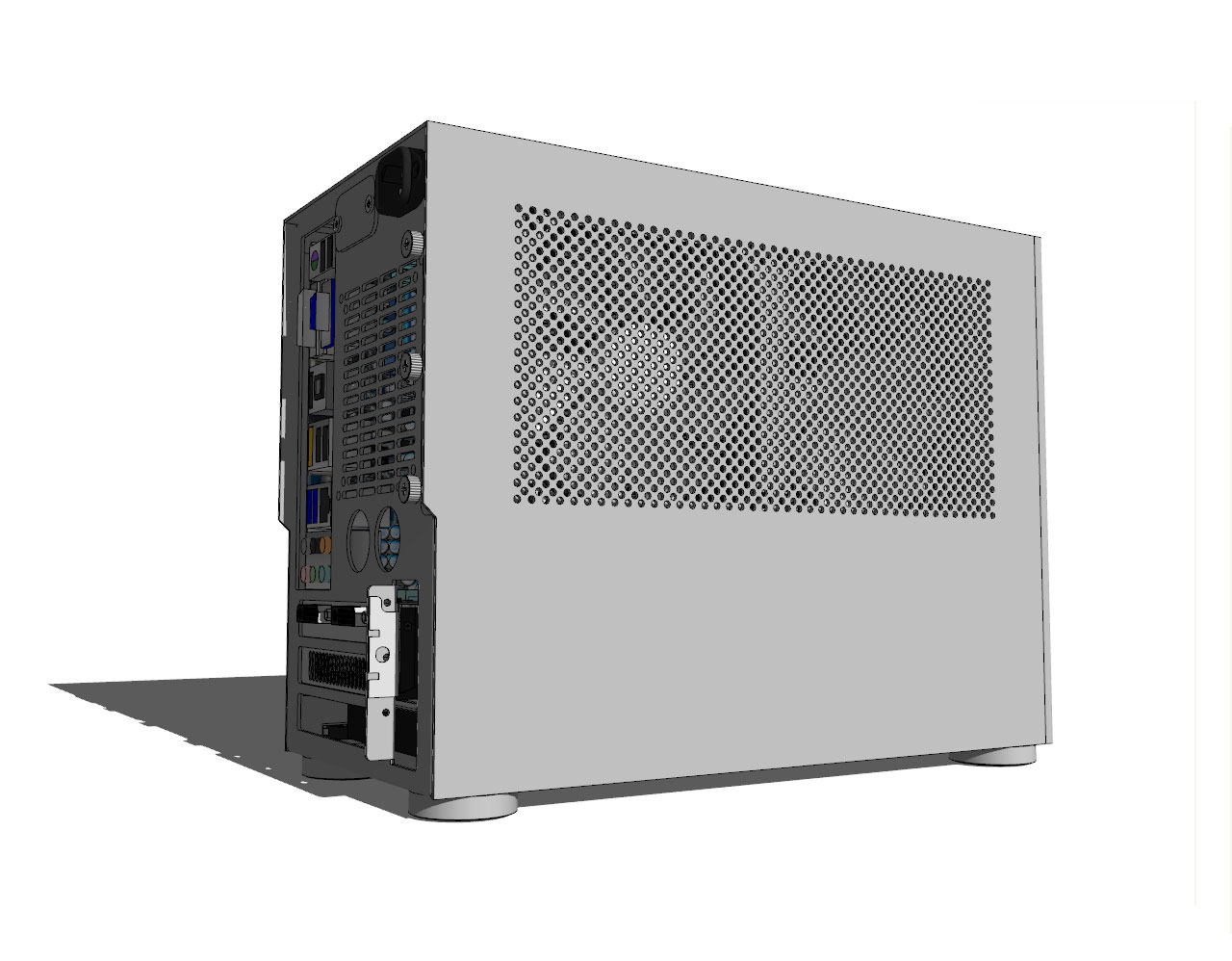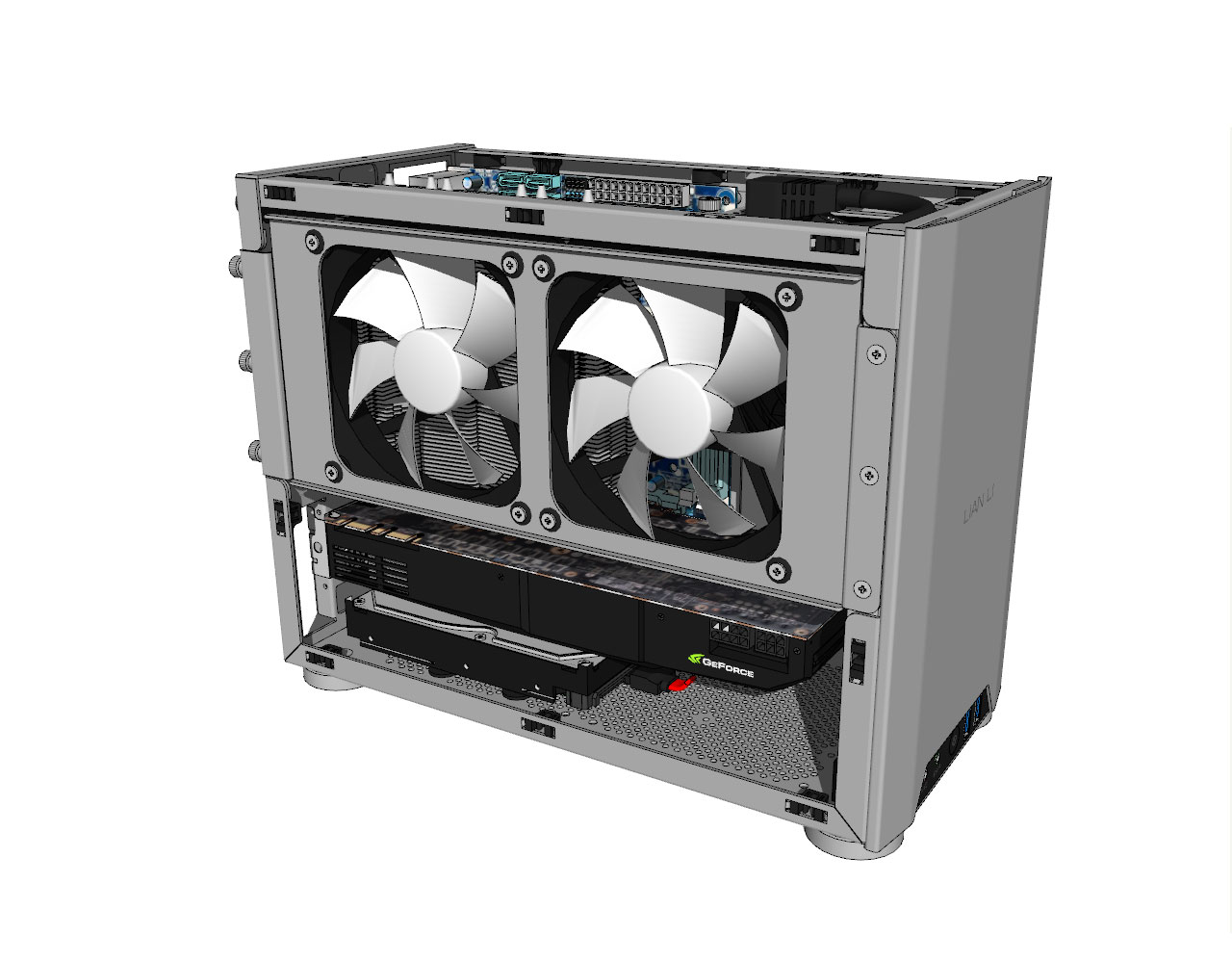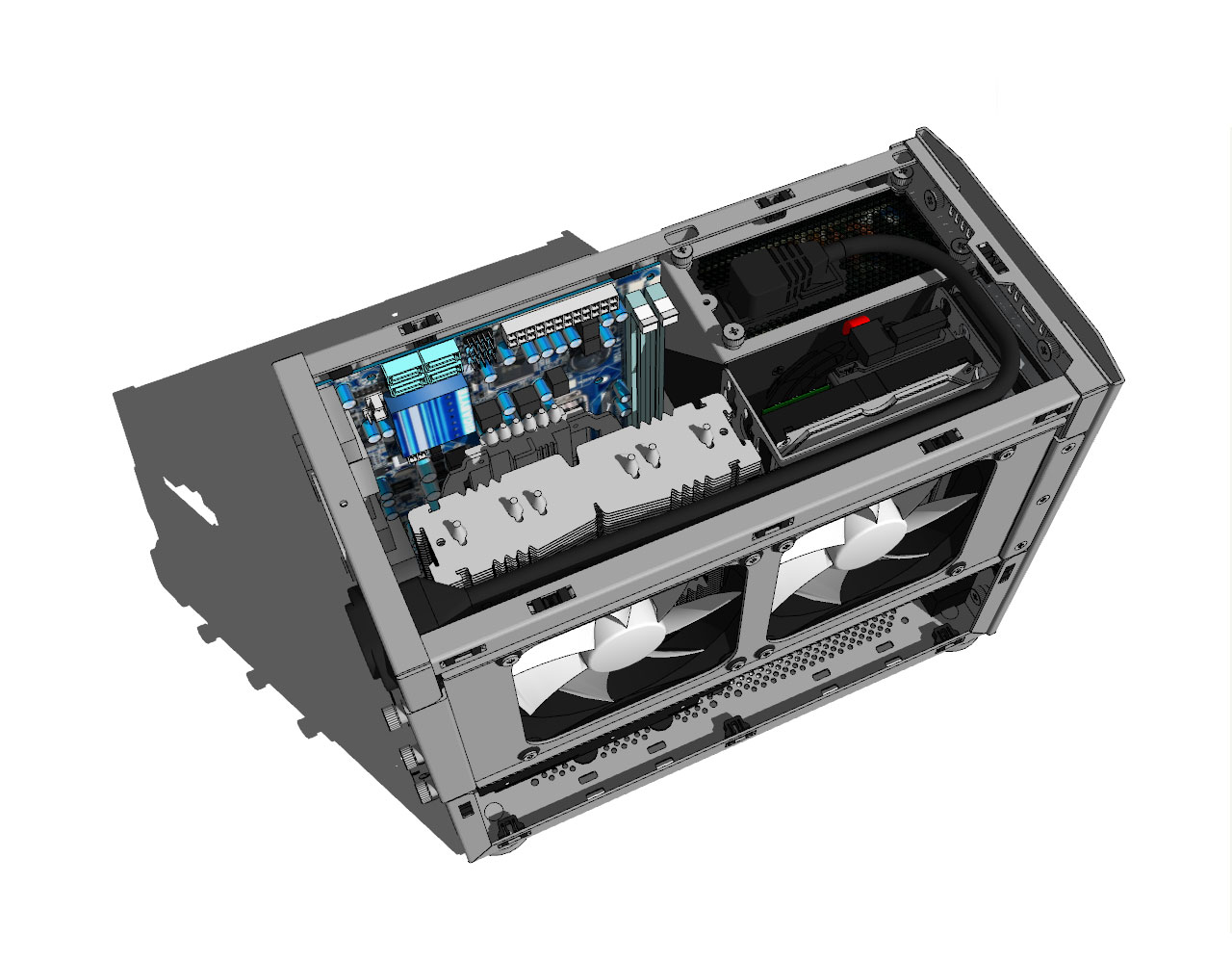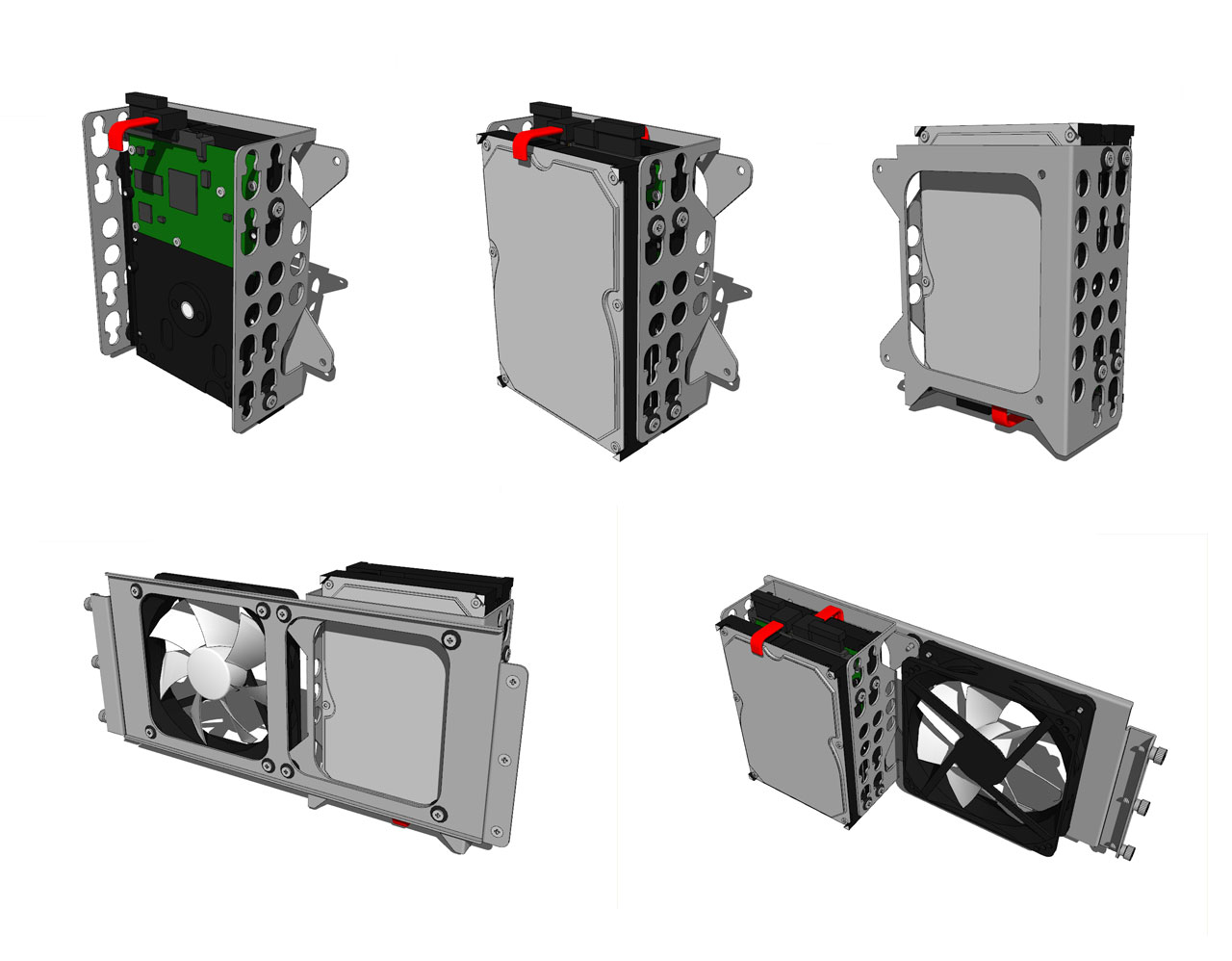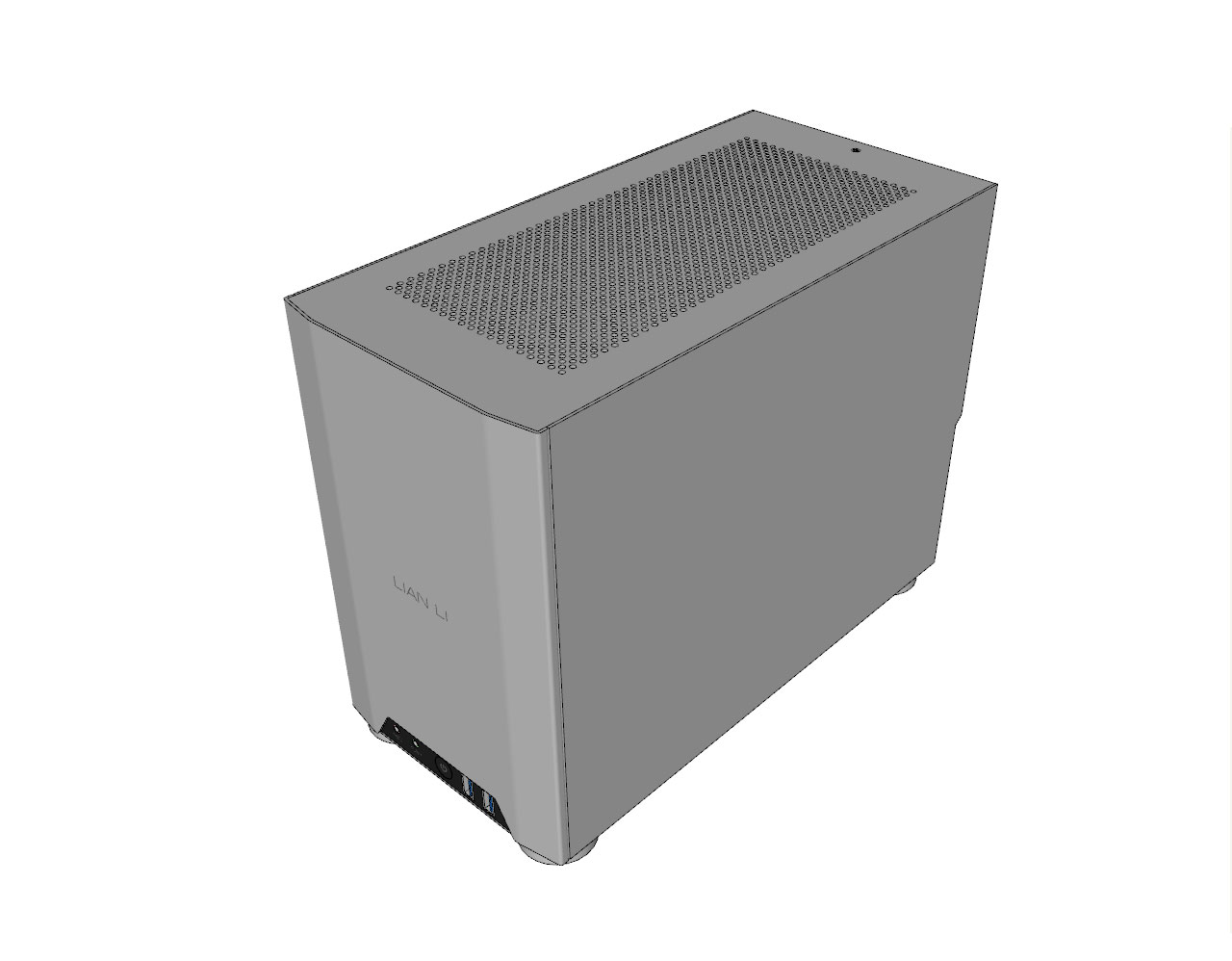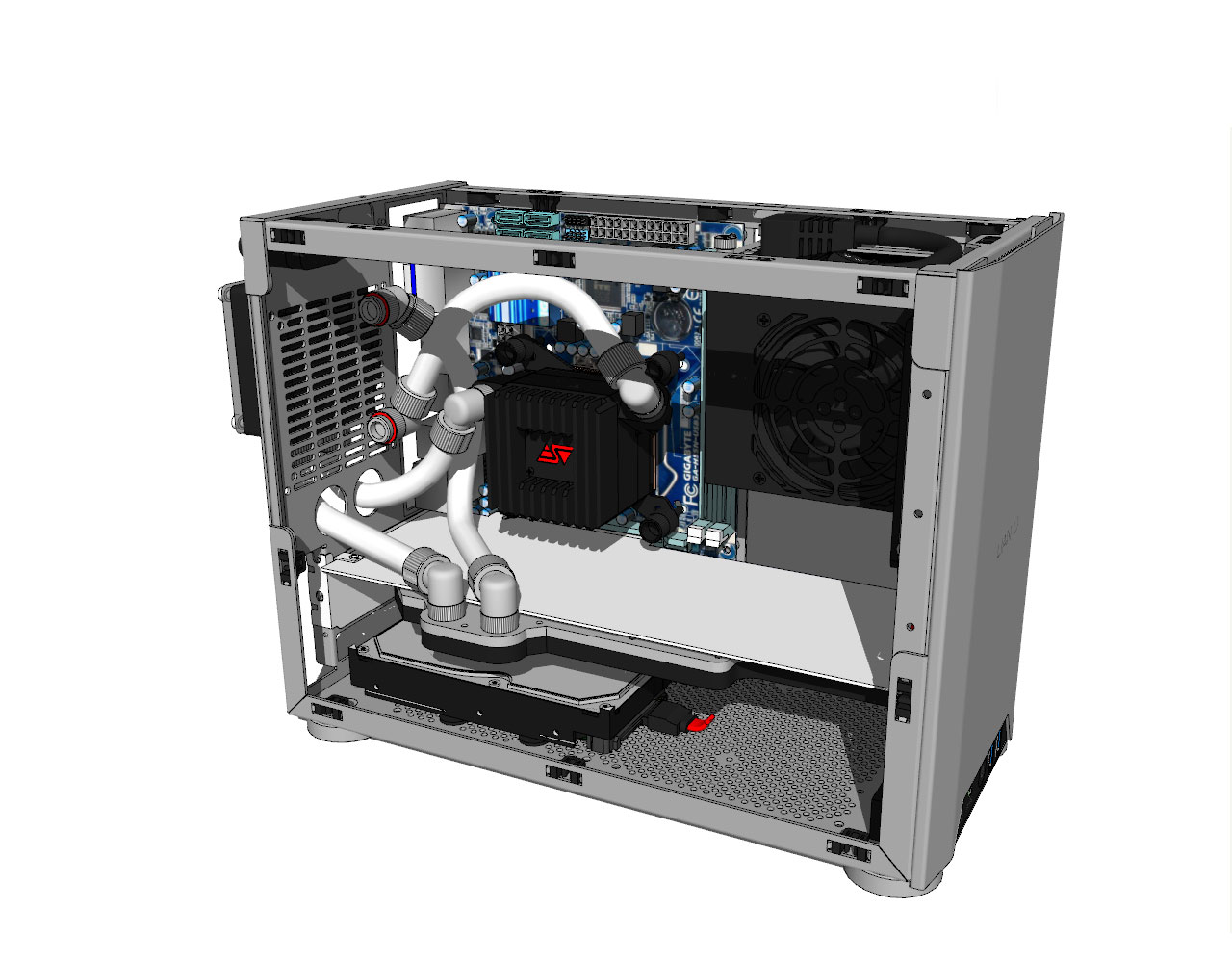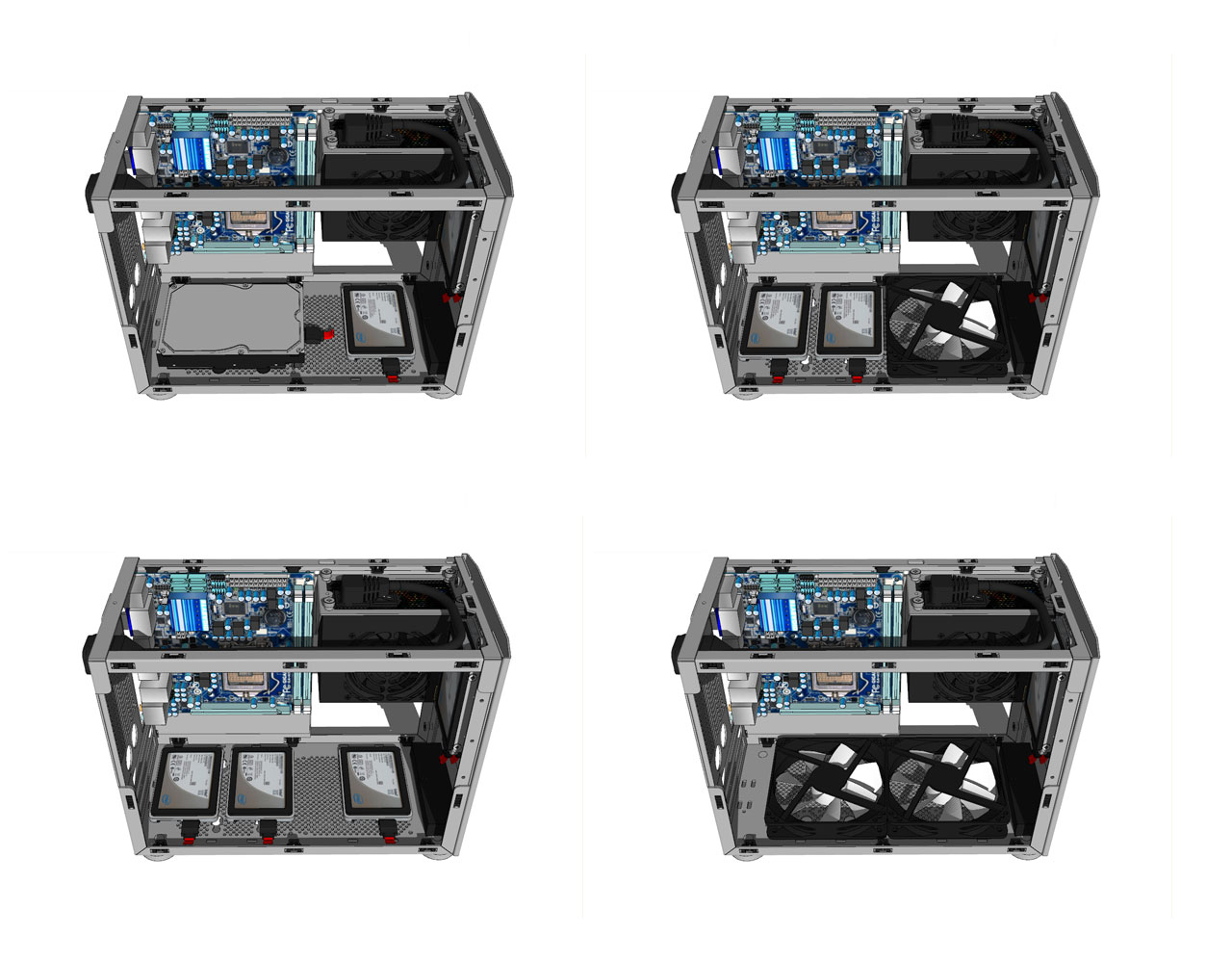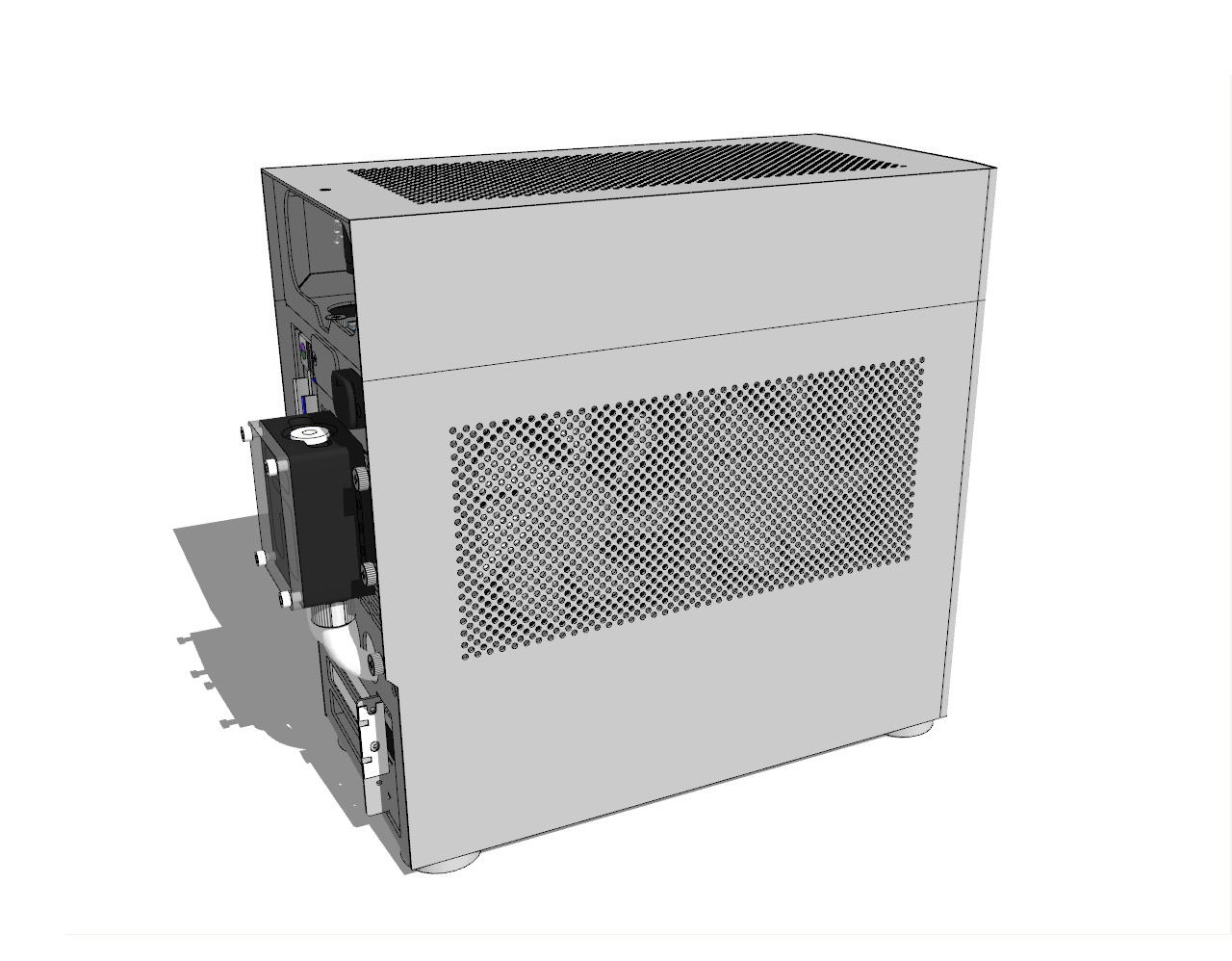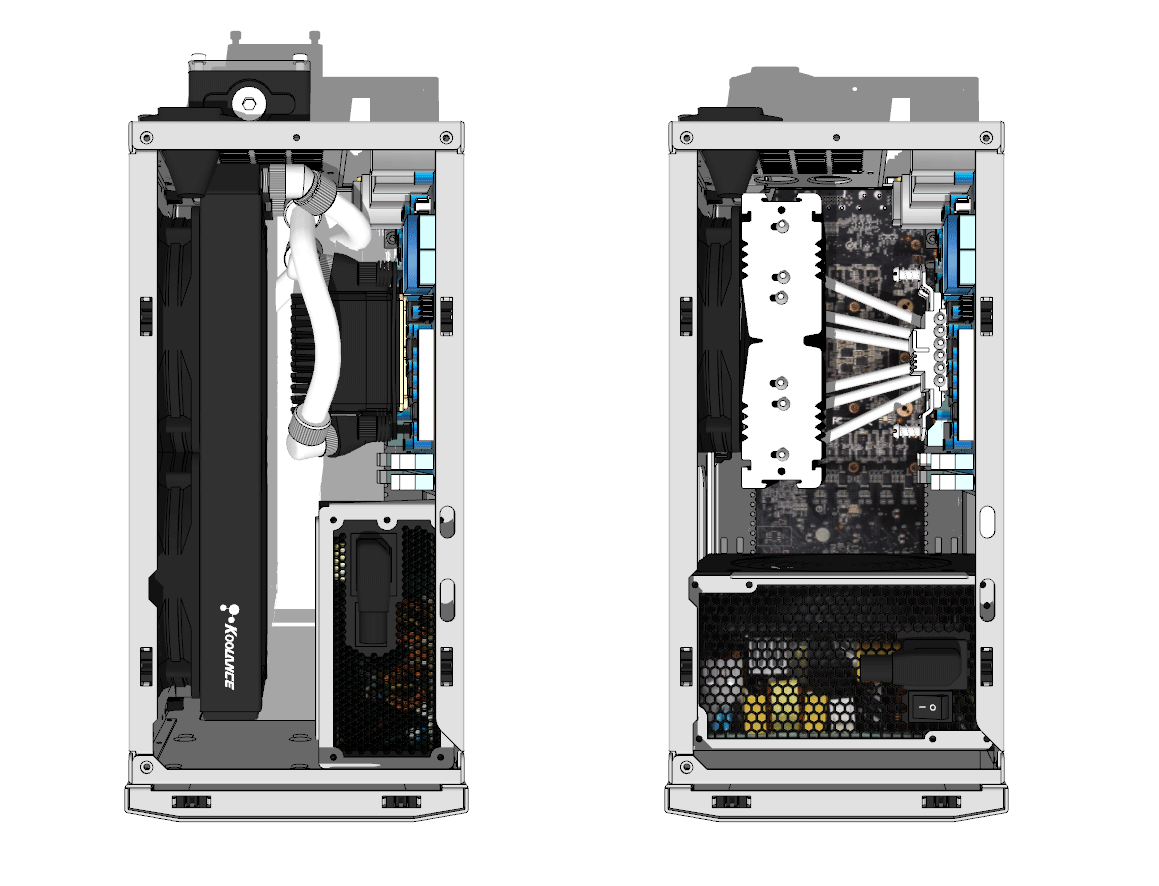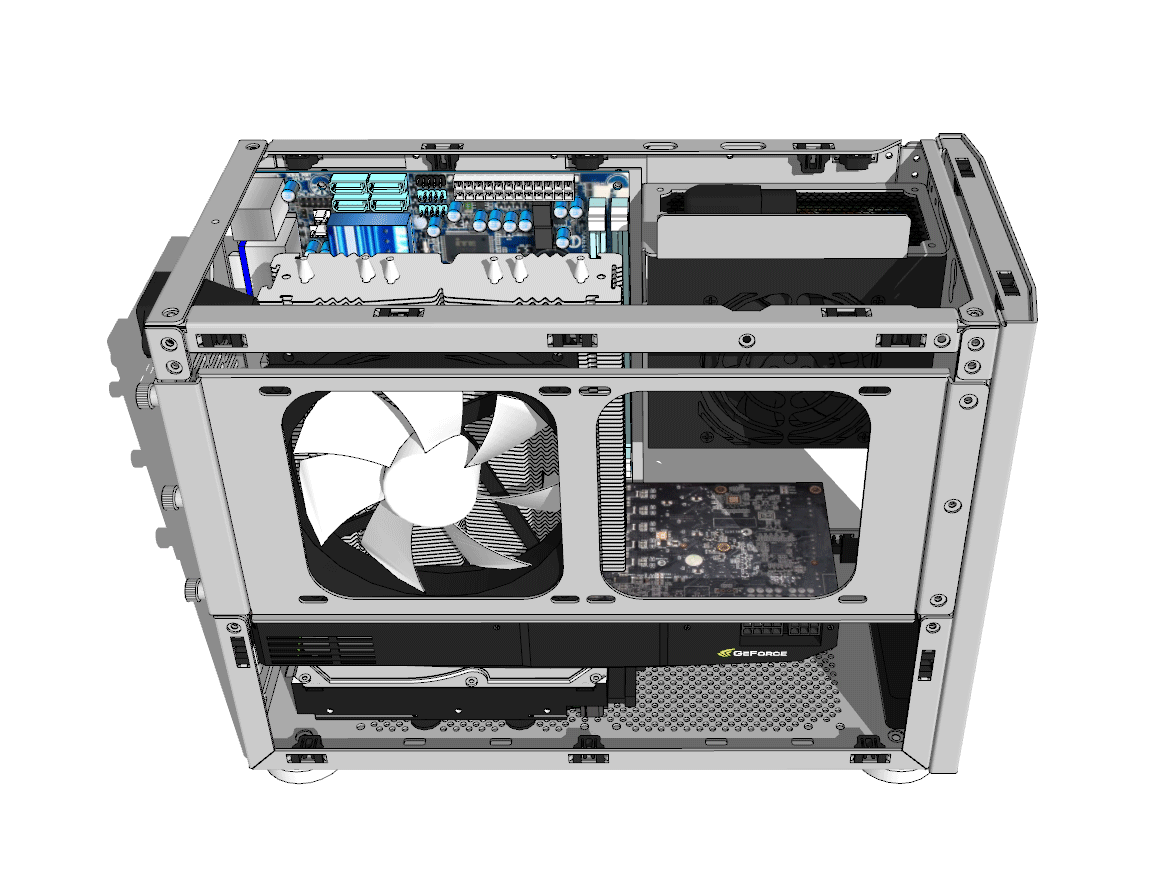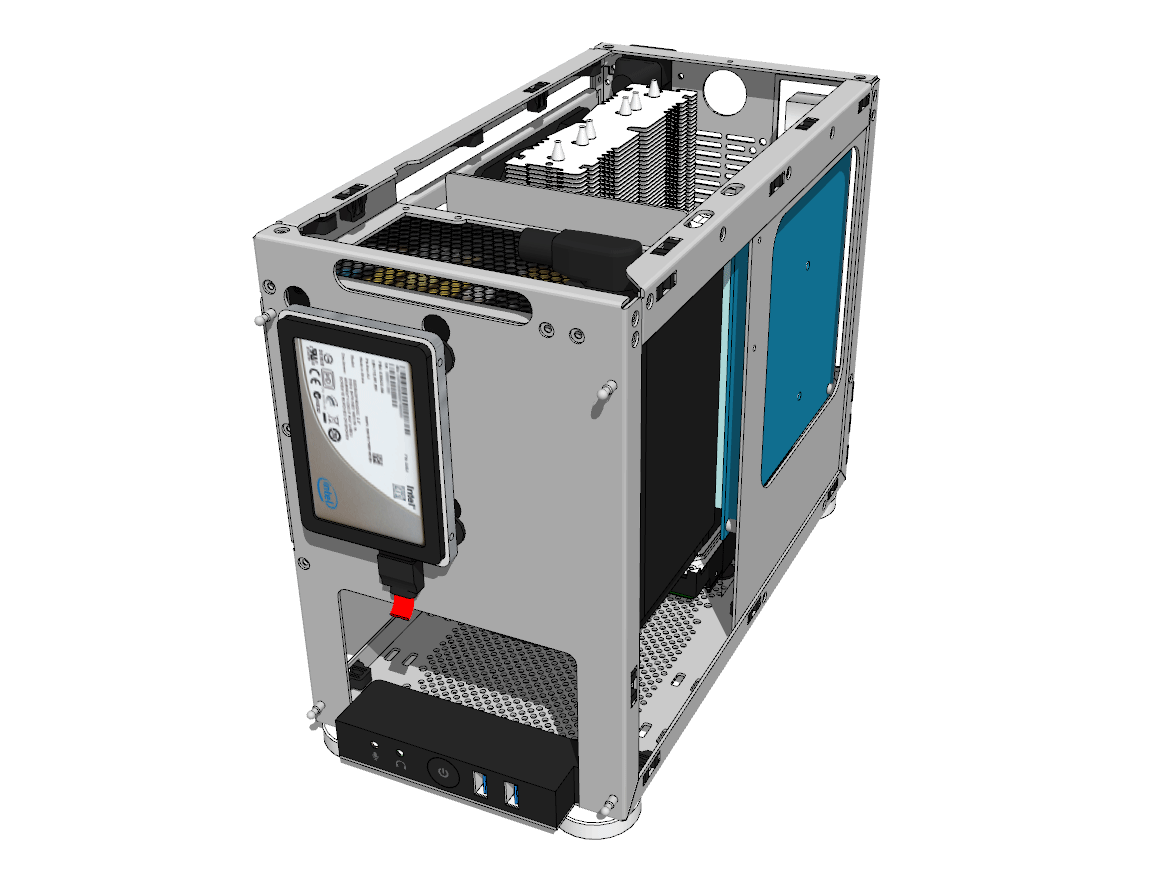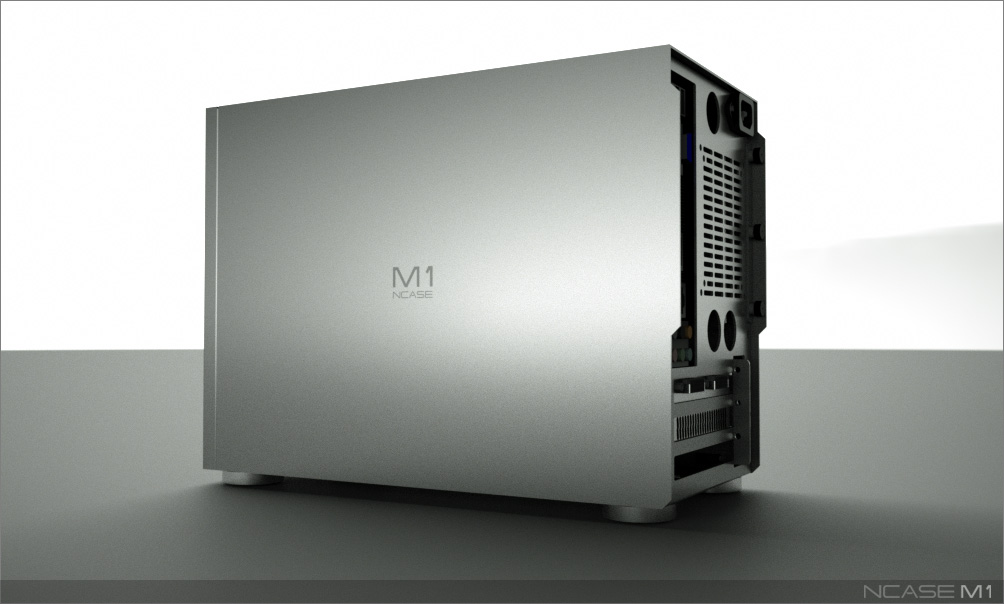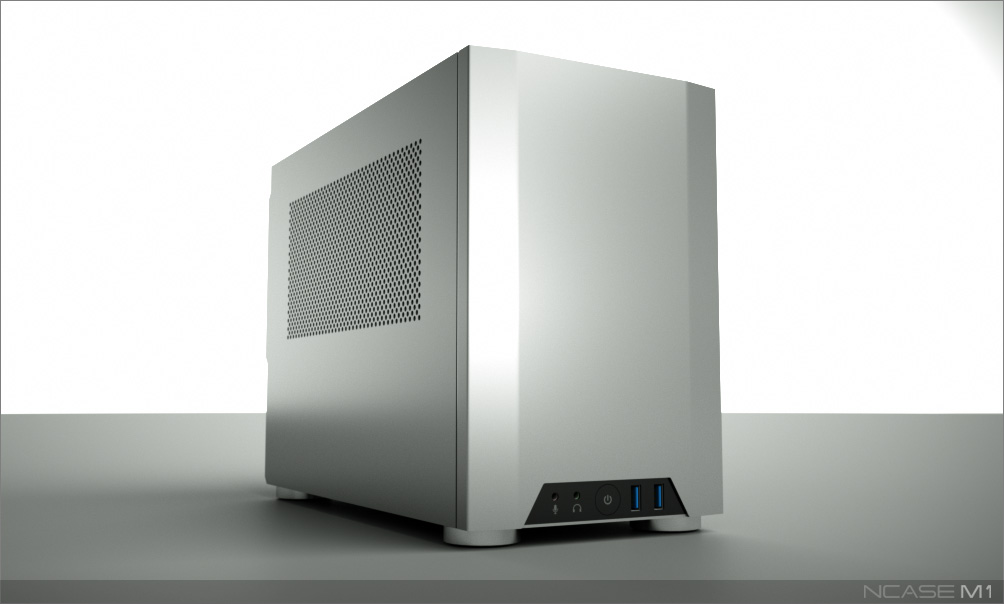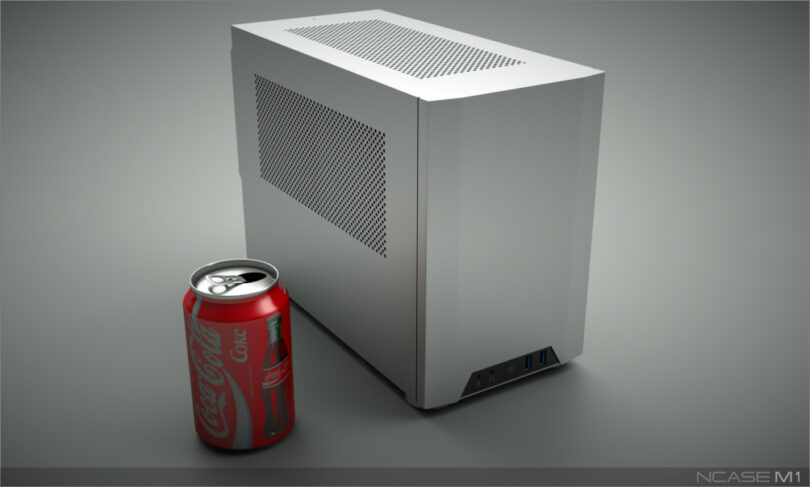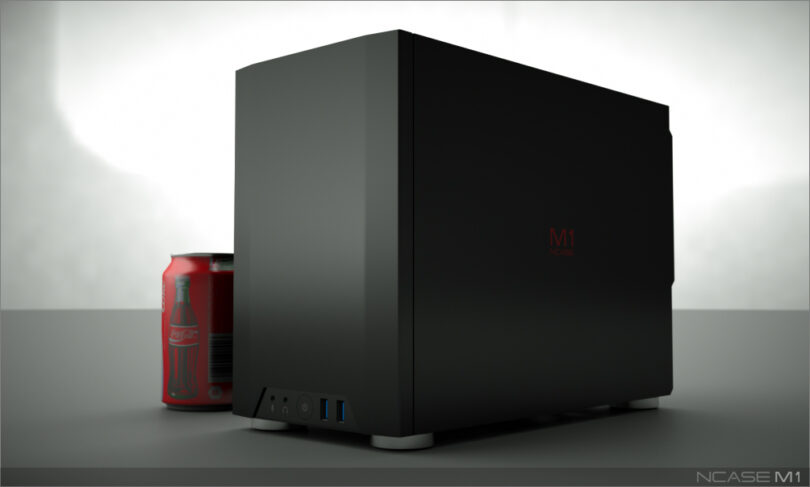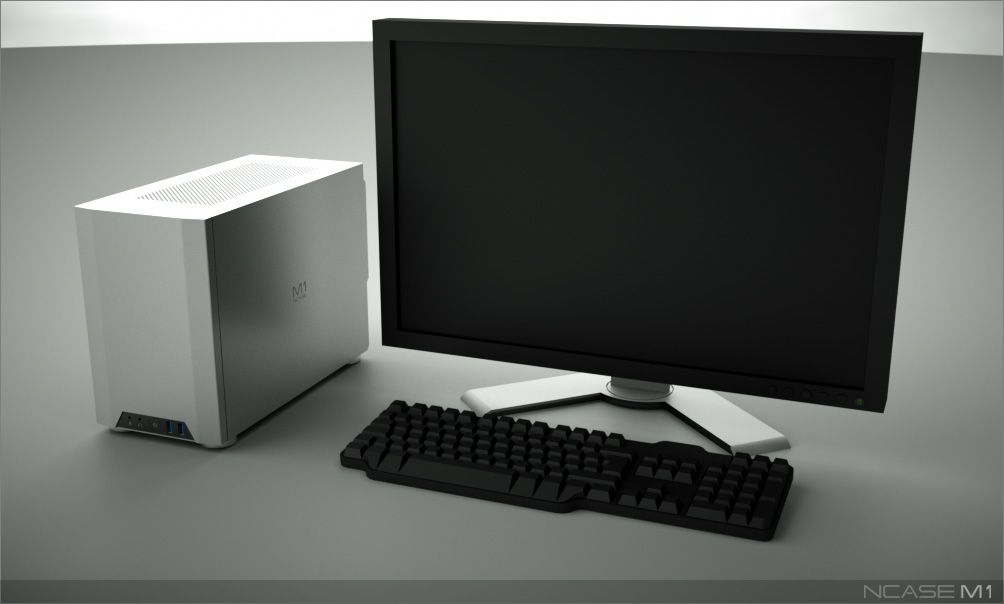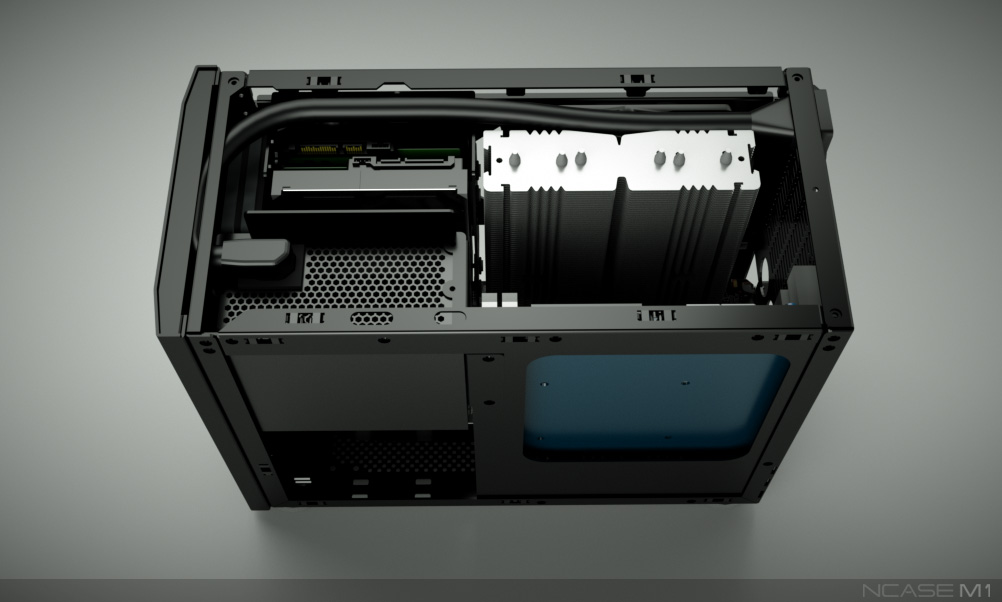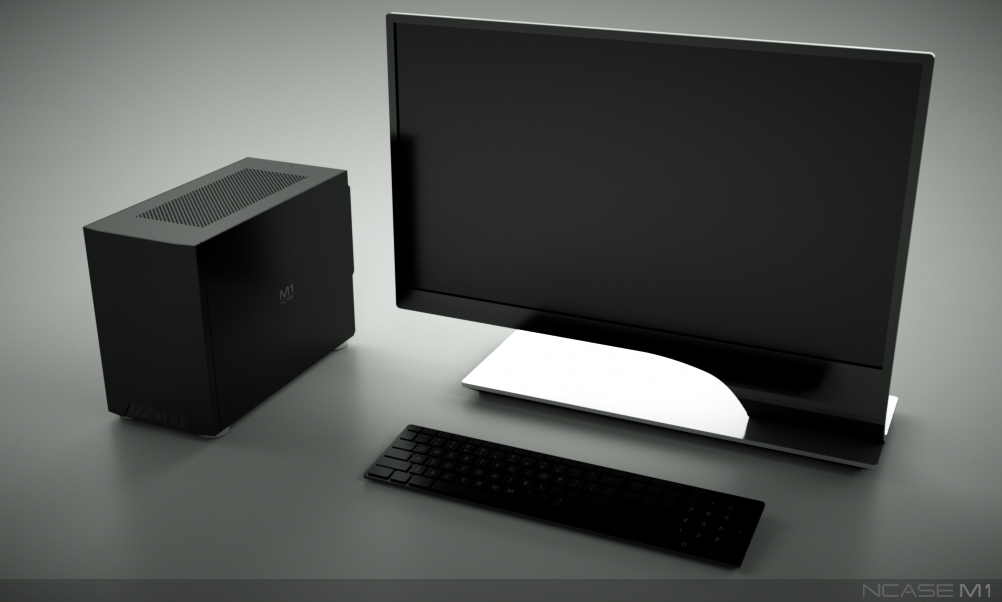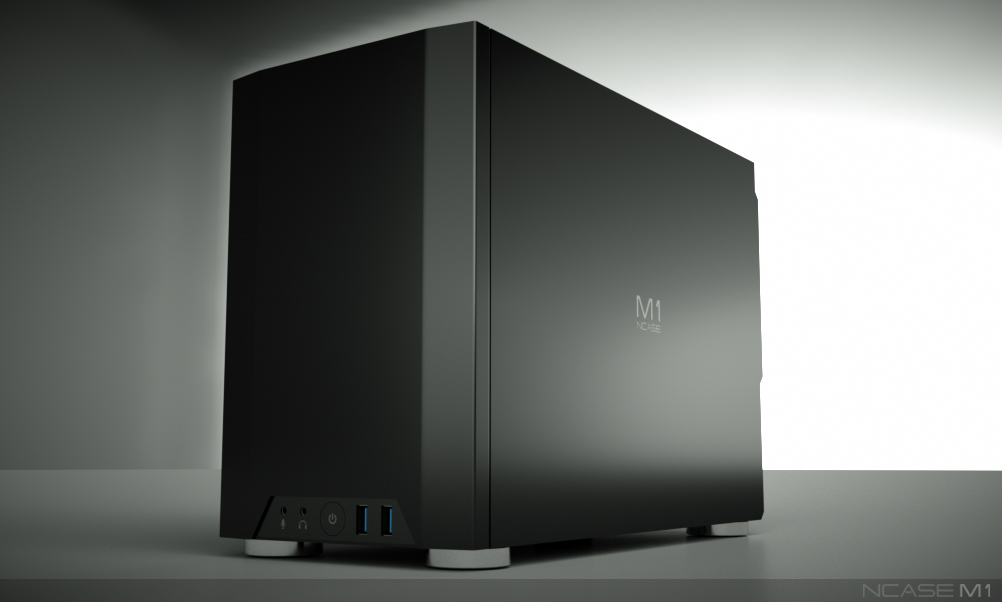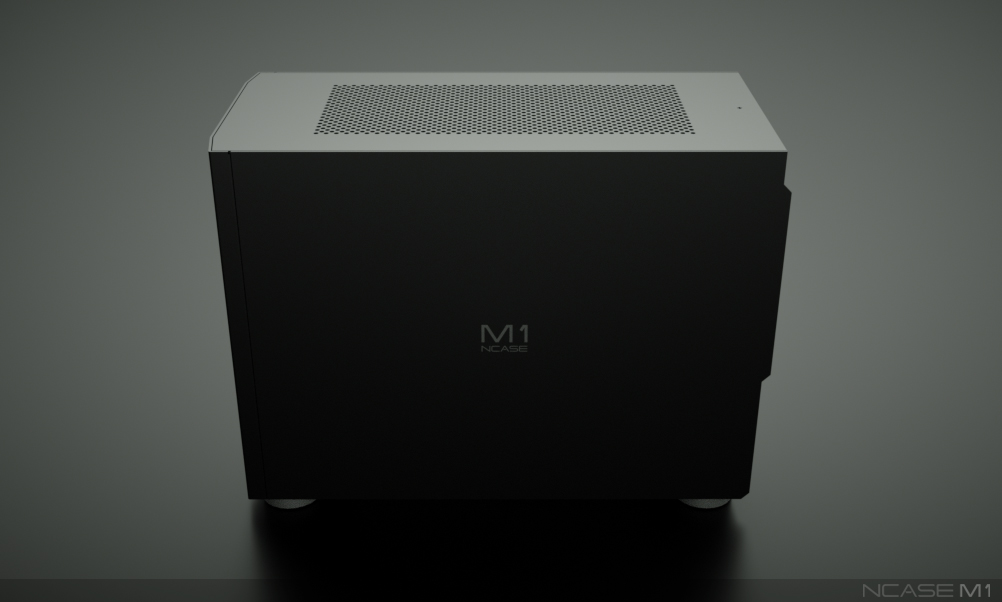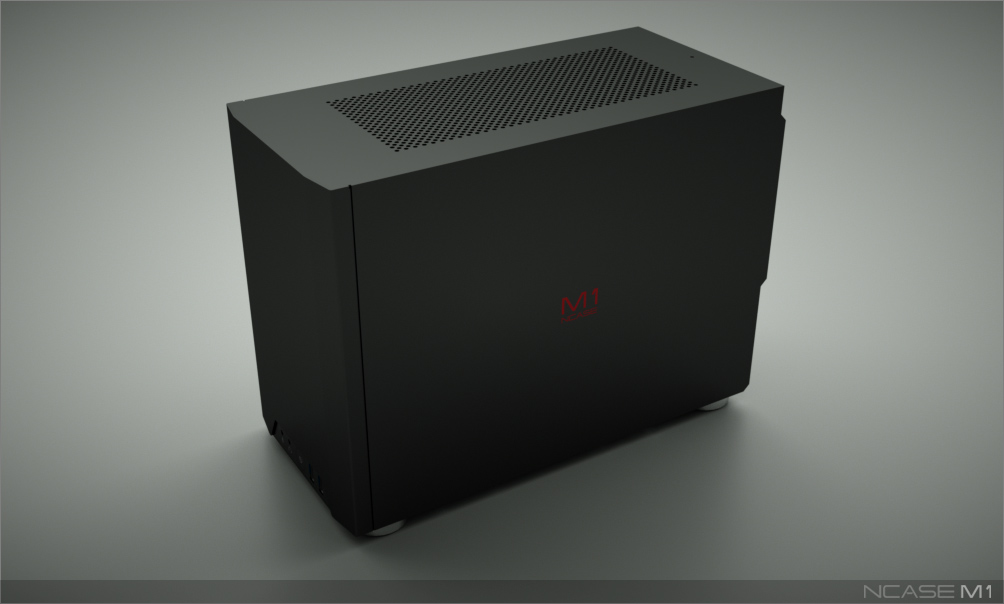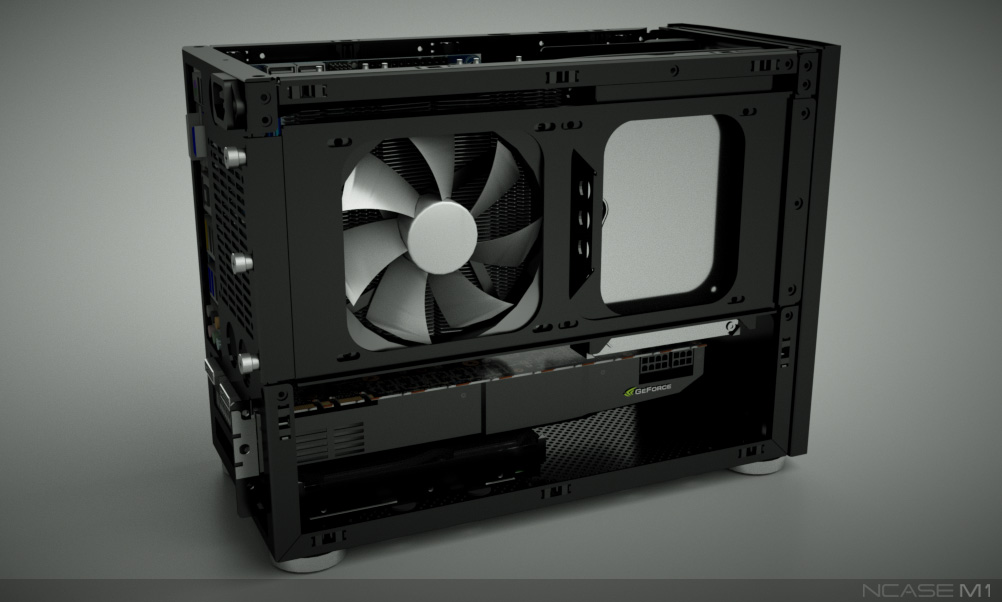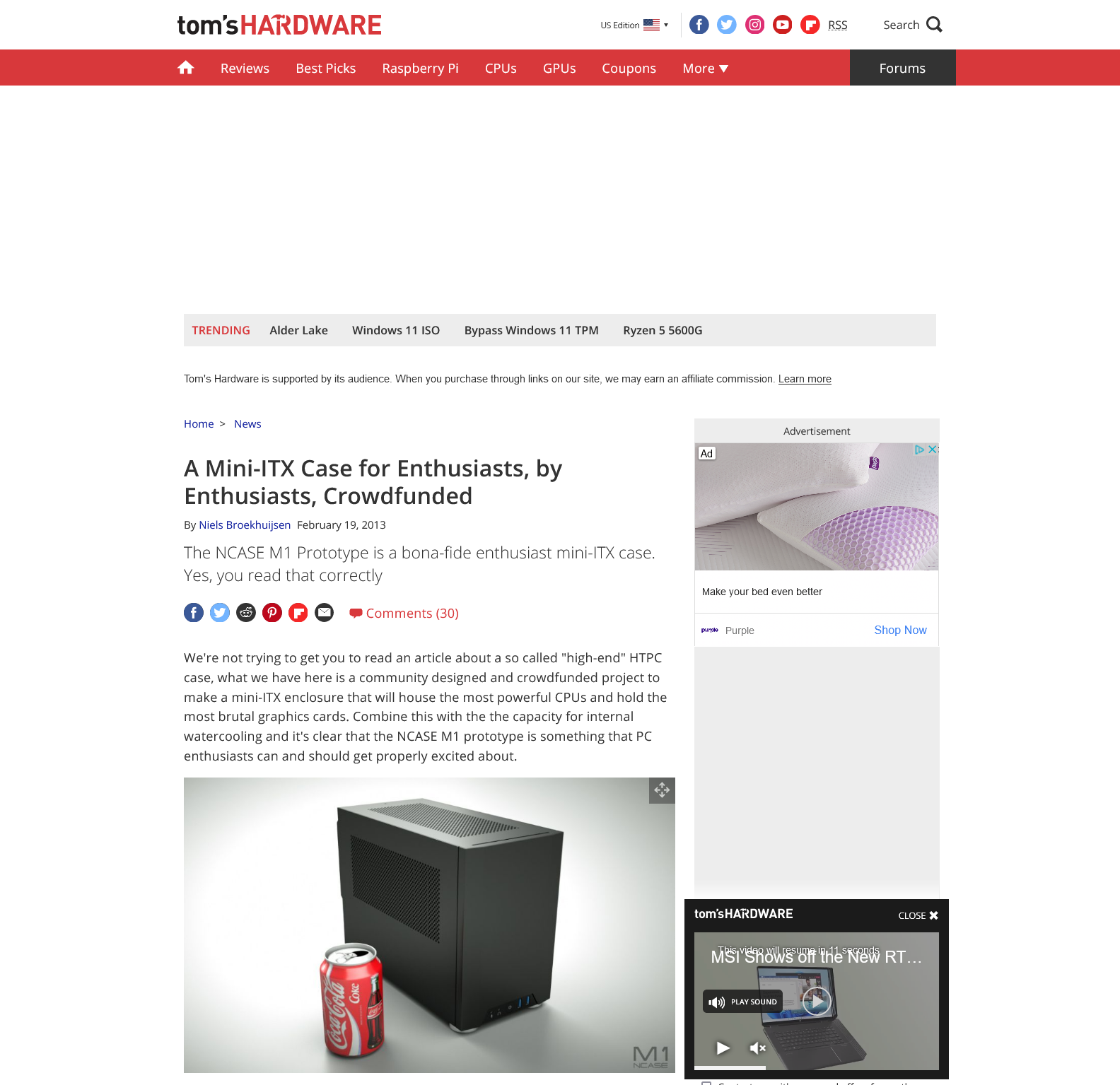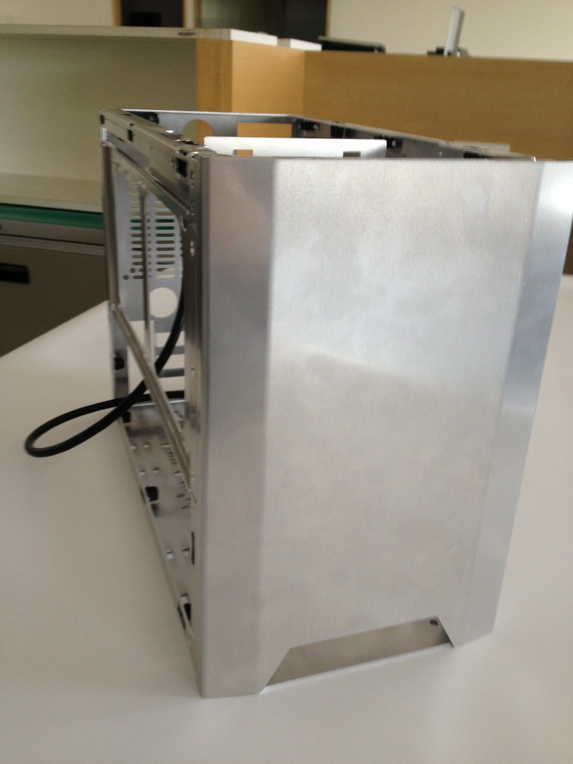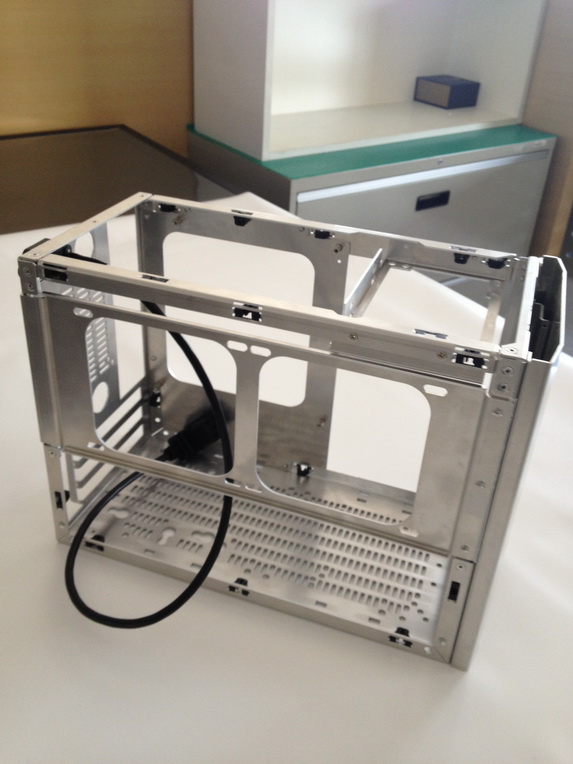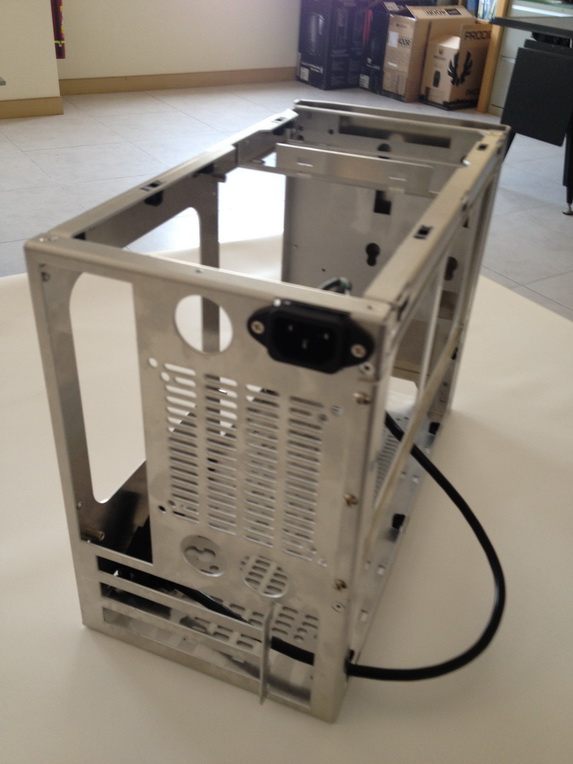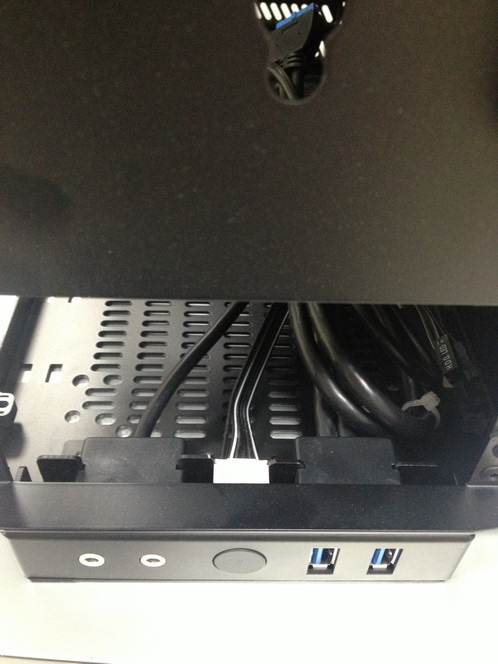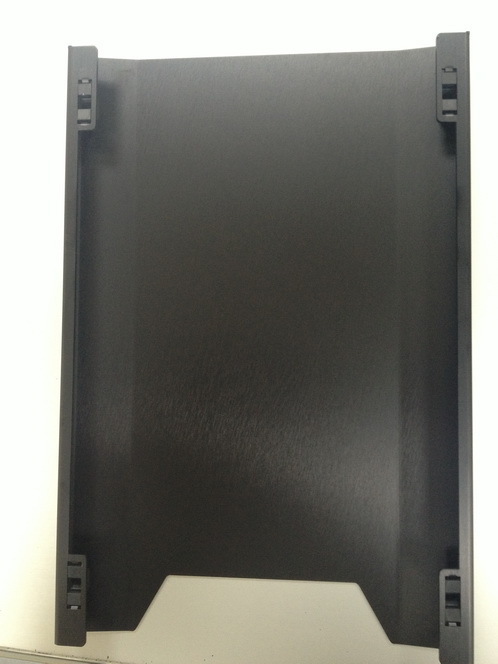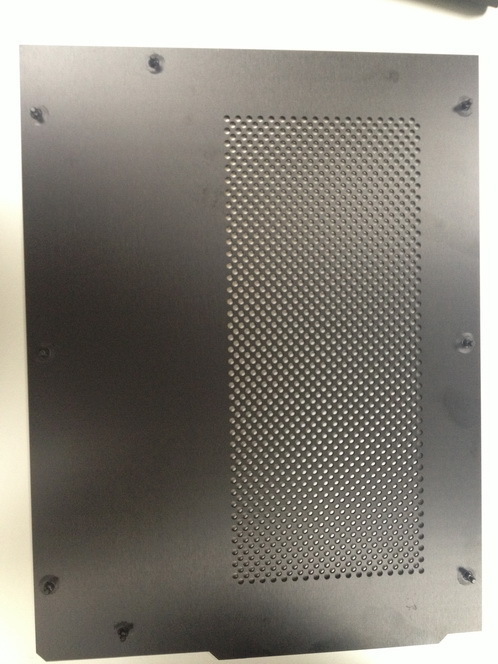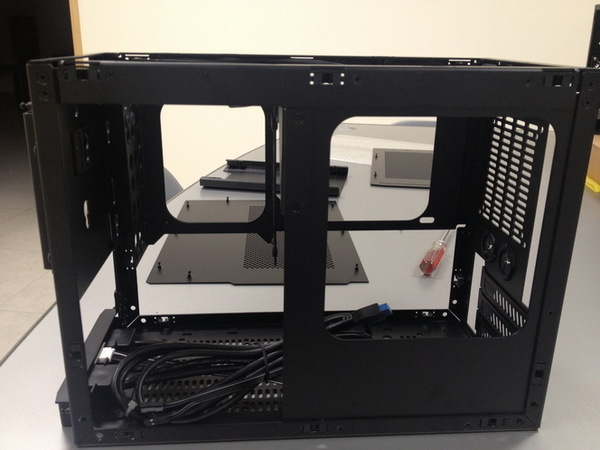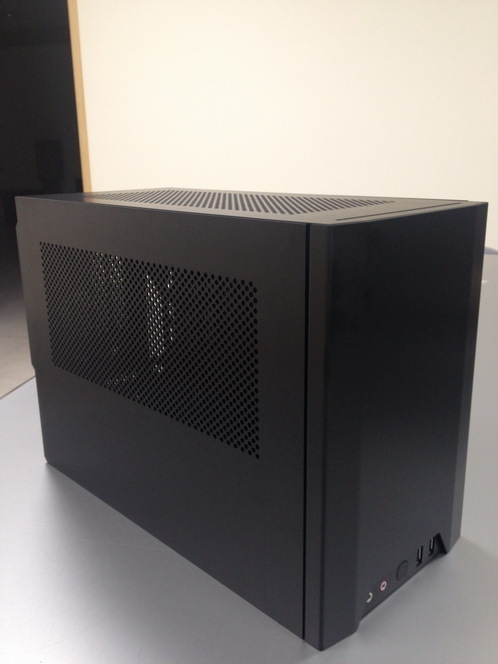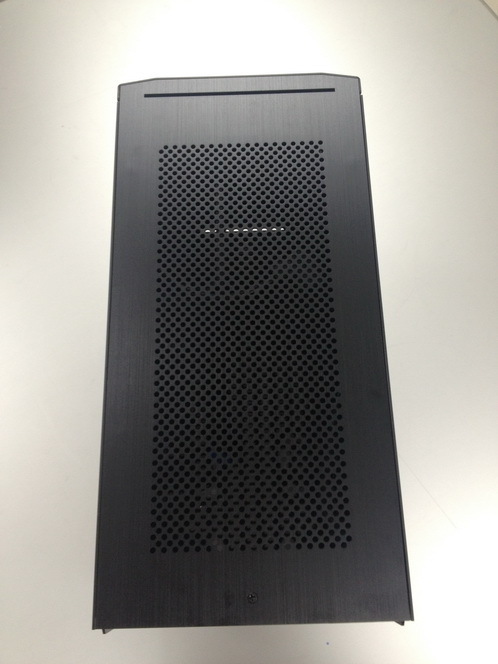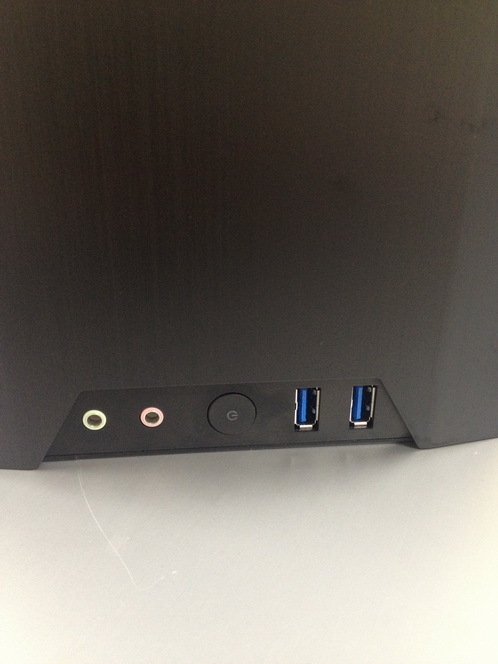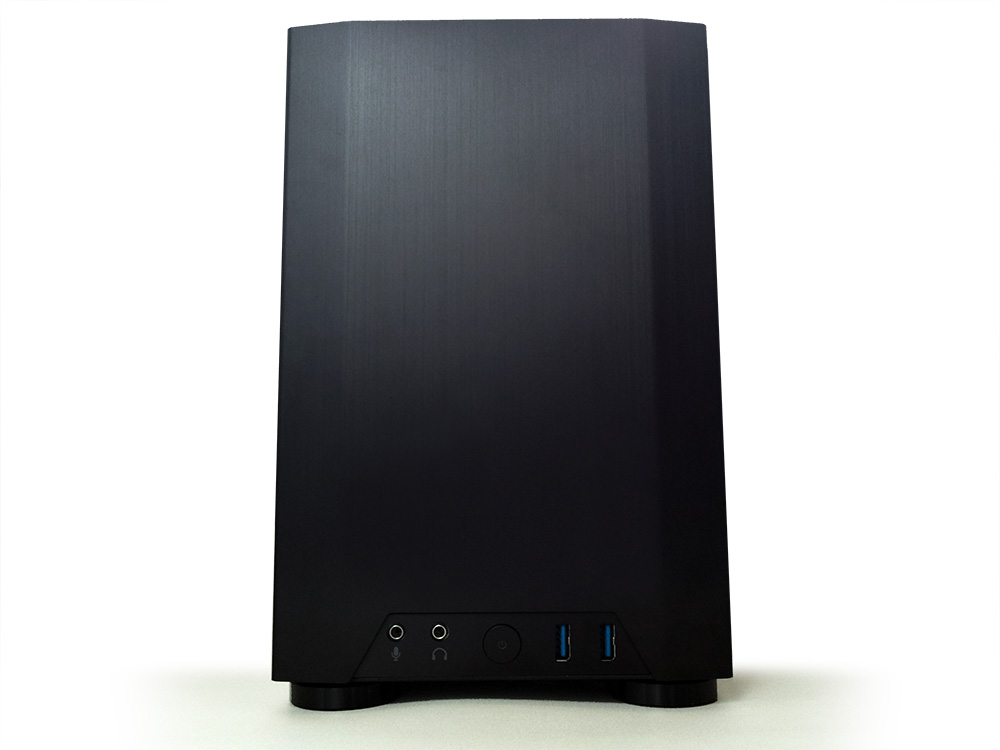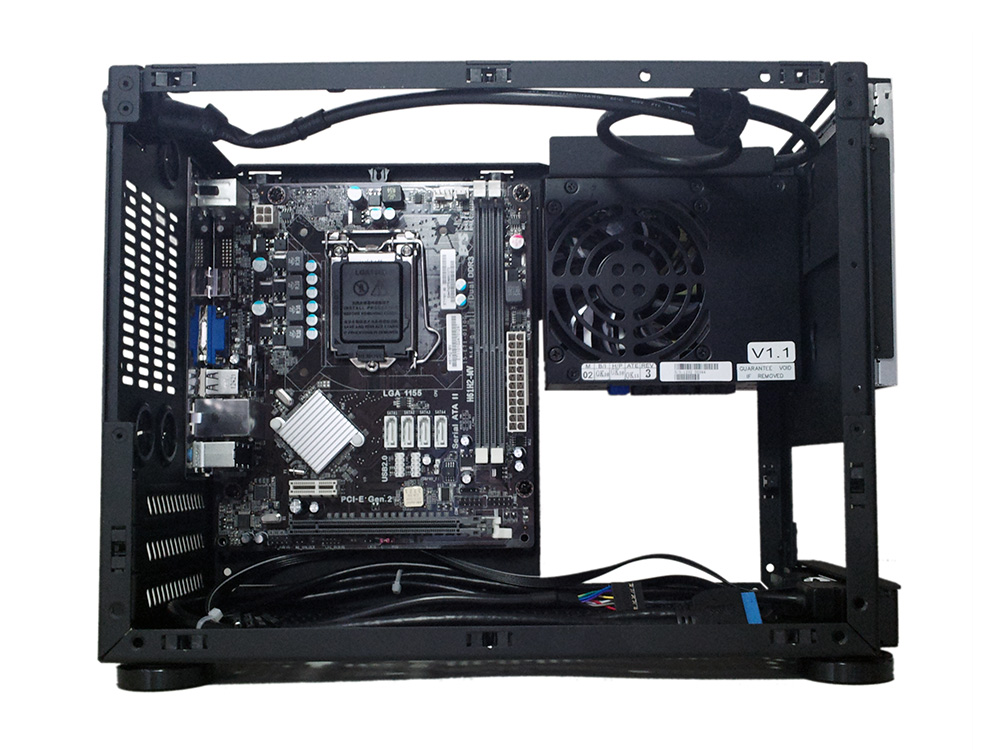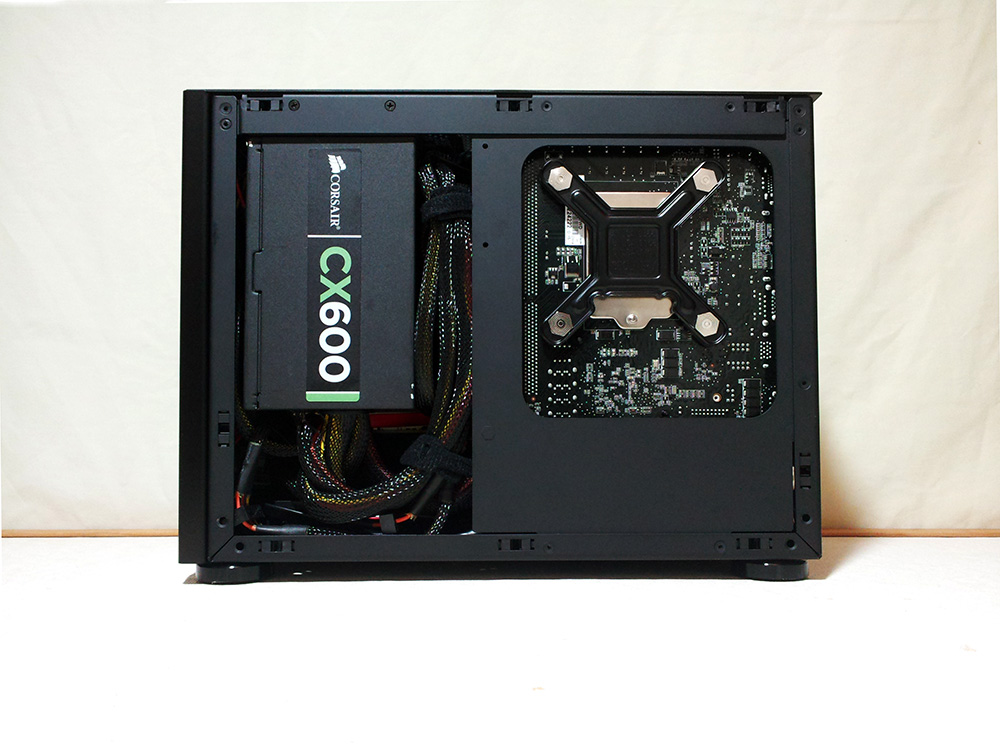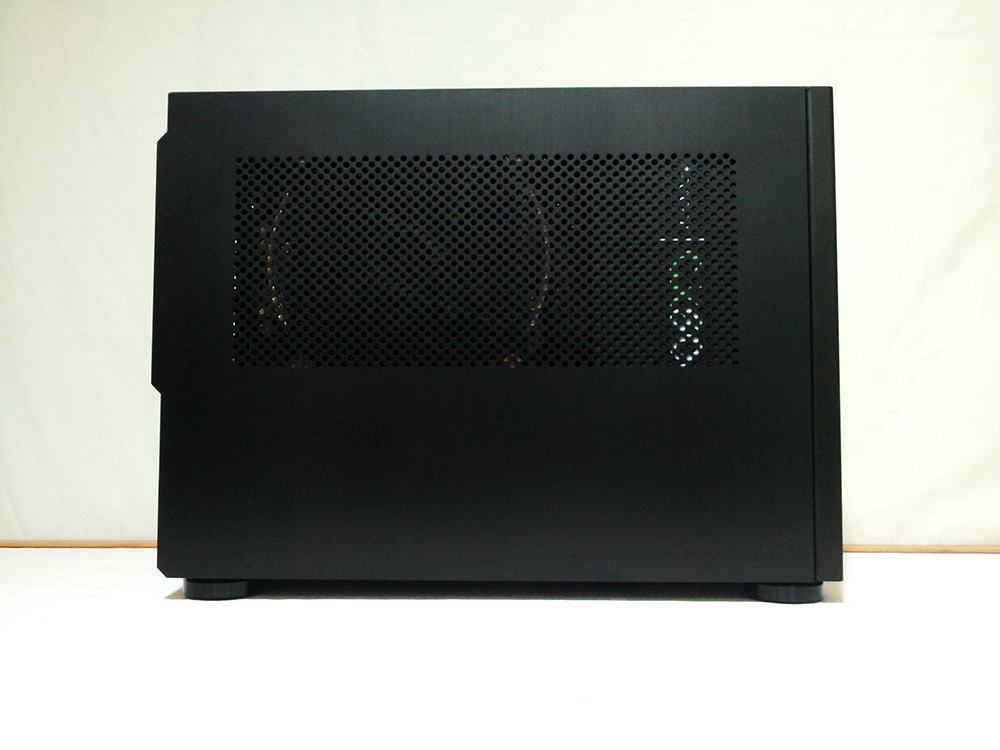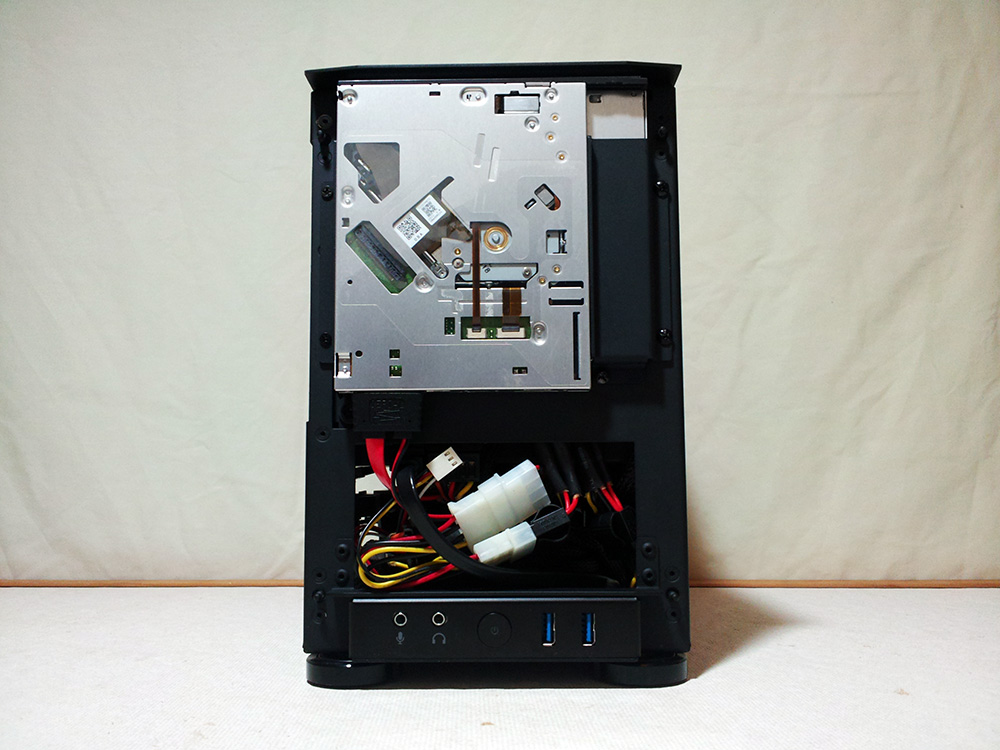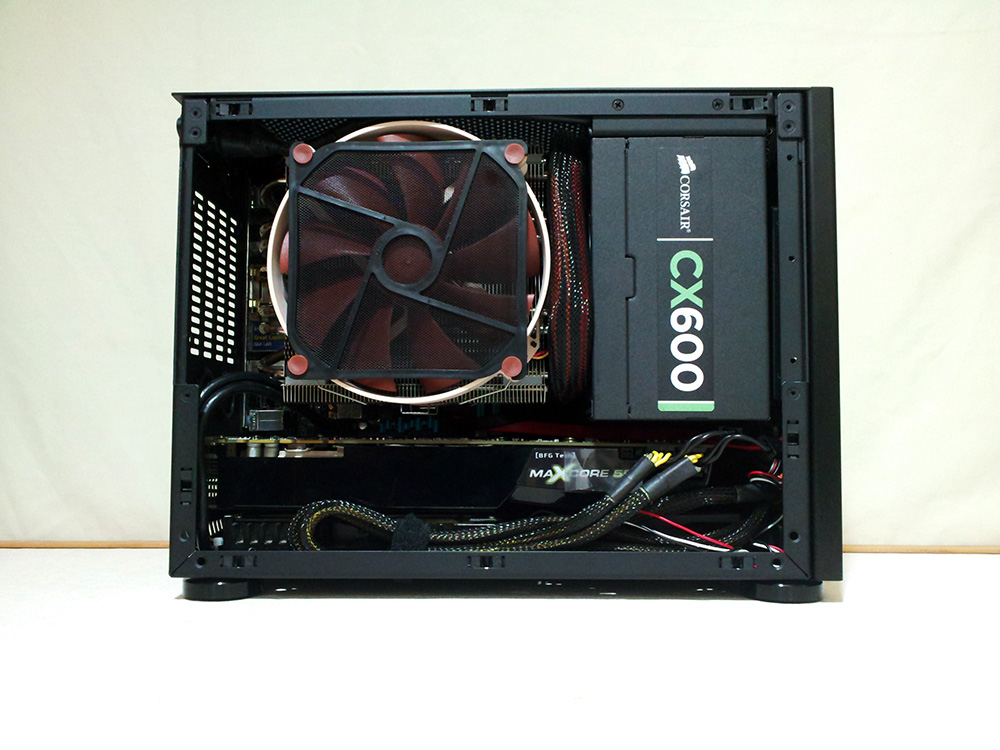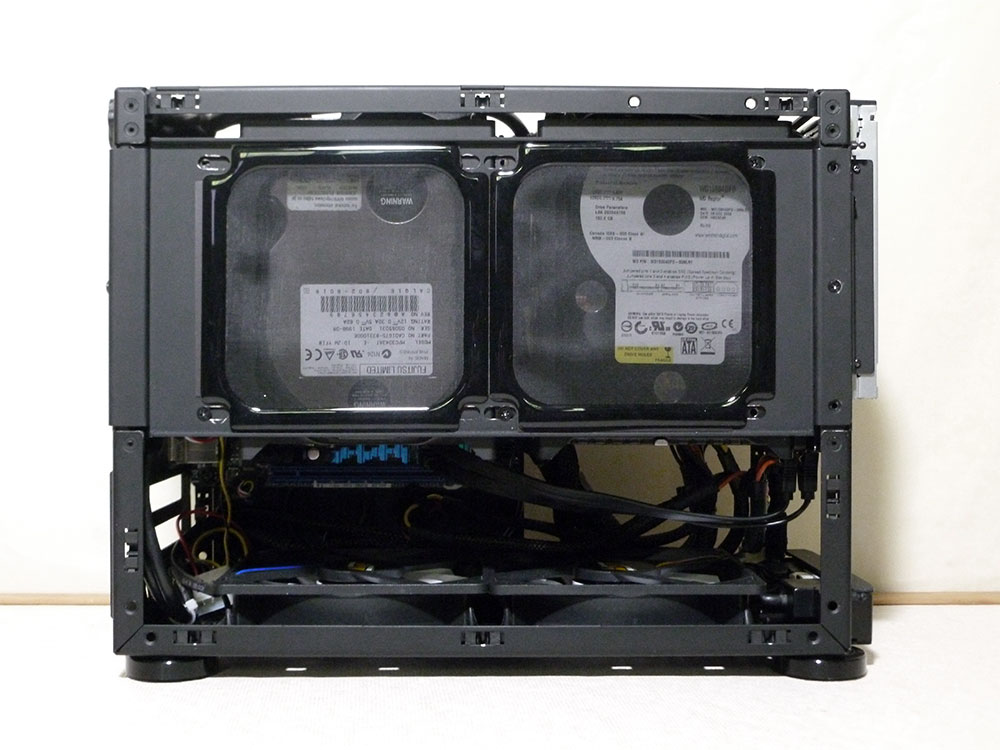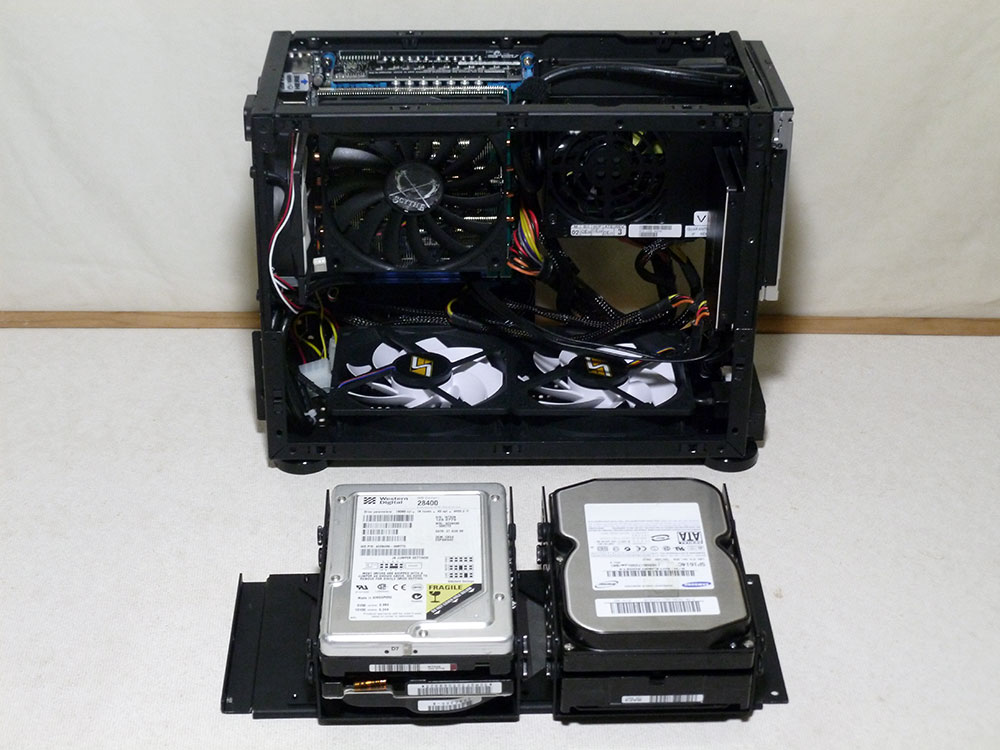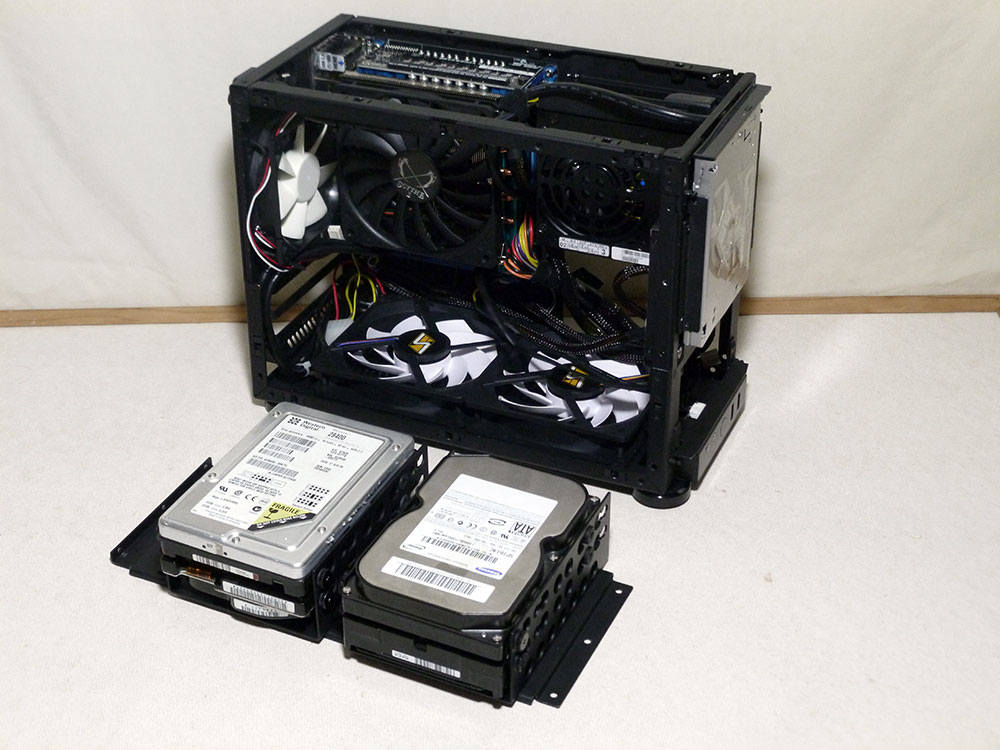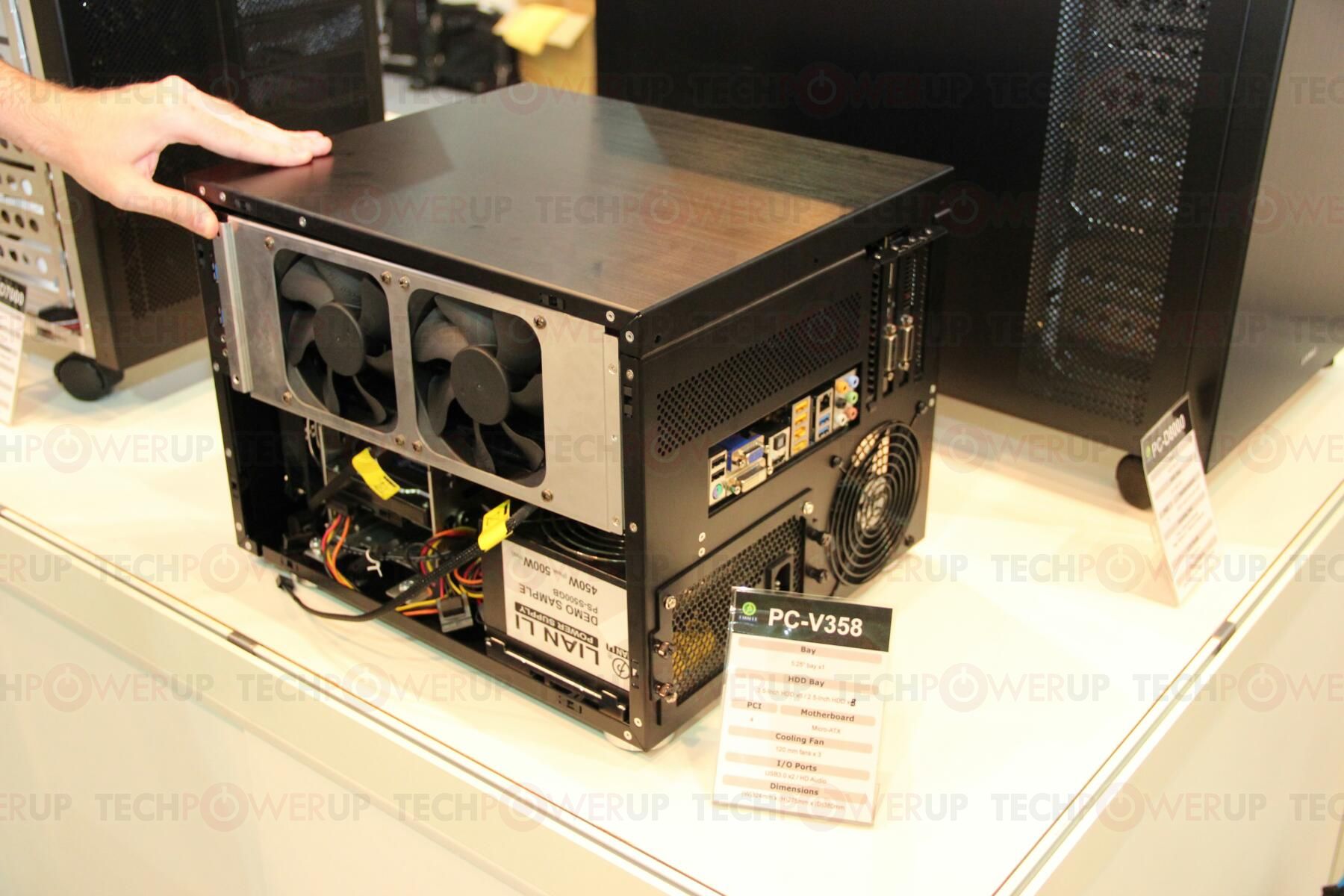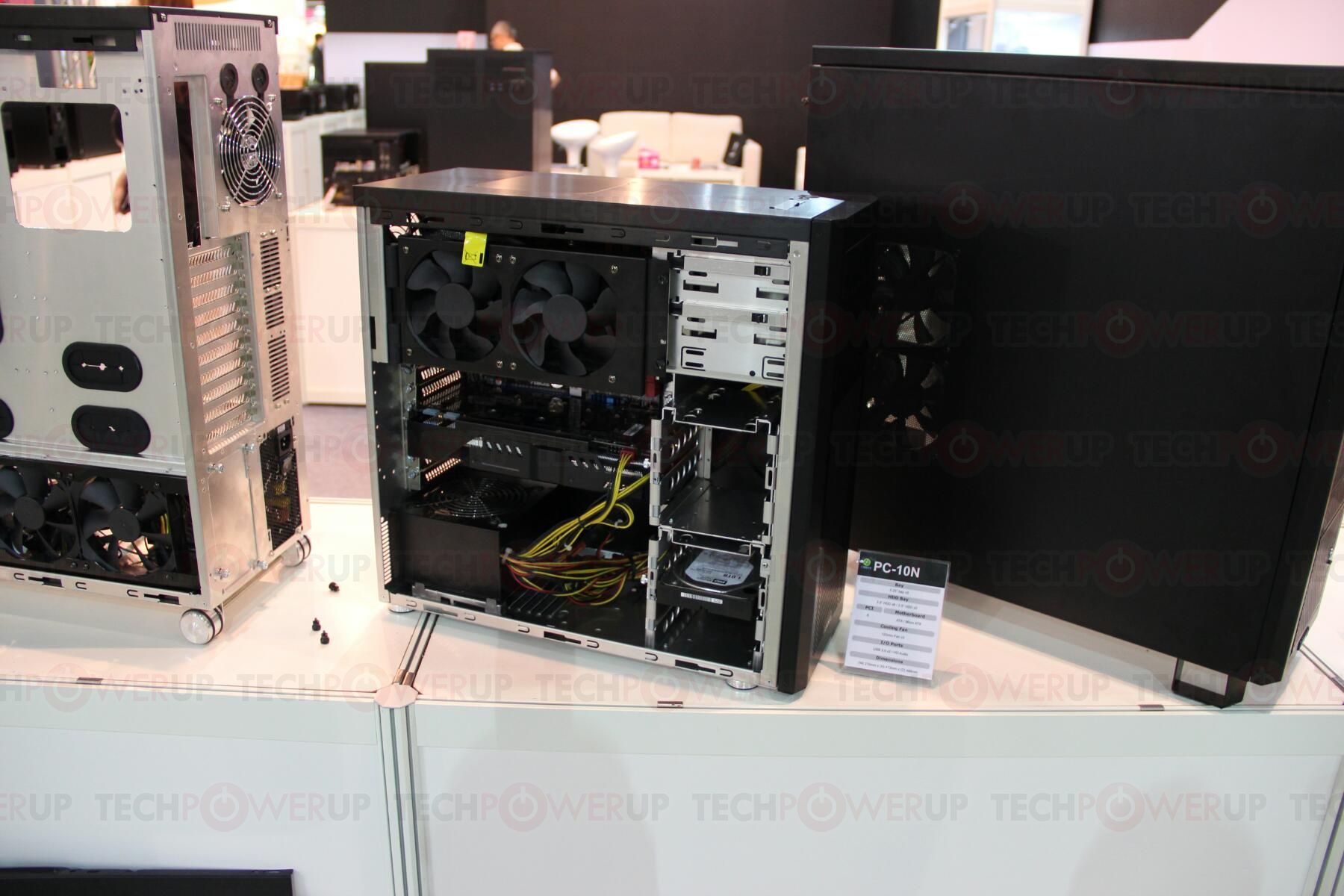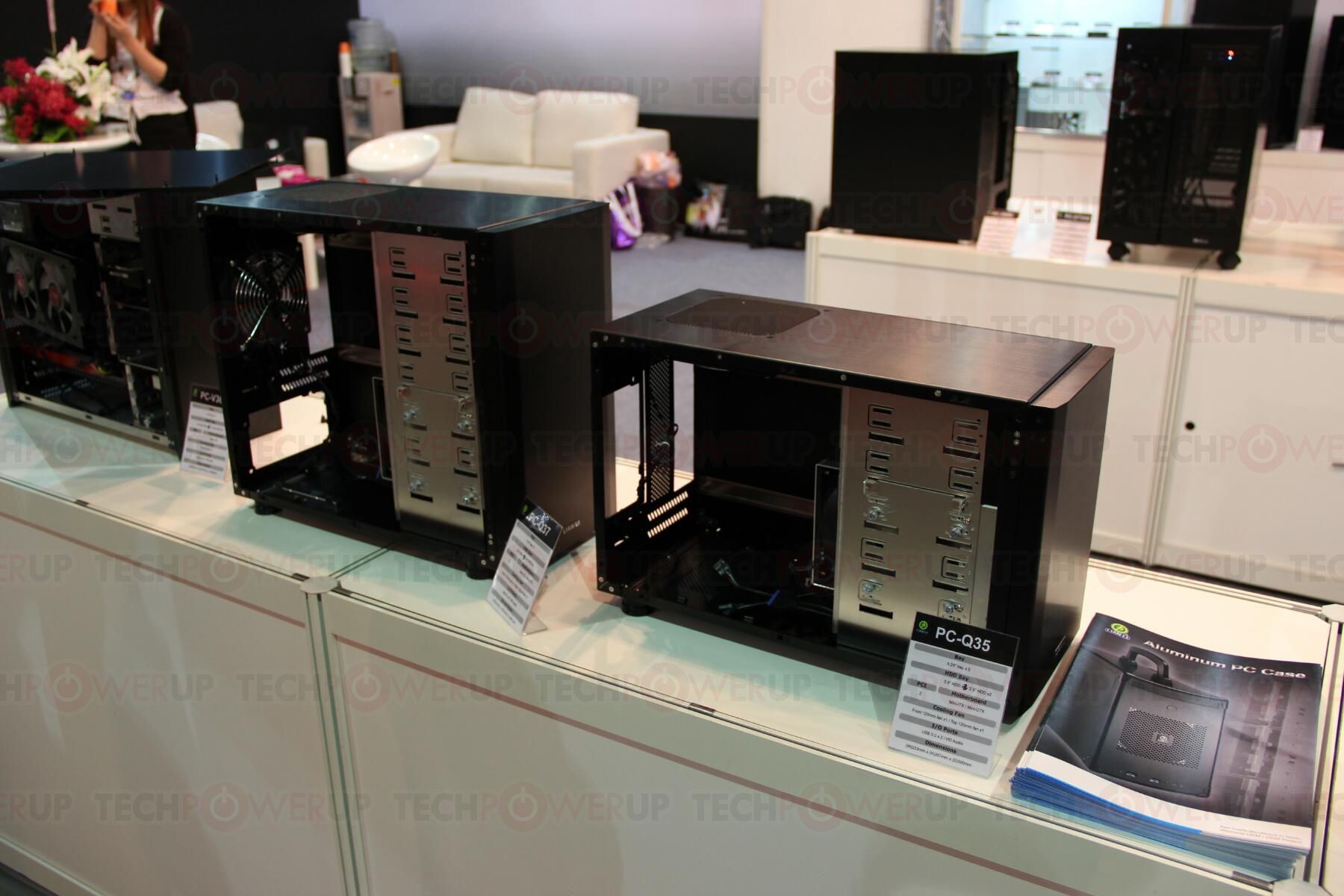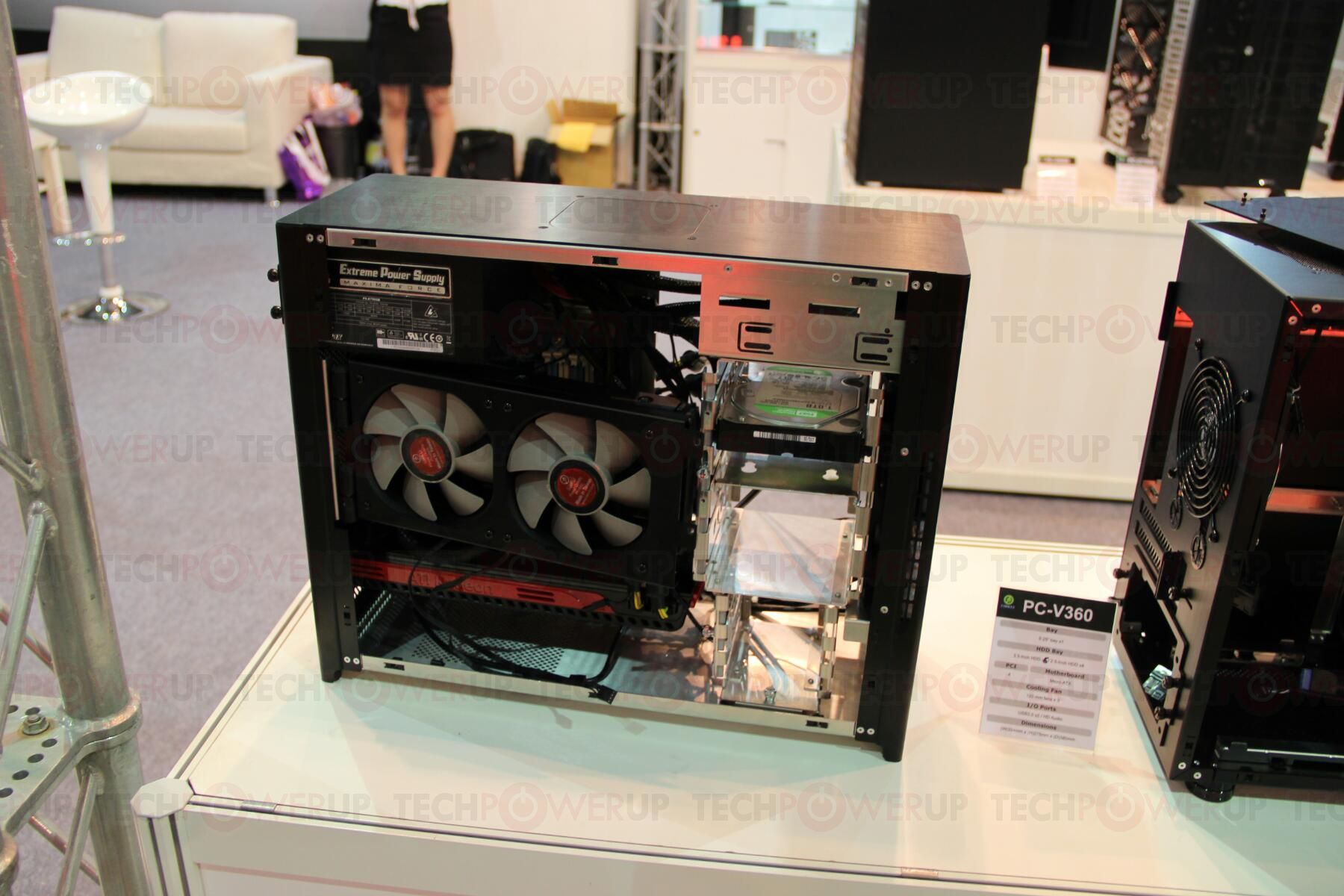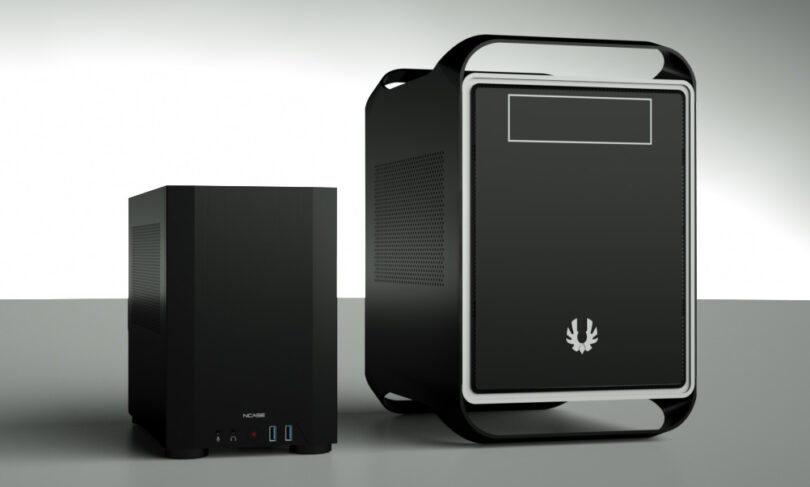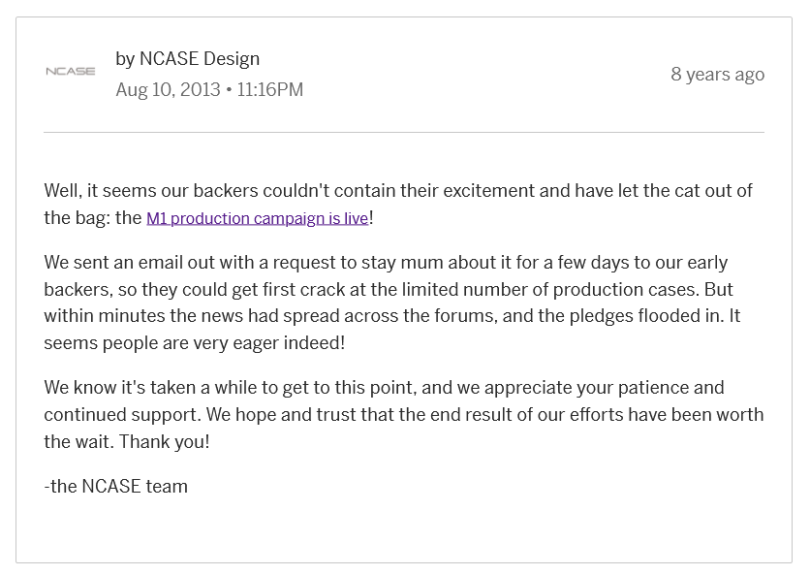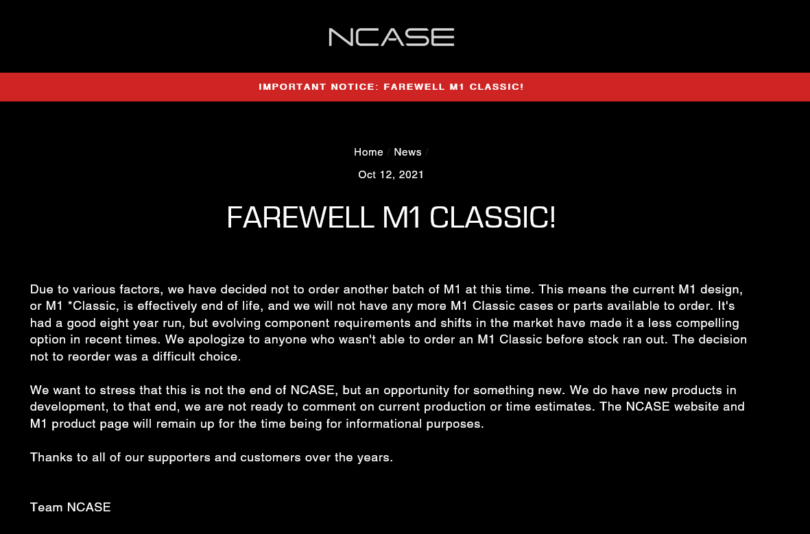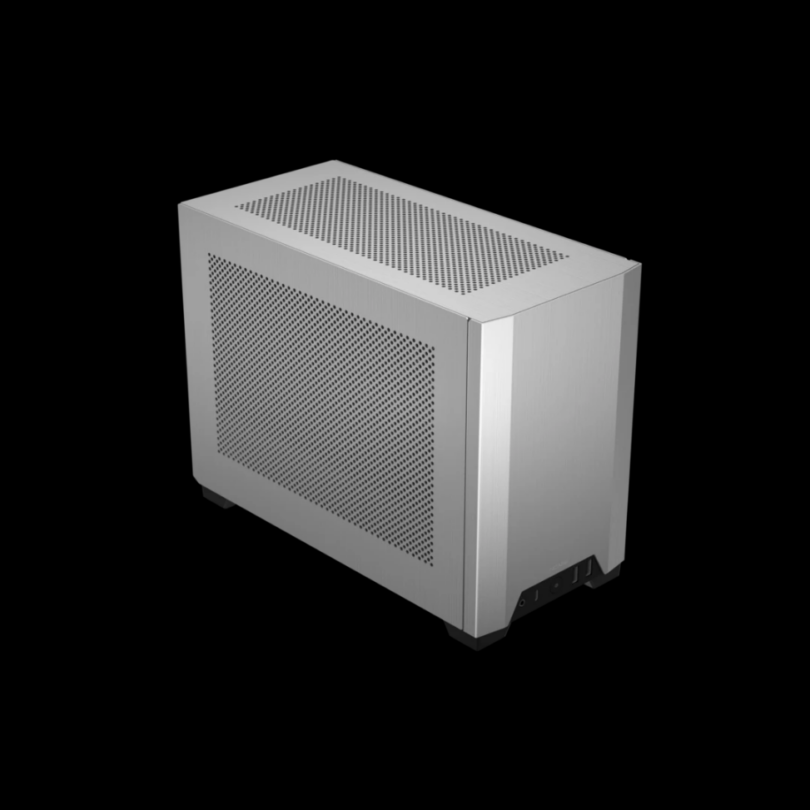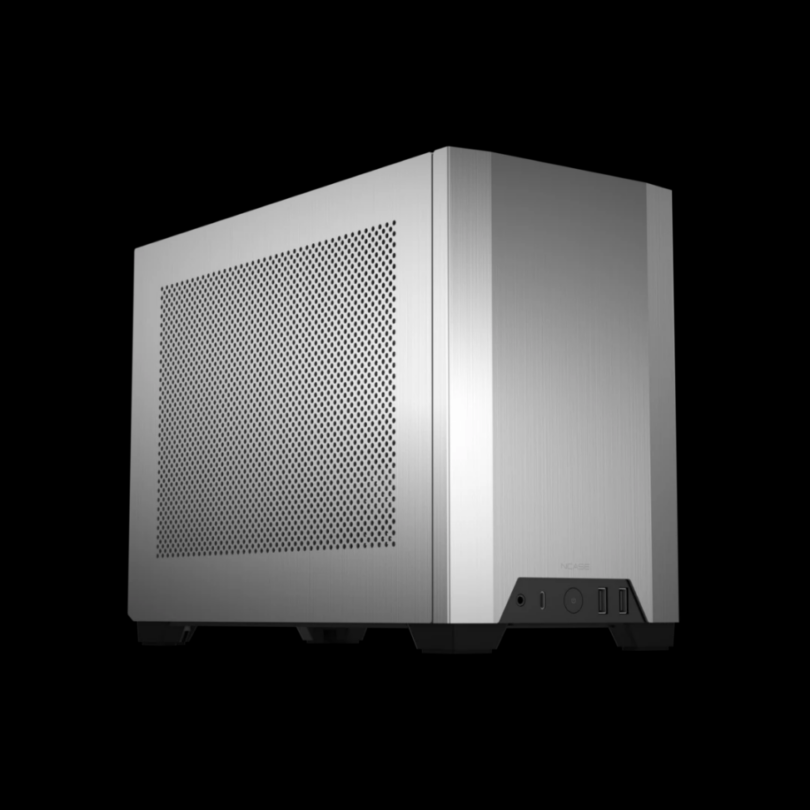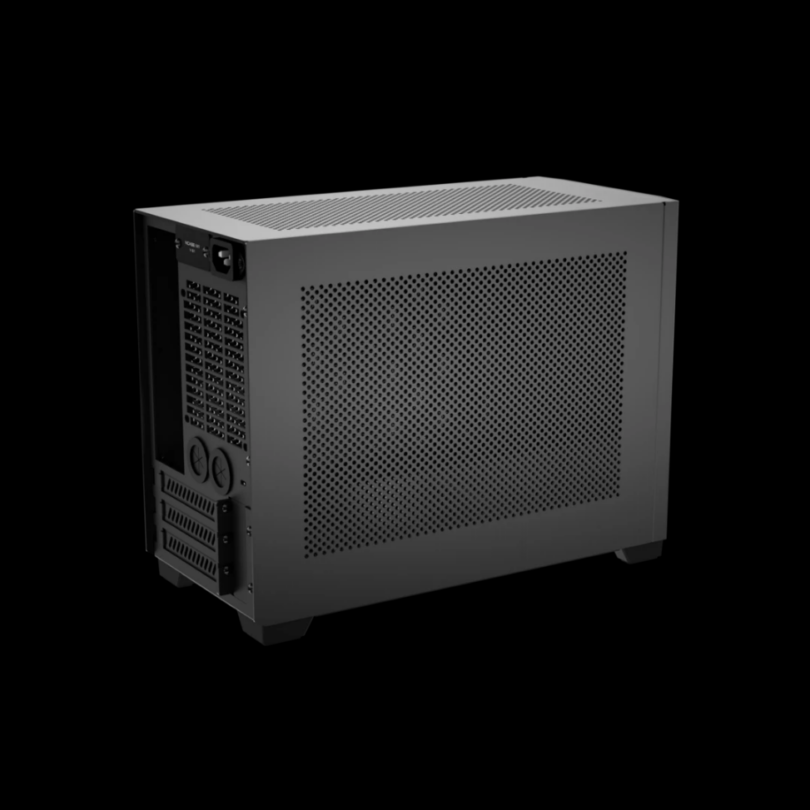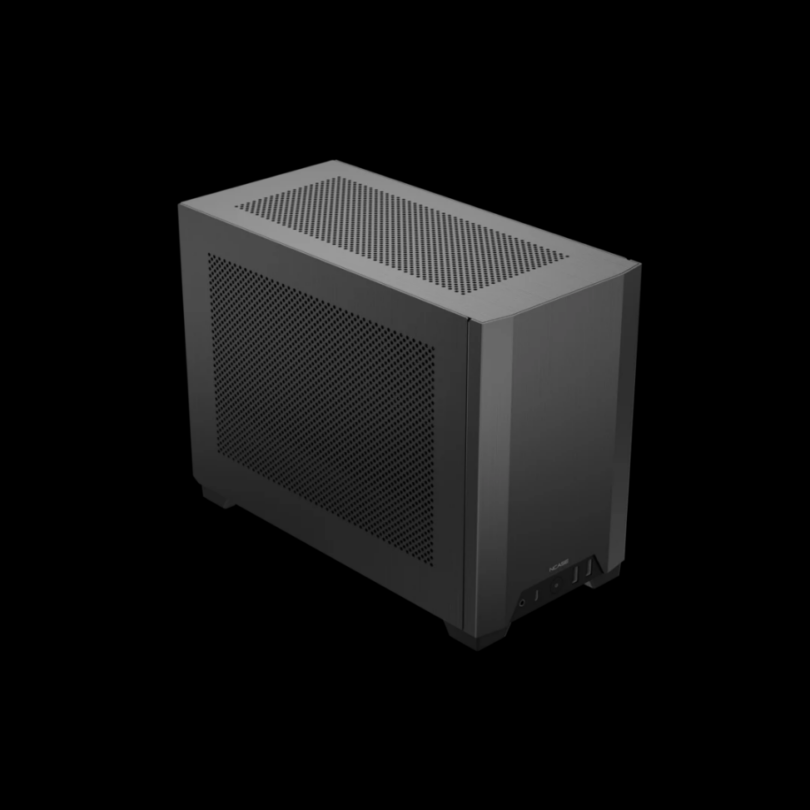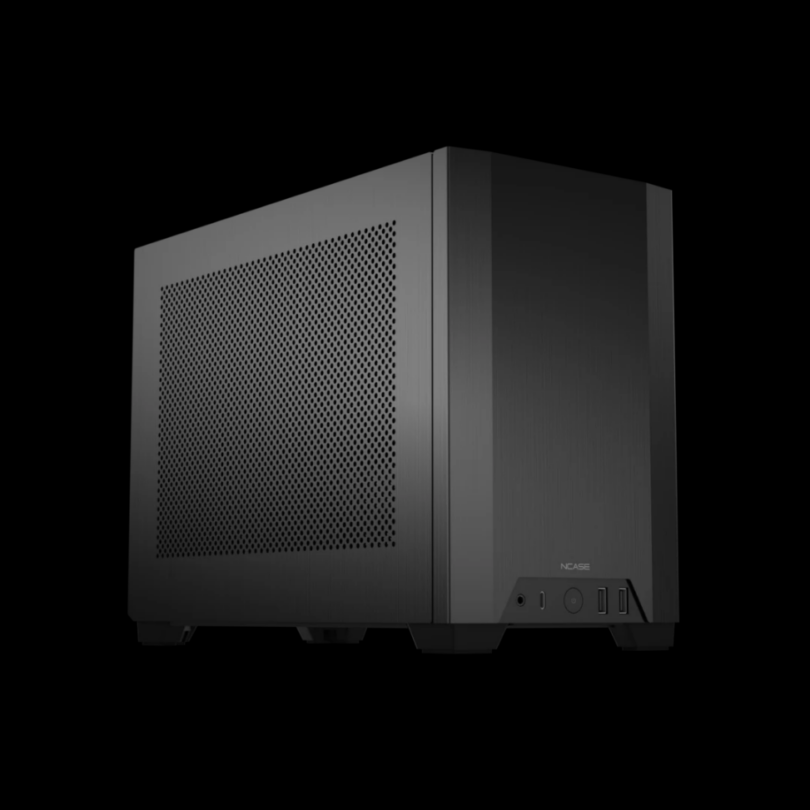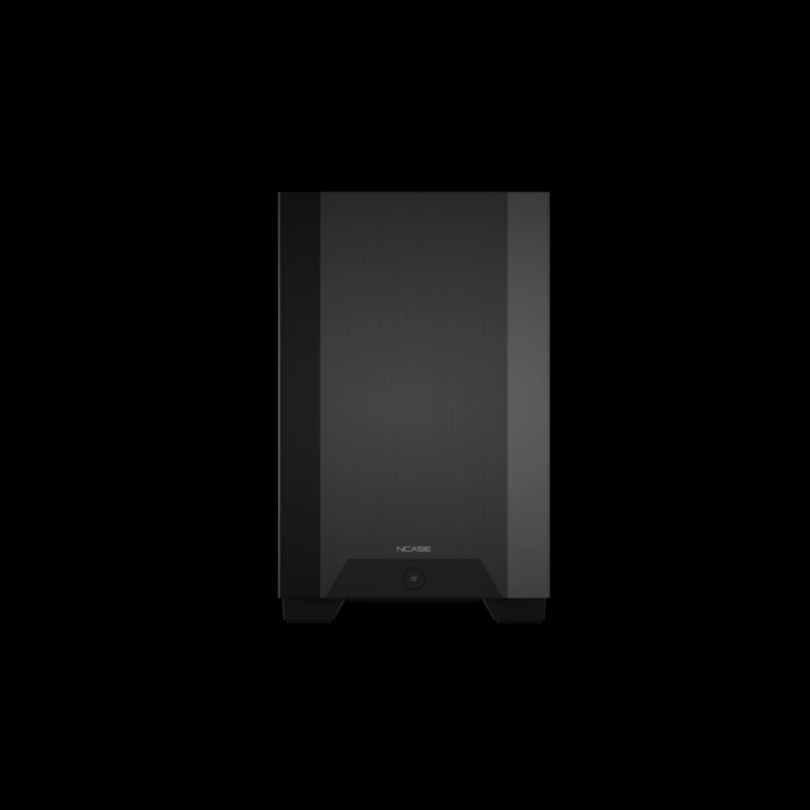
Image Credit: All images in this story are from Necere or Wahaha360 via the Hard Forums NCASE M1 thread, unless otherwise noted.
This is the first story in a multi-piece endeavor to cover a case that changed the industry. Wherever possible, I attempted to let the quotes speak for themselves. To that end, they have been quoted without editing, and as exactly as modern formatting will allow.
The Launch of the NCASE M1
Written By Revenant
SFF.Network Editorial Staff Member
ALL GOOD THINGS…
The legendary NCASE M1, born from a seemingly random forum thread on small sub-form of Hard OCP, on September 15, 2012, is no more. It started as someone looking to make a variation of a Silverstone case, and ended with possibly the most iconic case in the Small Form Factor community. It opened doors for designers, and showed what a community was capable of. Nearly a decade later, people still found themselves returning time and time again to the M1 as the design was such a good balance of compatibility, design, and size. Many owners and fans bought multiple versions of the M1, and many manufacturers copied its design and features.
On October 12,2021, all of that ended when the SFF community was shocked to see a message on the NCASE website.
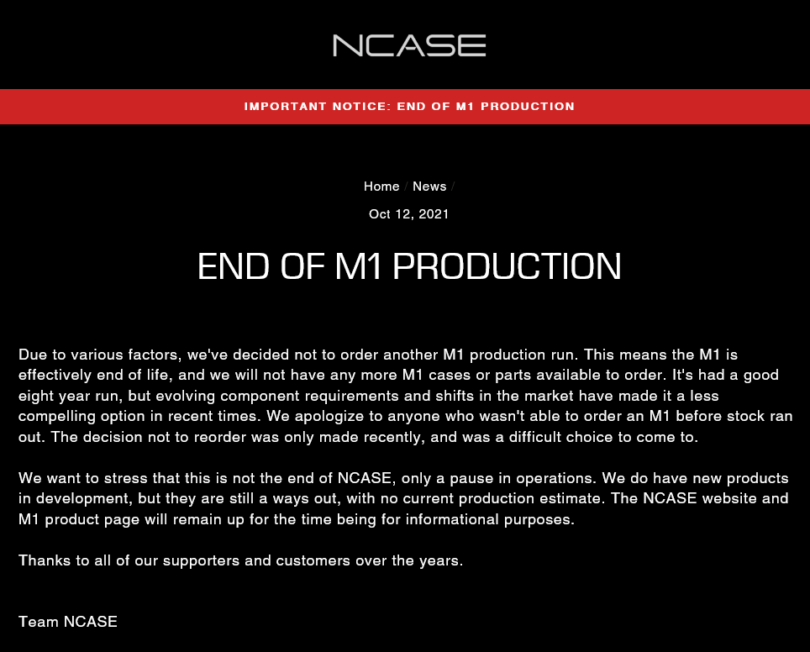
THE BEGINNING.
On September 15th, 2012, an easily overlooked thread appeared in the Small Form Factor sub-forum of HardForums.com. The title was “Aluminum SG05 evolution by Lian Li”, and the poster was the then unknown Wahaha360. The original post spoke of wanting to find a case inspired by the Silverstone SG05, but made from aluminum. The initial responses did not fair well.
“Best of luck with that. I bet Silverstone won’t be too happy.” – adjas, September 15th, 2012, Post 2
“yeah thats just waiting for a lawsuit. what correspondence do you have with lian li about this? lian li makes numerous new cases every year, whats to stop them from just designing their own case with a similar layout but in their style?” – ekuest, September 15th, 2012, Post 3
“This doesn’t even pass the smell test.” – vipz, September 15, 2012, Post 4
It wasn’t a good start, though some users did offer ideas. Hard Forums was, and still is, a sharp tongued forum of die-hard PC hardware enthusiasts. It takes quite a bit to impress them, and while they welcome new comers into the forum, they are wary of seemingly outlandish threads. On post number 10 however, a user named Necere entered the conversation, and the birth of what became M1 began.
“Why not get them to do a modified version of one of their current cases? If you made the PC-Q16 a bit wider to accommodate a pair of expansion slots and maybe opened up the front ventilation a bit more you’d basically have the SG05 (sans optical drive).
edit: in fact, if you’re really going forward with this and can get the capital together, talk to me. I have some ideas for the design (check out my SG09 redesign, if you haven’t). “ – Necere, September 15th, 20212. Post 10.
By September 17th, on Post 41, Necere showed his first designs based on what forum members and Wahaha360 had spoken of.
The initial designs were for a narrow vertical tower. Necere produced dozens of samples and posted them to the Hard Forums thread with posters responding, sometimes within minutes, and revisions coming fast and hard. It seemed everyone had an idea of the perfect case, or perfect solution. Necere worked on the elements of the design, and while the early prototypes didn’t become the M1, some of the design elements would later find their way into modern cases and prototypes we see today. It was on October 19th, 2012 that the M1 we all know and love started to truly take form.
THE TRANSITION
“So due to the somewhat stringent requirements of our design it turns out that it’s a bit of a challenge to get everything worked out the way we want. That in mind, I went back to the drawing board and came up with something completely different (and more traditional), but comparatively simple to manufacture. I’m presenting the rough version here to see what you guys think and get some feedback. We’ll call this Concept 2.” – Necere, October 19th, 2012, Post 195
The new design, called Concept 2, was a far more traditional design. It had some of the elements that would come to be part of the M1 DNA including the motherboard placement, PSU placement, a vented top panel, and general front I/O. One of the most important design choices made for Concept 2 was the inclusion of three PCI slots. Though Necere, Wahaha360, and users didn’t realize it then, the inclusions of a simple third PCI would save the M1 from the ballooning size of GPUs as axial coolers began to dominate the market a decade later.
(On the left is a GTX 580 reference design which was popular and powerful when the M1 concept began. On the right is an Asus TUF RTX 3090 that fits albeit barely into Version 6 of the M1. Note the size difference based on the PCIe slot connector. While the M1 still has fitment limitations, there are versions of even the highest end cards that still fit today.)
The design ideas continued to flow from forum members while Necere continued to pump out renders and revisions. Wahaha360 coordinated behind the scenes, and worked on manufacturing. There were debates about how many millimeters to add or subtract, as users reviewed every detail in every measurement of the designs and potential components.
On October 20th, 2012 (Post 212), just a single day after introducing Concept 2, Necere released Concept 3 for the M1. Two elements of the M1’s iconic design language would be introduced with this concept; the chamferred front panel, and trapezoidal shaped front I/O area. SFX power supplies were introduced, and more ventilation was included much to Necere chagrin. Necere was never a fan of panel ventilation holes. However, the whole of the internals were flipped and reversed from Concept 2. It was a display showing how close but how far the case had to go.
“Alright, lukewarm response on concept 2, so next iteration… Borrowing heavily from my SG09 redesign with the look on this one, a bit of a change layout-wise. Dropped any pretense of trying to stuff in an ATX power supply – just couldn’t make it work comfortably. SFX only on this one. 450W is enough for small box like this, right?” – Necere, October 20, 2012 – Post 212
Again, forum users gave their input, some of which was contradictory.
“Heh… I make it smaller and people want it bigger…” – Necere, October 20, 2012 – Post 214
By now, the thread had grown in popularity and was getting exciting; with people were posting constantly. Design debate continued from poster to poster with some wanting it bigger, some wanting smaller, and some wanting it a completely different shape. On October 31st, 2012, Necere released design version 3.1 and the case was truly starting to take on the iconic shape that would become the M1.
However, it wasn’t until the first fully rendered concepts debuted that users truly saw the potential of the project. On November 16, 2012, the first rendered concept was processed by Necere’s twin GTX 260s in 8 minutes, and released onto the Hard Forum as post 287.
To say that users were happy with what they saw would be an understatement.
“Shut up and take my money” – K1tty vs Futurama meme. Post 288
“Wow, great job Necere” – Machupo Post 289
“oh my god” -ekuest Post 290
But the design was far from what would become the final M1. The forum continued to go through design ideas for everything from cooling vents to the case feet. Nearly a decade later, we can be truly thankful that it didn’t launch as version 3.1. That version would have been far more GPU and CPU cooling restricted compared to what the M1 launched as. Still the case was getting closer and closer to completion. Two days later, Necere debuted Concept 4 and the M1 we all know and love, first appeared.
“Alright, you asked for smaller (some of you anyway), smaller it shall be. I had to get pretty unorthodox to get everything packed in, but I managed to cover all the bases in terms of the most asked for stuff. A single 3.5″, two 2.5″ drives, 10.5″ GPU – it’s all there. The big thing though is the cooling: you can either go for a nice top-down heatsink, or… a dual 120mm radiator. Yep – you could stuff a Corsair H100 in this case. How awesome is that?” – Necere, November 18th, 2012 – Post 327
This concept, while far from the final product, introduced the biggest innovation to the M1 to date: side mounted radiators. The side mounted AIO support allowed for up to 240mm AIOs to be included in the case. While such large coolers were not truly necessary for the I7-2500Ks and I7-2700Ks that dominated the forum at the time, they would eventually would become defacto minimum for the scorching hot many core CPUs that would come late in the M1’s life. No one at the time expected to be jamming 8-core, let alone 16-or-more-core CPUs into ITX boards. This design innovation is what allowed it to happen, and for the NCASE M1, to remain capable of handling almost any CPU made throughout its life.
The forum members again dove into the comments to compliment and critique the design, and on the next day, November 19th, 2012, the first render of Concept 4 was released.
It was also about this time we learned some history about Necere background, inspirations, and concerns through post number 343.
As a kid, though, I spent a lot of time designing lego spaceships, and drawing meticulously pencil-shaded plasma rifles, so thinking up cool designs is something I’ve kind of always done.
To be honest, I’m not sure I’d really want to do this for a living, or be any good at it. I’ve found that creative ideas and problem-solving inspiration comes in spurts, separated by long periods of non-productivity. On top of that, in my experience the second something becomes an obligation with the attendant pressures to perform and deliver, it completely kills my creative drive, to the point I can’t even focus on the problem. So yeah, I’d make a pretty lousy employee doing this, heh. Necere – November 19th, 2012. Post 343.
Over the coming days, forum members continued to put input into the design with Necere sorting through the ideas and implementing them as much as possible. On November 24th, 2012, in post 378, Necere debuted Concept 4.1 bringing the design to closer and closer to the M1 that we all know.
Concept 4.1 revealed two more features that would become part of the M1 DNA. First, the triple slot GPU returned. Second, was the side mounted hanging hard drive cage. No longer did SFF users have to choose between storage and graphics cards. These features would help carry the design far beyond 2012 by allowing for large GPU support of modern cards, and simultaneous large storage support of 3.5inch hard disk drives.
Forum members were delighted with the design with many extolling it. However, there was still refinements to do, and Necere continued to work with the Hard Forum members.
GETTING CLOSE
“Necere, should we get a production quote? I assume no more changes?” – Wahaha360, November 26th, 2012, Post 401.
After months of work designing and redesigning, the idea of actually producing it had finally come into the picture. Who, how, and where hadn’t been decided yet. Lian Li had been the go-to choice from the beginning, but there were pricing and logistical issues to overcome. Other options such as Silverstone were also tossed into the conversation. While this was occurring, the concepts were still being iterated on with new tweaks and adjustments. As a if a predictor of the things to come, one such idea was the inclusion of modular tophats. While the M1 never received a modular expansion, aka tophat, they would eventually become a fundamental design feature of many prominent future cases.
On December 2nd, 2012, Wahaha360 posted the design that he was sending to Lian Li in post number 462. Forum members were ecstatic with the news, but also cautious of the cost. Many feared the case would be out of their price range as the began to plan out their builds. Price estimates and goals had ranged from $100 to $200, and while Wahaha360 had expressed that he wanted the case to be affordable, he was still bound by the limits of manufacturing. By December 13th, 2012 Necere and Wahaha had heard back from Lian Li. The Lian Li engineers needed some minor adjustments made in order for the design to be compatible with their production machines.
“Actually we’ve just had to make a change to the front panel that increases the length by about 4mm. Apparently their machines couldn’t make the bends the way we had it. So the length is currently ~225mm, but technically, the absolute length, if you include the tab at the back for the PCI cards, is 335mm. Worth knowing if you’ve got someplace specific it needs to fit into for e.g., transporting. Otherwise, that extra length doesn’t matter since you’ll have cables coming out the back anyway.” – Necere, December 13th, 2012 – Post 515
There were some other design, logistic, and production issues that came up as well. Forum members encouraged the duo to continue their work, and forum members didn’t hesitate to offer assistance or advice. While Lian Li was the first choice, Wahaha360 also began talking to Silverstone about production.
“Necere, I ran into the same problem with EVERY mfg. I approached with a few of my designs. Either they didn’t have a punch capable of punching the material with a pattern that large or deformation was a concern. Some suggested laser cutting the holes, but the cycle time and cost per part went through the roof. One panel very similar in size to the one you mention (fewer holes) went from $34 to $114.” – CMadki4, December 14th, 2012. Post 521.
The wait continued, Necere continued to implement features that forum members desired, and many had asked for ATX PSU support. SFX power supplies at the time were limited to a mere 450 watts of power. Moreover, with the exception of Silverstone, there weren’t many manufactures producing them. Silverstone was working on more powerful models, but there was no firm release date. Necere went forward and developed an ATX adapter.
PRESENTING THE NCASE M1.
On January 1st, 2013, in post number 669, Necere post a simple message that read “Presenting the NCASE M1.”. With that message, he posted two renders of the finalized design.
Users quickly responded to the nearly finalized prototype design.
“All my money. Take it.” – M4rk, Post 670
“it is so sexyy!” Burritoincognito, – Post 671
“I’m in for 1, and I need new underwear.”, – i2abid, Post 676
While most responses were positive, some members were more tempered. The question of the rigidity of an aluminum frame’s rigidity became a discussion point.
“I know personally myself, I would only be interested in it if it had a steel frame. I own both a LianLi PC-V351 and a Silverstone SG04b-f and I prefer the sturdiness of the Silverstone. If I am going to pay up to $200, I want something solid when everything is installed.” – dcds1, Post 673
Still, many forum members were ready to buy the case on the spot. Wahaha360 was quick to temper some of the expectations. Little did he know he had nothing to fear.
” Hahaha, our official status is still vaporware, until the product is delivered to backers, still in the dreaming phase, but it’s nice knowing there are others who share this dream.” – wahaha360, January 2nd, 2013, Post 683.
While disappointing for those hoping for an immediate start to a crowdfunding campaign, Wahaha360 still gave the members something to be cheerful for when he posted one of the most iconic pictures of the NCASE M1: The Soda Can Comparison.
The pictures received what one could call a positive response…
“I’M THROWING MONEY AT MY SCREEN BUT NOTHING IS HAPPENING :’O” – neumein , January 3rd, 2013, Post 704.
To add fuel to the fire, Necere continued to release more renders of the finalized case design.
While the forum members were anxiously waiting for the crowd funding to begin, many asked questions regarding how the name came about. Necere was quick to respond, and revealed that NCASE was not in actuality his first choice for a name.
“It’s actually a play on “encase,” which makes a lot more sense, right?
But I’ll be honest, I was never entirely taken with the name, either. But after a few minutes of tossing ideas back and forth, “ncase” came up and I mentioned I’d thought of it before and how it’s a play on “encase,” and then the next thing you know w360 registered the domain. It was fairly early in the project, so I was just like, okay… there wasn’t much debate about the name really.
Anyway, w360 doesn’t want to change the name at this point, since we’ve been in contact with various companies operating under the “ncase” moniker. But I was thinking about it, and a similar, but different and more evocative name that appeals to me: Nazca. As in, the lines in Peru. Also, the BMW/Italdesign Nazca C2. The “M1” I feel is fine though, and I like the way ‘Nazca M1’ rolls off the tongue.
Everything else stays the same – but ‘ncase’ changes to ‘nazca.’ And as I just explained to w360, that gives us a way to segue to it – the ‘n’ in ncase can be short for nazca. And I think this last suggestion managed to convince w360 to at least be open to the name change 
What do you guys think? Nazca – like/dislike? – Necere, January 4th, 2013, Post 749.
Over the coming days, Necere and the forum members would continue to toss around possible alternative names. Some were simple. Some were in Latin. However, a consensus couldn’t be reached, and ultimately NCASE M1 won the day.
“So since nobody liked any of the suggestions I tossed out, and nobody liked anyone else’s suggestions, we’re sticking with the current name. At least people are just underwhelmed by it, rather than actively put off.” – Necere, January 6th, 2013, Post 840.
While the name had been settled, the design process wasn’t complete. On January 12,2013, Necere post a render with a slim, slot-loading, optical drive. The forum users had mixed feelings about this. Some liked the idea of the drive, while others had already moved on from optical media. Ultimately, the optical disc drive would make it into the design.
PROTOTYPES AND CROWDFUNDING
The next phase was to finance the building of the prototype. When all of the expenses and fees were calculated, it would cost $3000 just for a single prototype. Crowdfunding was the source of the money, and on February 12th, 2013, Wahaha360 posted that the Indiegogo campaign had gone live.
“Eh, I told W360 I was asking Kyle for the all-clear before posting the IGG link. oh well, let’s hope it doesn’t get us banned 
But yeah, the Indiegogo campaign for prototype funding is now live! If you want to see this case happen, now’s your chance. Tell your friends, ‘like’ the page on facebook, spread the word!” – Necere, February 12th, 2013, Post 1,208.
However, the joy of the launching the prototype campaign quickly came crashing down. Kyle Bennett, the owner of Hard Forums at that time, contacted Necere and informed him that the forum rules did not allow him to post an Indiegogo campaign. No crowdfunding campaigns were allowed on the site.
Welp, Kyle got back to me – turns out we can’t link the IGG campaign after all 
Gonna be an uphill climb all the way, it looks like. – Necere, February 12th, 2013, Post 1,219.
Regardless, forum members continued to post, spread the word, and contribute. On February 18th, 2013, the prototype build was fully funded with 26 days remaining. A day later, the case caught the attention of Tom’s Hardware. Author Niels Broekhuijsen posted a news article starting what would eventually become a flurry of media coverage.
Click
HERE for the link to the original article.
However, Tom’s Hardware was not actually the first to provide coverage. That honor went to Maximum PC thanks to the marketing efforts of Wahaha360.
“Yeah, MaxPC was pretty much the first tech site that did an article on our project. W360 actively emailed several different sites to see who would be interested in covering and/or p/reviewing the case; the guy over at MaxPC liked the project and wrote an article. It think that early publicity really helped get the ball rolling on the campaign – TechSpot and PC Perspective ran stories at about the same time, and Tom’s picked it up not long after. I also wrote a press release, which is a pretty important thing to do – it gives the journos the key bits of info they need to write a decent article. The easier you can make their job, the better” – Necere, April 2nd, 2013, Post 2,037.
Raising nearly $9000 without the promise of production, the Indiegogo campaign far exceeded its goal. The order for the prototype was placed to Lian Li. On March 13th, 2013, in post 1,825, Necere revealed the first physical prototype of the NCASE M1.
“So… who’s up for some prototype pics?” – Necere, March 13th, 2013, POST 1,825.
The raw metal version was soon followed on April 1st, 2013 with the fully anodized and painted prototype.
It was clearly rough around the edges, but the fundamental design was complete. Forum members reacted with excitement at finally seeing what was once considered a lost cause become a a real thing. The celebration however did not last long as members quickly got back to critiquing the design. The prototype was just a step toward the launch of the M1. The more daunting task was to fix the unexpected issues, and to launch the full Kickstarter. It took a little over a month for the prototype to arrive from Lian Li.
On April 16th, 2013, in post 2,212, Necere reported that the prototype had arrived in his hands.
“Yes, the prototype was delivered today 
First impressions:
- It’s amazingly light. You can easily hold it up in the palm of your hand with little effort. Of course, with actual components installed it’s a different story.
- Crisp. Both the cut of the panels and the way they snap firmly into place.
- Both the interior matte black paint and exterior brushed+anodized finished are quite nice. The painted parts almost feel like they’re made of plastic, with how light they are in your hand – until you run your fingers on them or tap them, and they give a metallic ring.
- The aluminum has a bit of flex to it, and you could bend the panels and brackets pretty easily with your hands, but the chassis itself feels sturdy (though I wouldn’t want to stand on it or anything).
- Cables are too long. Will have to see about changing that for production.
- Power button blends perfectly with the painted aluminum IO module cover. It has a very shallow push-in and positive clicking action.” – Necere, April 16th, 2013, Post 2,212
One day later, he posted the first pictures of the M1 prototype with hardware installed.
The forum members reacted with their usual tempered approval…
“WTB” – Diverge, Post 2,219
“PC enthusiast porn is the best. Thx guys !” – Phuncz, Post 2,221
“It looks awesome guys!! Really great work!! I can’t wait until I can buy one!!” – Extide, Post 2,226
“My body is ready, my camera is primed for the inevitable NCASE tech porno film.” – M4rk, Post 2,227
However, with the rise of media coverage, the original Hard Forum thread had become flooded with interested newcomers who wanted to now add their ideas to the design. Being thousands of posts long, and 57 pages deep, it was difficult to catch up with all that happened in thread. It inevitably lead to some confusion, with Wahaha360 doing his best to keep things on task.
“im a noob on this forum, but can you inform me of who this “Necere” is? i see everyone asking him all the questions, and i do see some of his design on this thread.does he work for someone? who are you Necere? “ – kensic, April 18th, 2013, Post 2,243
However, the momentary distraction of new forum members did not stop the project from moving forward. A more serious issue was in dealing with the unexpected design issues. Each one needed to be corrected and addressed before testing and production could begin.
“Is there a reason you haven’t flood this thread with Pix??? I’m dying over here.” – RiZnO, April, 19, 2013 – 2,266
“Ran into a small issue that’s preventing PCI cards from seating properly; need a Dremel to fix it, which I’ll have tomorrow” – Necere, April 19th, 2013, Post 2,268.
Fitment issues are an expected part of any prototyping process. It is a simple fact when trying to design something as small as a small form factor case, especially one as complicated as the original M1, that there are going to be problems. As Necere began fitting his test hardware he discovered the PCIe cards would not seat properly, and prevented him from turning it on. Regardless, he released the first pictures of a fully built M1, stuffed to the brim with components.
It became quickly evident that cable management would be a fundamental challenge in the M1. Forum members continued their stream of input with Necere and Wahaha360 sorting through the requests and suggestions. Some of the comments spiraled into arguments, and some brought out healthy debates. Regardless, the project continued forward.
On May 4th, 2013 Necere released the first thermal testing results for the M1. He had tested with the new-for-the-time I7-3770K and Radeon HD7970. The results were promising even with just a 120mm AIO used for CPU cooling. With more cooling tests throughout the month, the comments in the thread shifted from bickering to planning builds. The long wait had begun.
On May 18th, 2013, Wahaha360 announced to the forum that he had submitted the campaign to Kickstarter for approval. A new list of revisions had been completed, and a second prototype would be ordered from Lian Li. Backers would of course be informed of all of the tweaks and changes to the design. Necere continued to experiment with the prototype, and show variations of builds. He even went so far as to make a NAS build.
THE LONG WAIT
Prototype testing continued over the next few months with forum members and the public growing anxious to get their chance to order. The was little for interested members to do but watch for news, and plan potential builds. In the meantime, Haswell CPU’s debuted, and the Z87 platform arrived. The ITX boards were getting more attention and companies such as Asus were finally building high-end boards. Lian Li also started showing some of their own products with design elements from the M1. While many forum members were upset, Necere took it in stride.
Image Credit: Tech Powerup
“I’m actually not upset. More amused than anything.
If I had gone into this with the hope of making money off it, I might be upset. If I was a guy with one good idea, I might be upset. But I went in with no expectations. And I have plenty more ideas where these came from.
I look at it like this: you guys are getting better products as a result of my ideas and effort. In a small way, I feel like I’ve made the world a better place. That in itself is satisfying.
I know it may seem unjust to not be recognized or rewarded directly for my efforts, but that should only matter to me, not to anyone else. And in my view, it’s a bit egocentric to be overly concerned about it. I’m just one person out of billions, who no one will remember in a hundred years. My particular well-being isn’t of any greater importance than anyone else’s. I’ve been operating pseudonymously here, so it should be apparent that I’m not seeking recognition. And as for material rewards, well, sure it’s nice to have nice things, and to live in a nice environment. But so long as my needs are met, and I’m reasonably comfortable, material acquisition in itself seems a hollow pursuit – a misspending of effort. I’d rather spend my time on things I enjoy, and that affect the world in a positive (if small) way.
So to me it’s less important that I get the recognition or reward; what is important is something has been brought to fruition so people can appreciate it. And besides, I think most people have a natural sense of fairness, and if I continue to do good work, sooner or later there will be people more than willing to reward me for it.” – Necere, June 4th, 2013, Post 3,137.
Forum members continued to talk specs, measurements, and tweaks while awaiting the Kickstarter to begin. One issue that continued to pop up was the size of the case. Naysayers were saying the M1 wasn’t small. They compared it to Dell workstations, Zotac mini-PCs, and even the Raspberry Pi. Often those that complained completely ignored the performance potential of the M1. Necere took issue to these misguided criticisms, and posted one of the most striking renders of the M1 made; the M1 next to the BitFenix Prodigy.
With the release of the render, there was absolutely no doubt now that the M1 was revolutionary small. Many of the critiques were silenced by it. The BitFenix prodigy was considered a small case for its time, and had been featured as an example of small form factor PCs by major media outlets. However, compared to the M1, it was a massive monster; even if you ignored the Apple inspired handles. While the prodigy could support a larger CPU heatsink and fan, that was the only major difference in hardware support. Both supported large video cards. Both supported 240mm AIOs. Both could hold numerous hard drives. Only the NCASE M1 could do it at a fraction of the size with higher quality build materials. To be fair though, The BitFenix Prodigy was only $79.
All there was left to do, was wait for the crowdfunding campaign to go live.
AUGUST 10TH, 2013: 11:16PM.
Just shot of a year after the initial post by Wahaha360 asking for an aluminum version of the shoebox style Silverstone SG05, the M1 crowd funding page went live on Indiegogo. Wahaha360 and Necere initially tried to keep it secret to allow early backers of the prototype to get first bid. Within minutes it was leaked on the forums, and within a few more minutes, the campaign had over 100 backers.
The final price was $205 including US shipping, with an additional $40 for international. You could choose between silver or black, and for $15, you would get an extra top cover with no optical drive slot.
The final specs of the case had it at 12.6L of internal volume from a 240x160x328mm design. It supported both air and liquid cooling, was made from aluminum, and could hold up to 12.5″ GPU.
The original lot of 600 cases sold out by in just seven days on August 17th, 2013. This spurred Wahaha360 to find additional cases for those that missed out, and an additional release of more cases we made on August 22, 2013. Ultimately, the Indiegogo campaign raised $152,722 US Dollars or 226% of its $67,500 goal.
Production and shipping took three more months, but by November users were getting their cases and raving about the results. What had started as an impossibility had become one of the greatest SFF cases of all time.
BUT IT DIDN’T END THERE
The story of the NCASE M1 didn’t end with just a single crowdfunding campaign or design. Through out the life the M1, it would receive numerous revisions all the way up to Version 6.1. Crowdfunding for sales eventually gave way to an actual online store with monthly restocks. Thousands of M1s were sold all over the world.
Personally, I’ve purchased three versions of the M1. I missed the first campaign and thought I had missed out entirely. I requested to be added to the mailing list. Sure enough, a second campaign happened and I was able to get my M1, version 2. It sat unused in my closet for years as I already had perfectly fine Silverstone FT02 monster with a 2600K and SLI 770s. However, in the fall of 2015, I finally decided to upgrade.
My build was a fairly simple one. I choose an Intel I7-6700K, Asus Z170 motherboard, and a GeForce 980ti blower style card as my primary components. I added a Samsung 950 PRO NVME 512GB SSD, 6TB WD Black hard drive, and 32GB of Corsair DDR4-3200 memory. It was all powered through a Silverstone 600 watt SFX PSU. The CPU was kept cool by a Cryorig C1 with a Noiseblocker fan. To keep air flowing, I added a side intake fan, and a pair of Noiseblocker 120mm fans for the bottom.
With this combination, I was able to achieve a 4.6GHz all core overclock on the CPU, and a 1.45 GHz on the GPU. Friends who saw my computer couldn’t believe that something so small was so powerful. To this day, the case still gets compliments.
Today, while my NCASE M1 isn’t my primary system anymore, it sits front and center in my living room serving as my HTPC and couch gaming PC. While the CPU and motherboard have been upgraded to a Z370 and 8086K, the rest of the components continue to carry on.
I haven’t entirely ruled out the M1 for my next build. To this day I think of it as one of the best looking, well built, and flexible cases I’ve ever built in. I even have a unused V6.1 version of the case ready to go. It is, or more accurately was, my number one recommendation for newcomers. However, as time has passed, newer designs have come to the market. Some like the SSUPD Meshlicious were actually design by Wahaha360. Perhaps it’s a personal flaw, but I like to change things up a bit, and it’s hard to turn down the stunning build quality of cases such as the Ghost S1. While the V6.1 M1 in my closet will eventually find its way into a build, it may just lay dormant for a while.
….OR perhaps NCASE will offer something new.
While October 12th, 2021 was officially the last day of the M1, it’s not the last case for NCASE. Shortly after publishing the story about the M1 ending production, Wahaha360 reached out to me and let me know that not all is lost. The M1 wasn’t going away. It was just changing, but so substantially that the old design would be called the M1 Classic from this point on. He wanted to update the case to handle more modern components, and substantially increase the build quality. Shortly thereafter, the NCASE website was updated.
While nothing is set in stone yet, Wahaha has assure me the new design or designs will be in the spirit of the M1, and the SFF case that started it all, will live on in another, better form.



